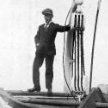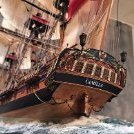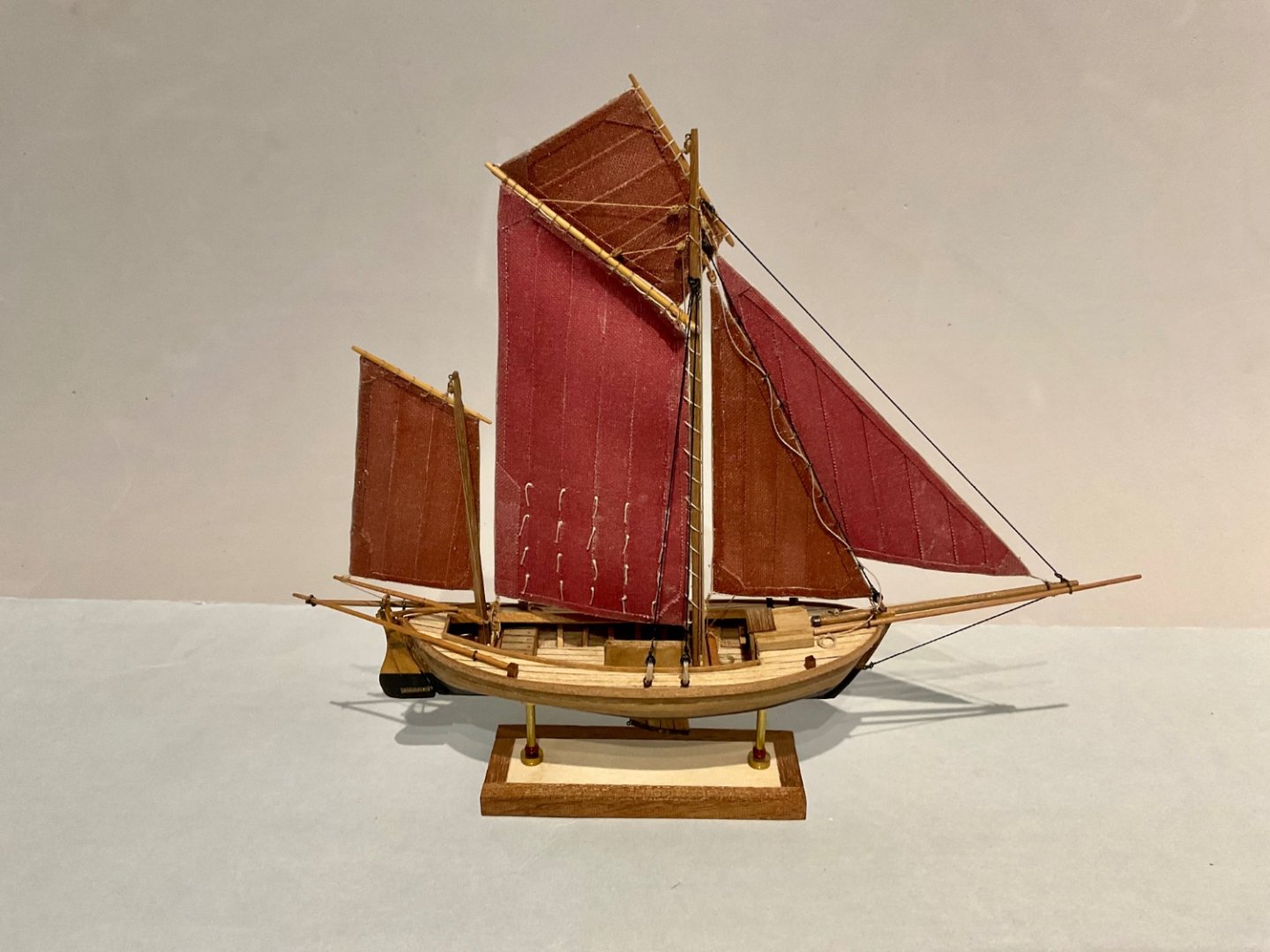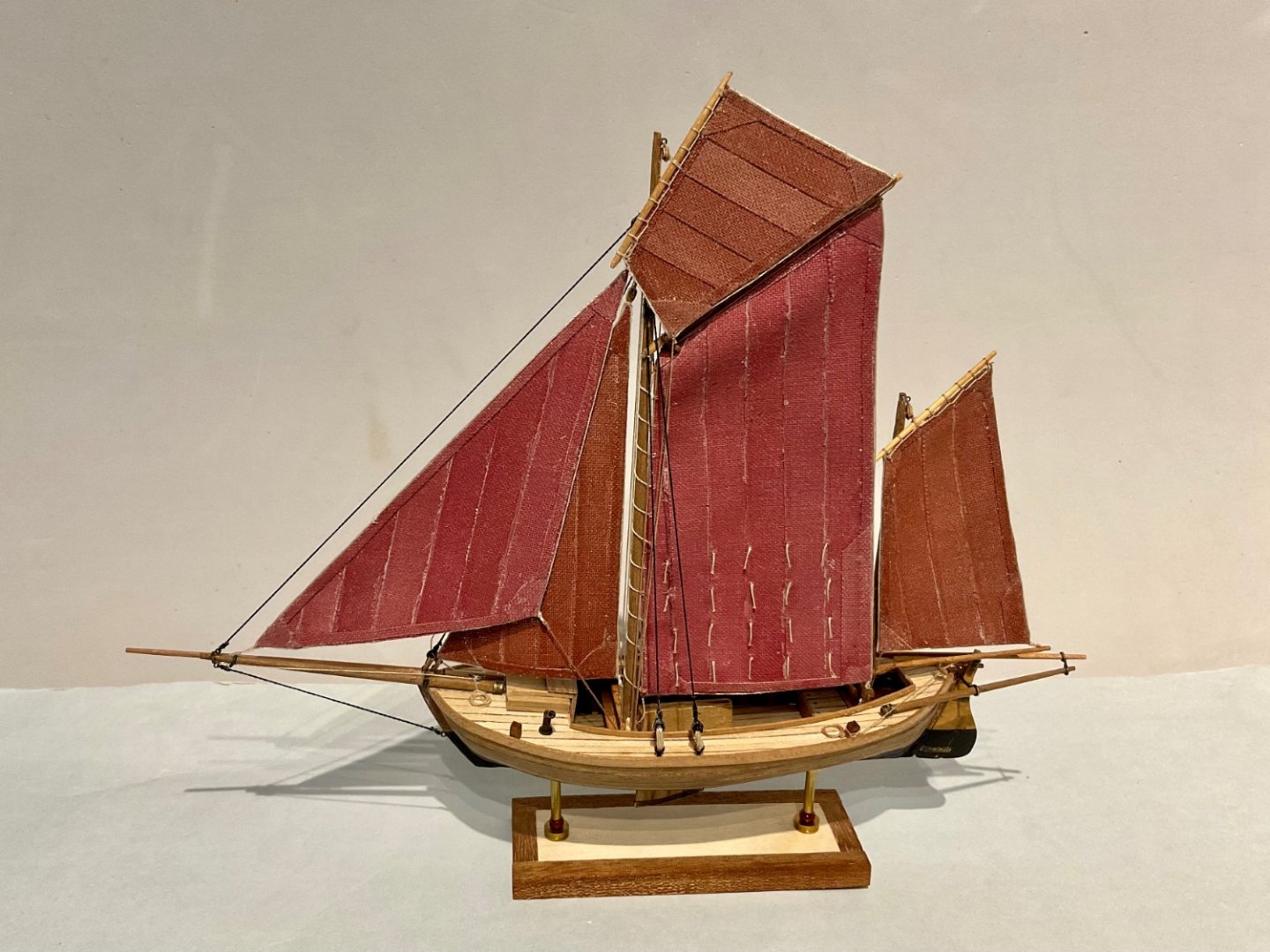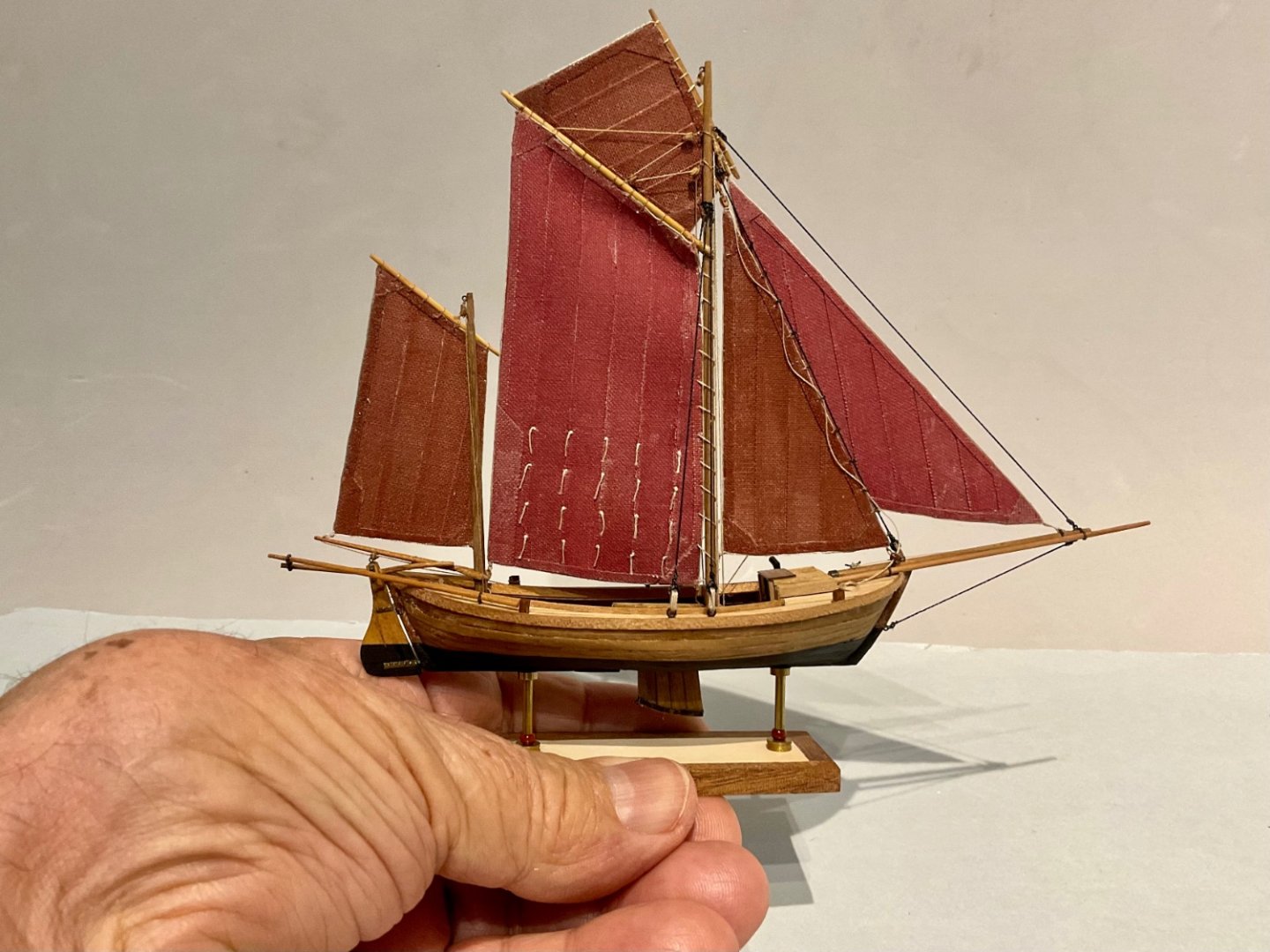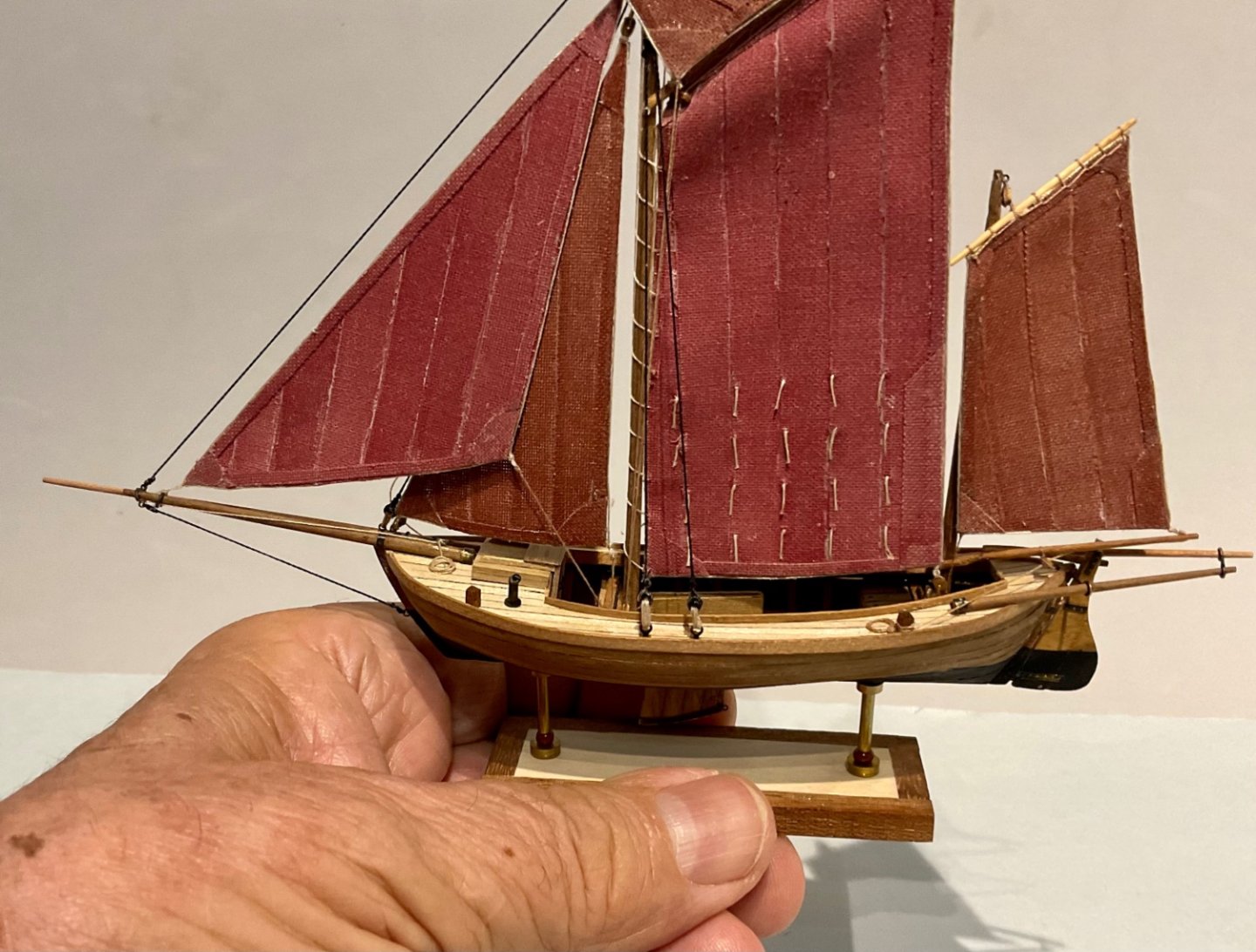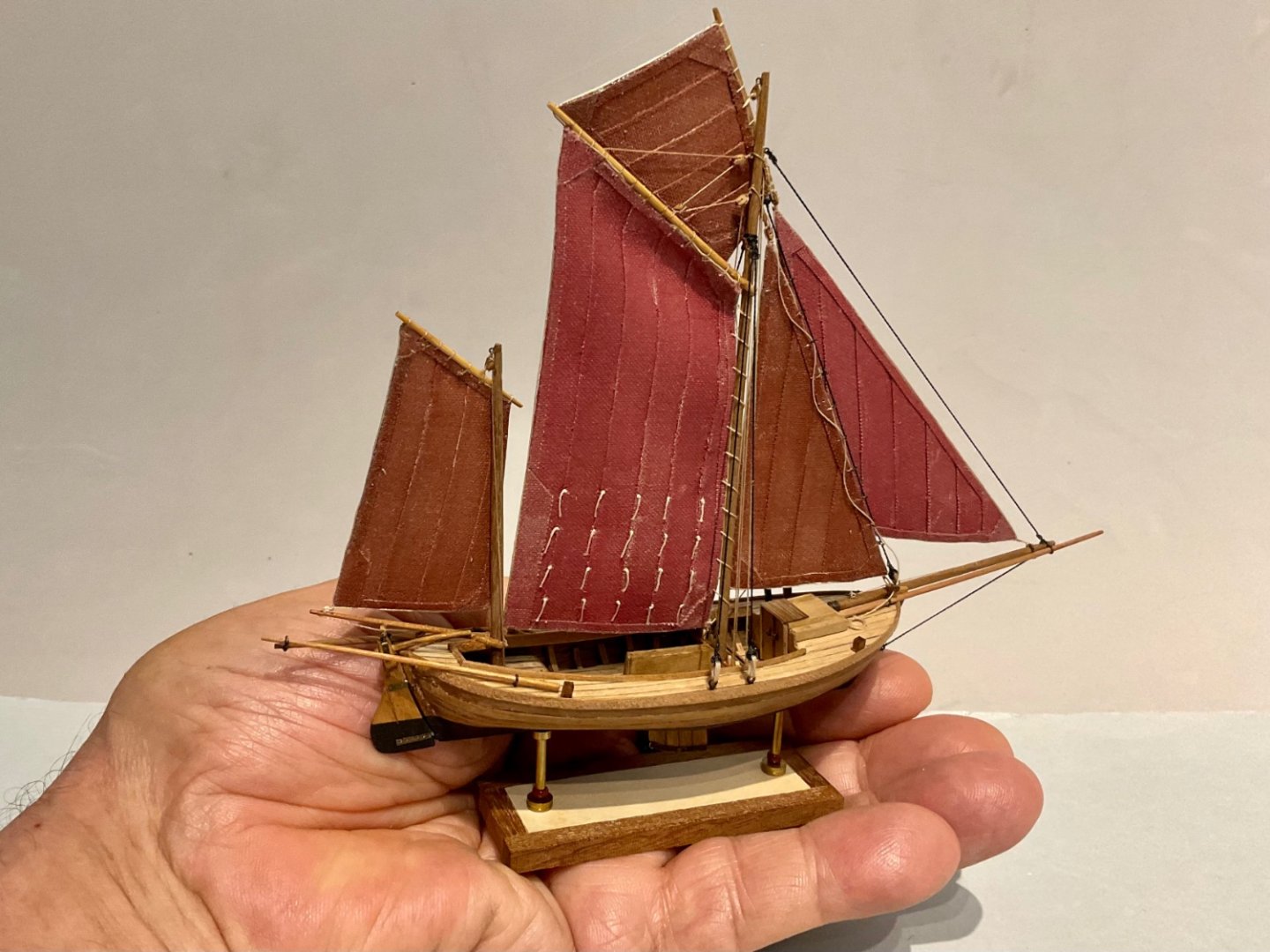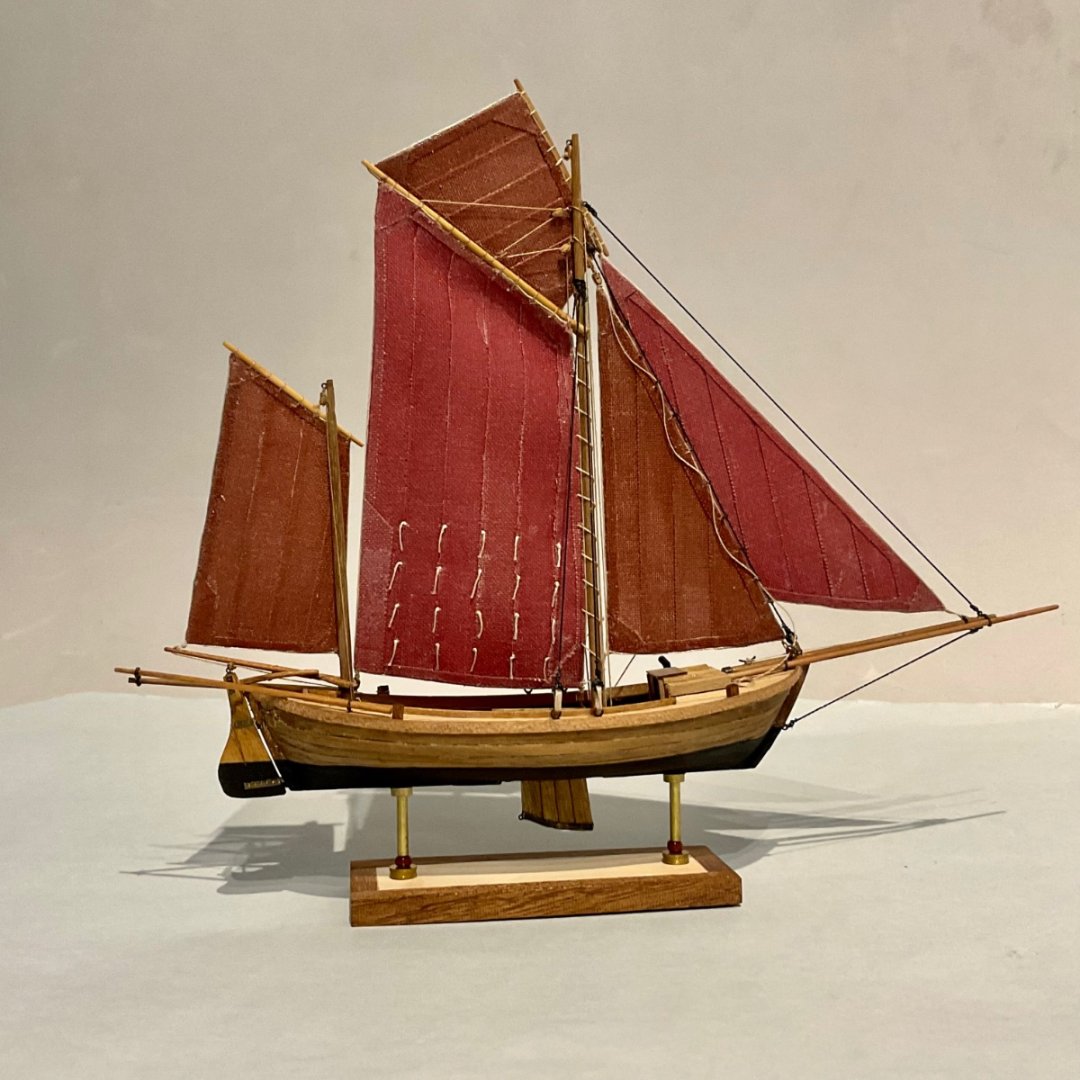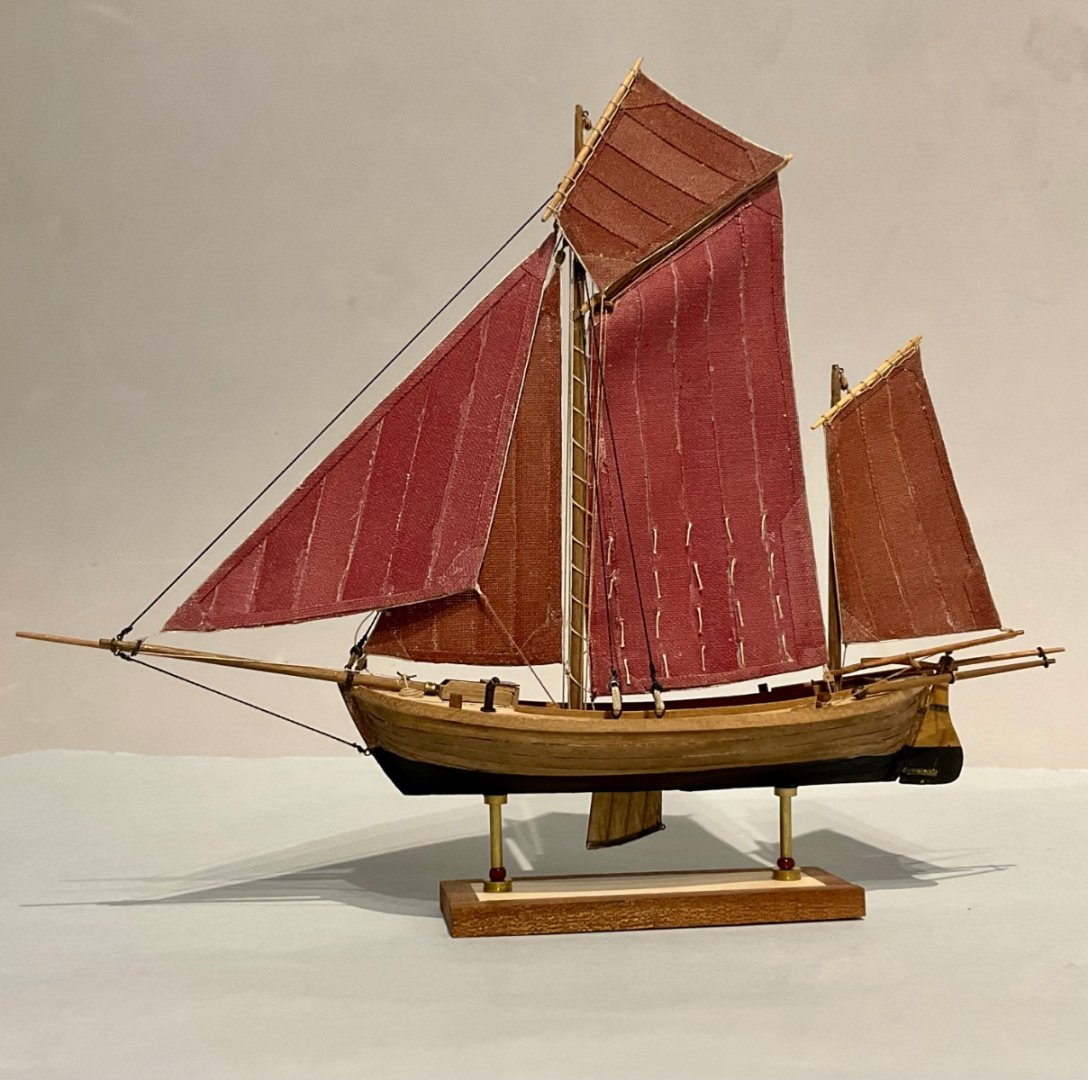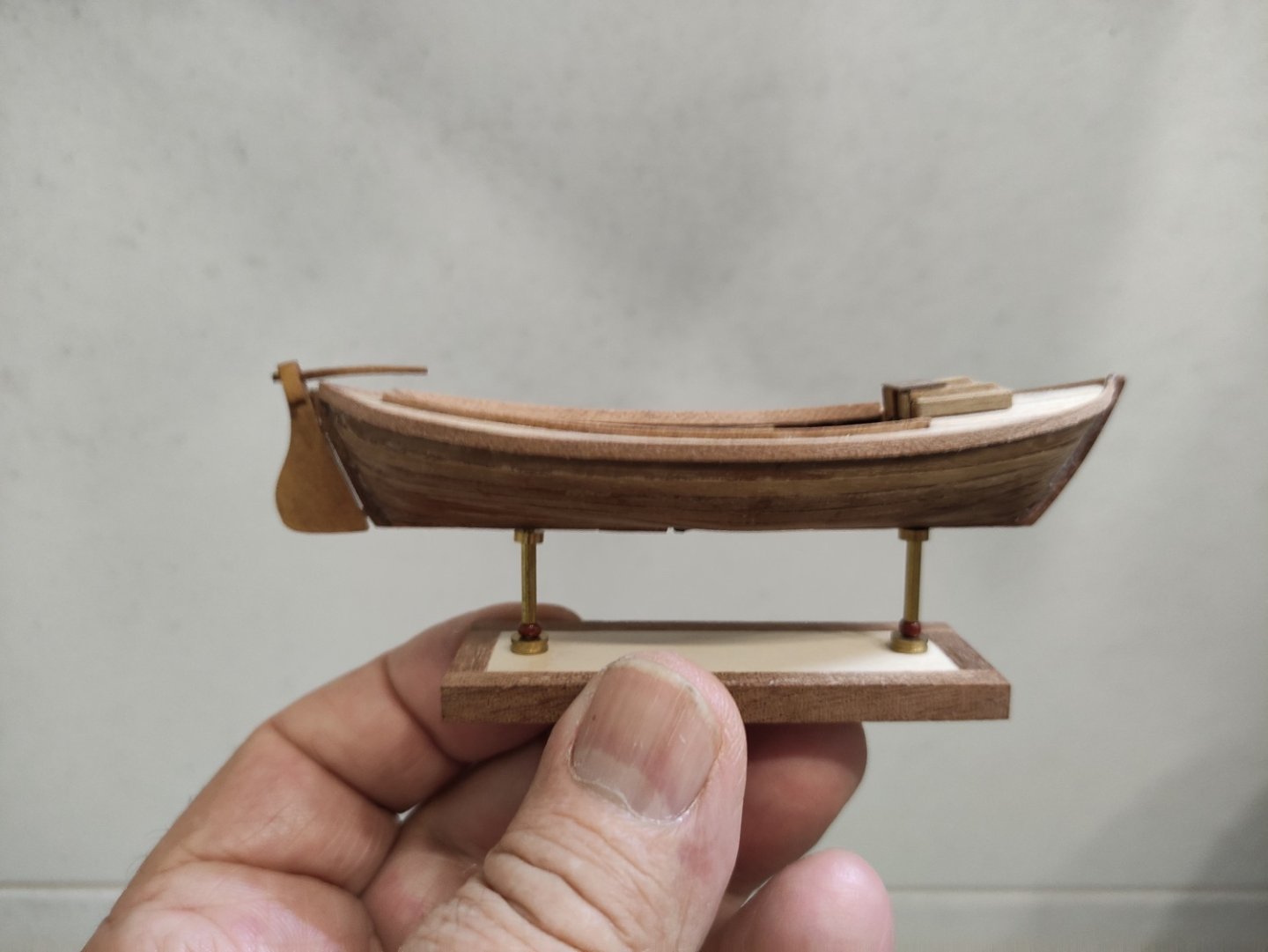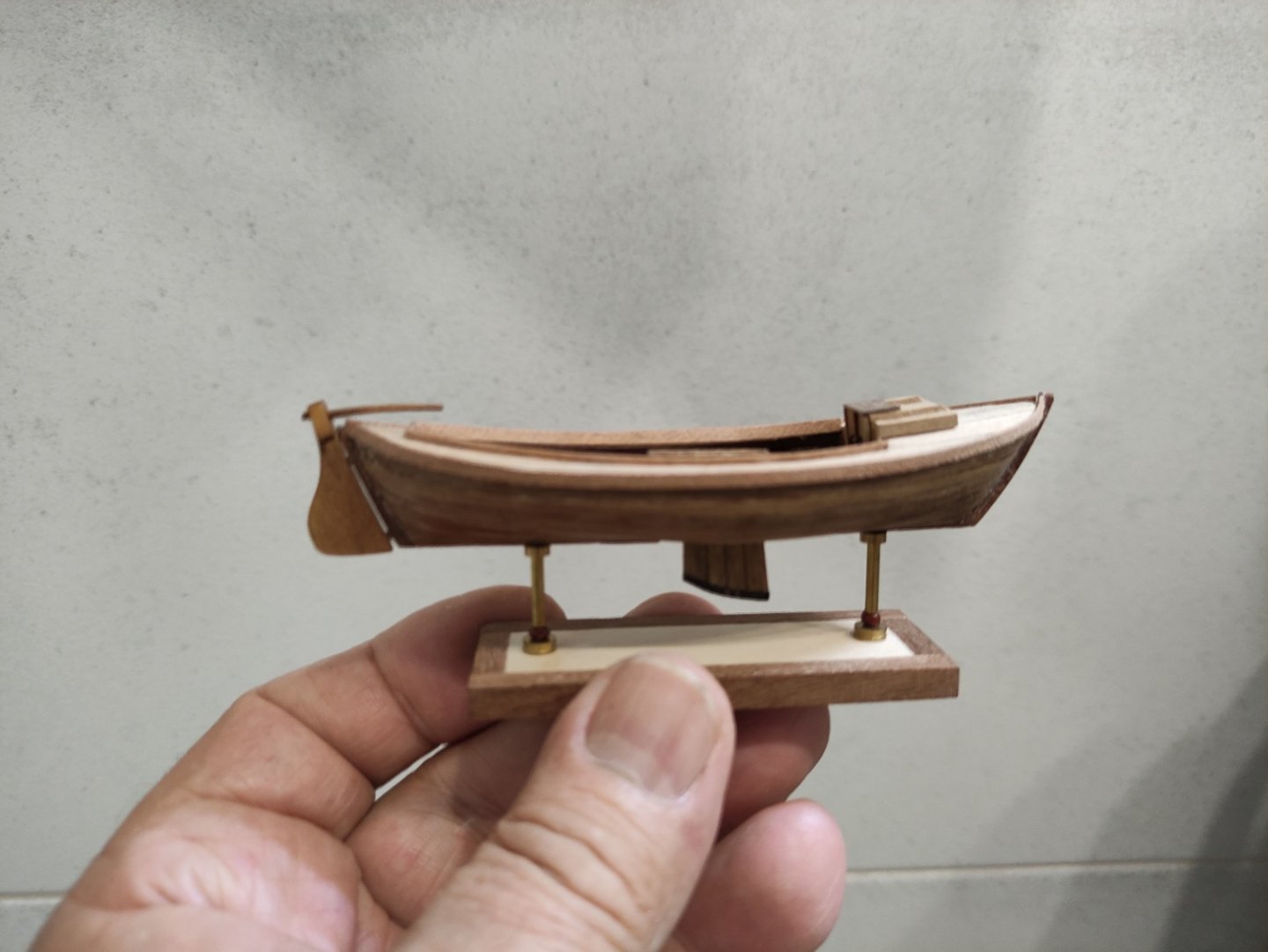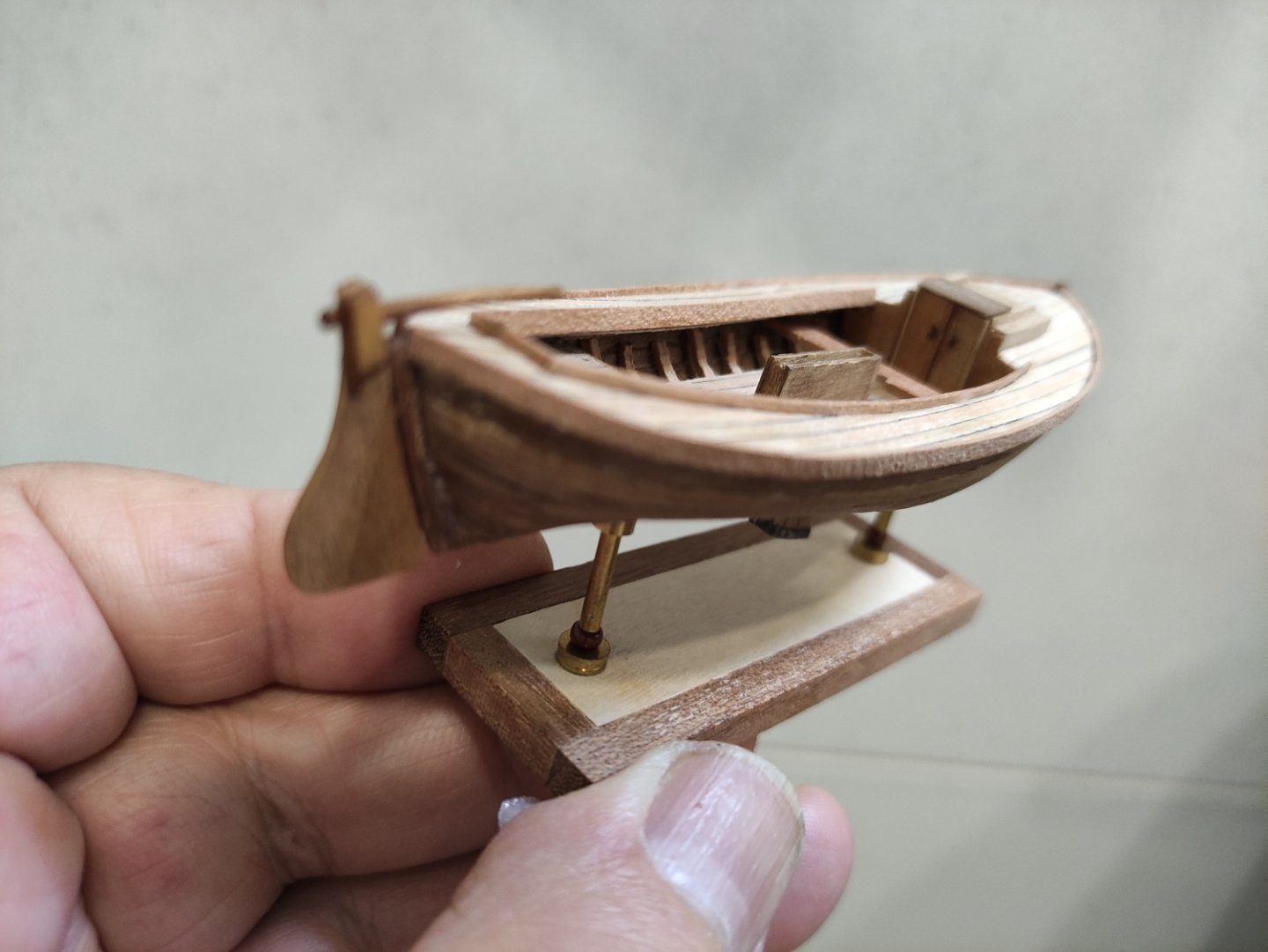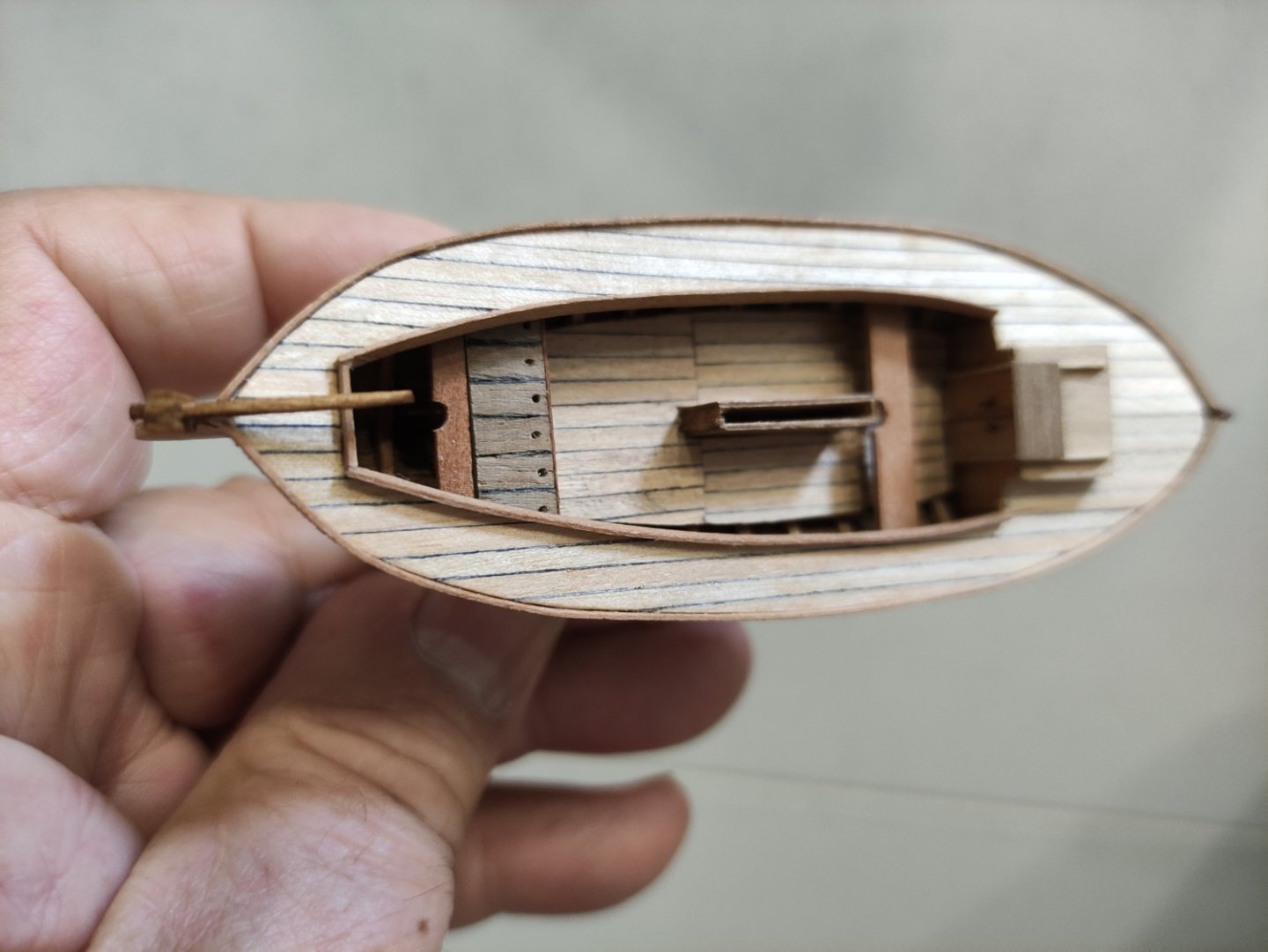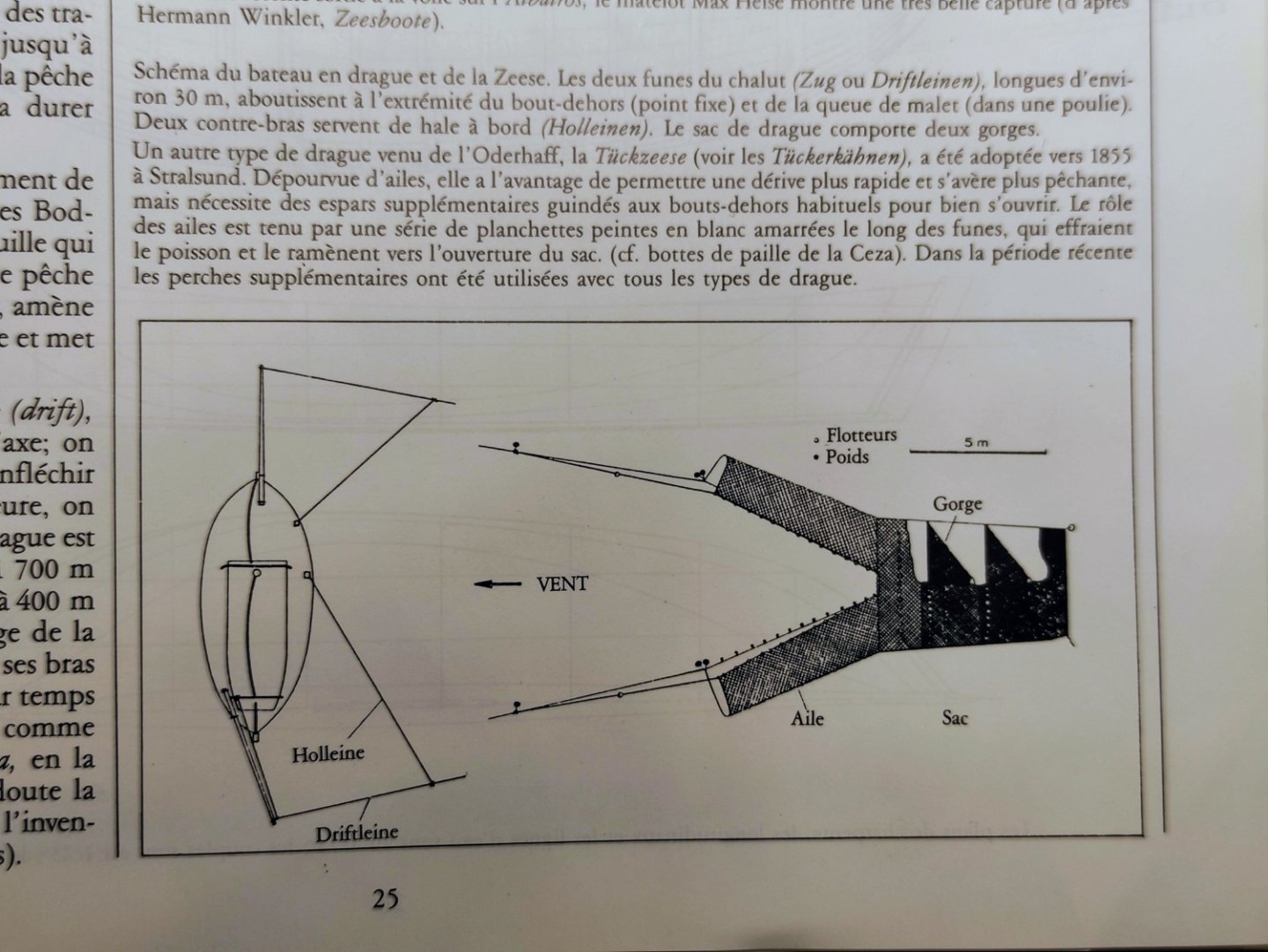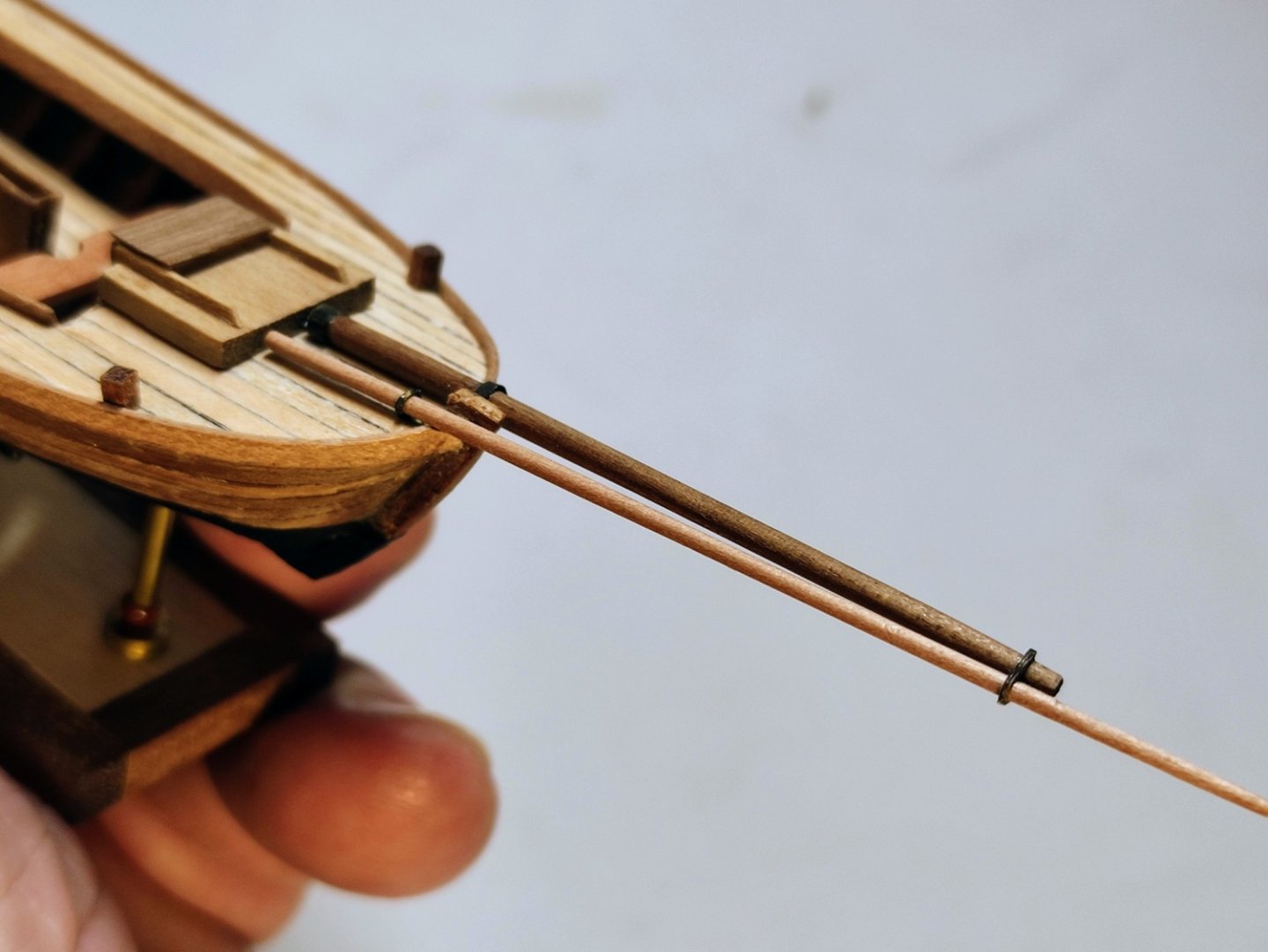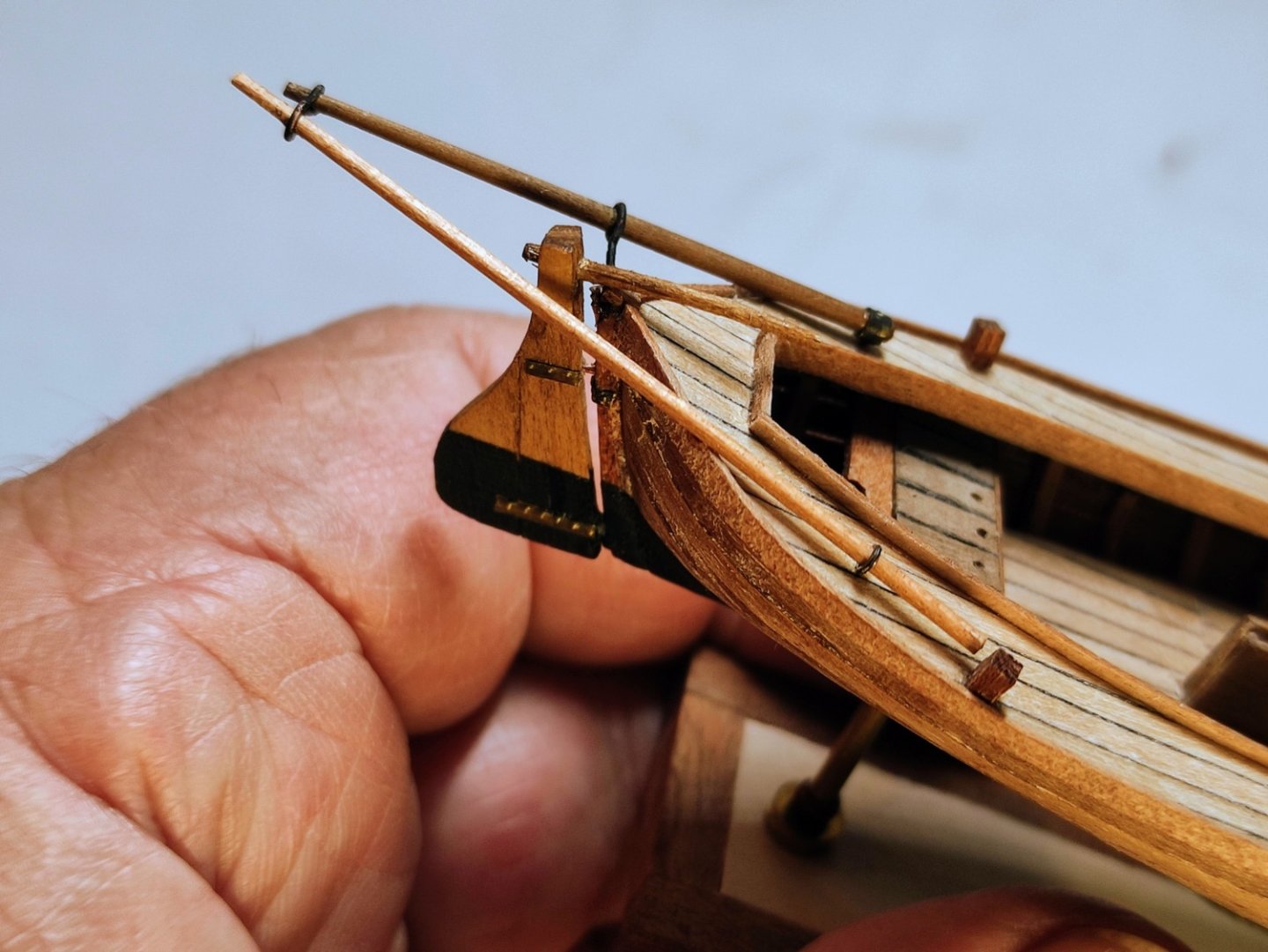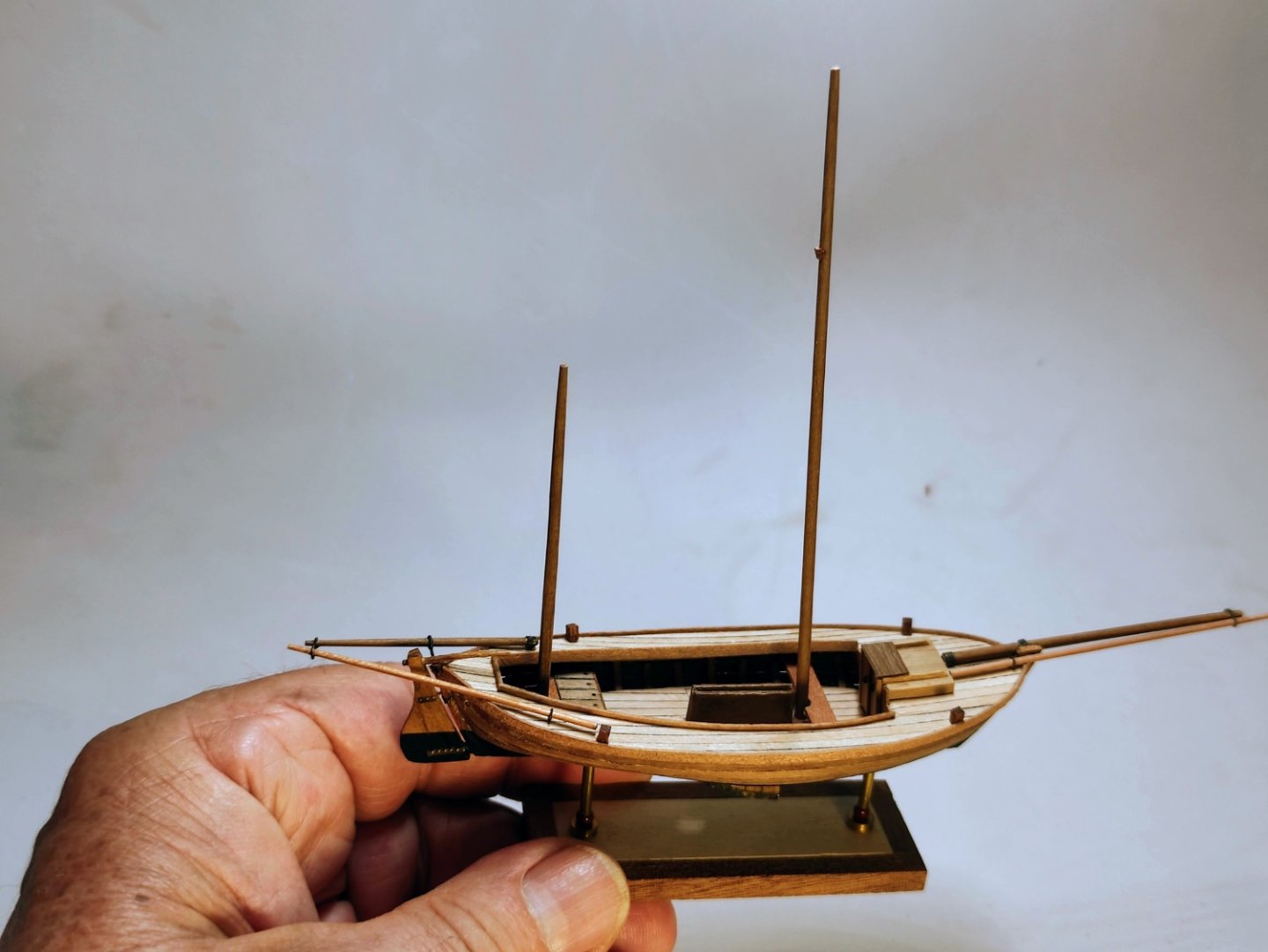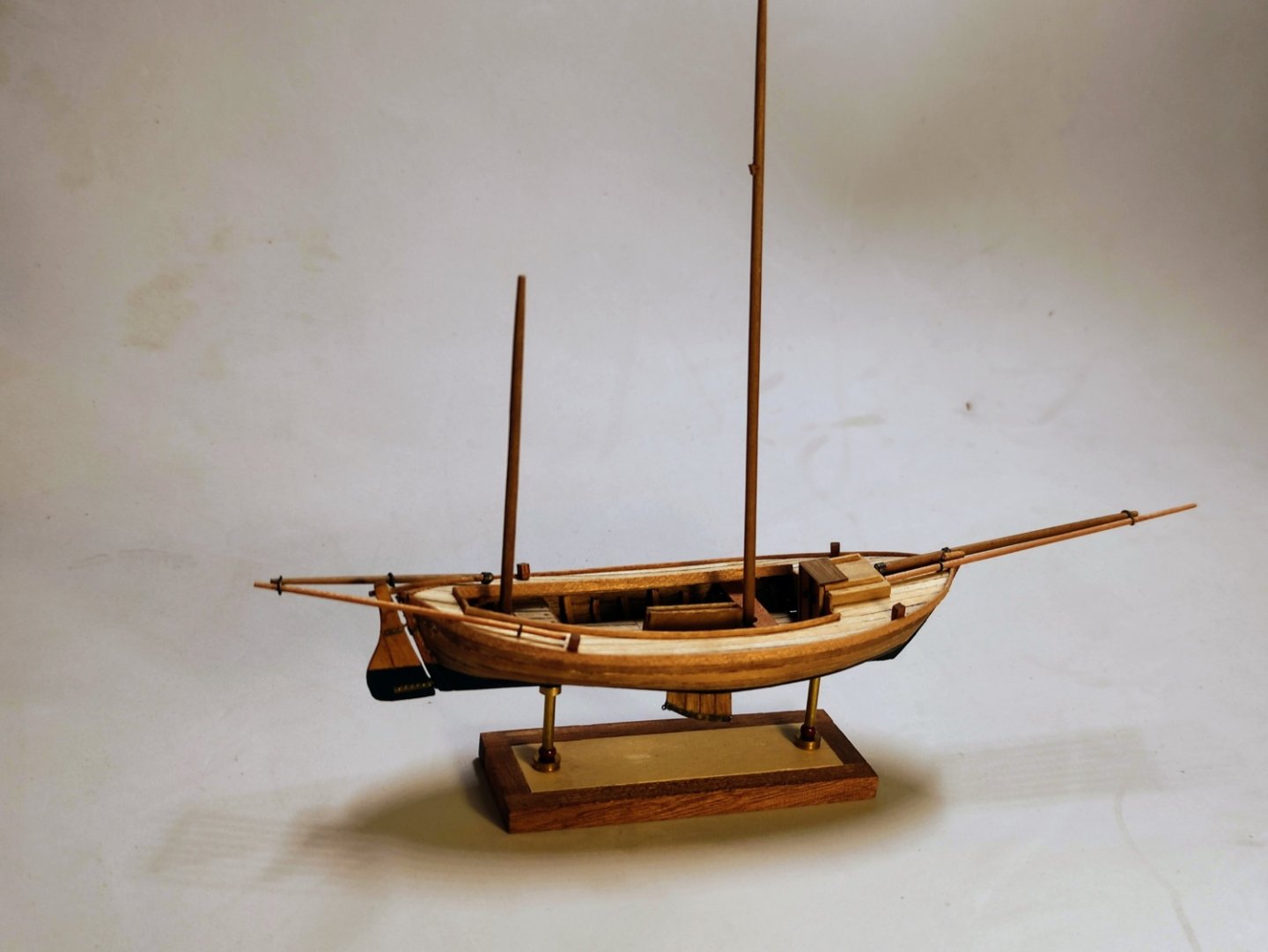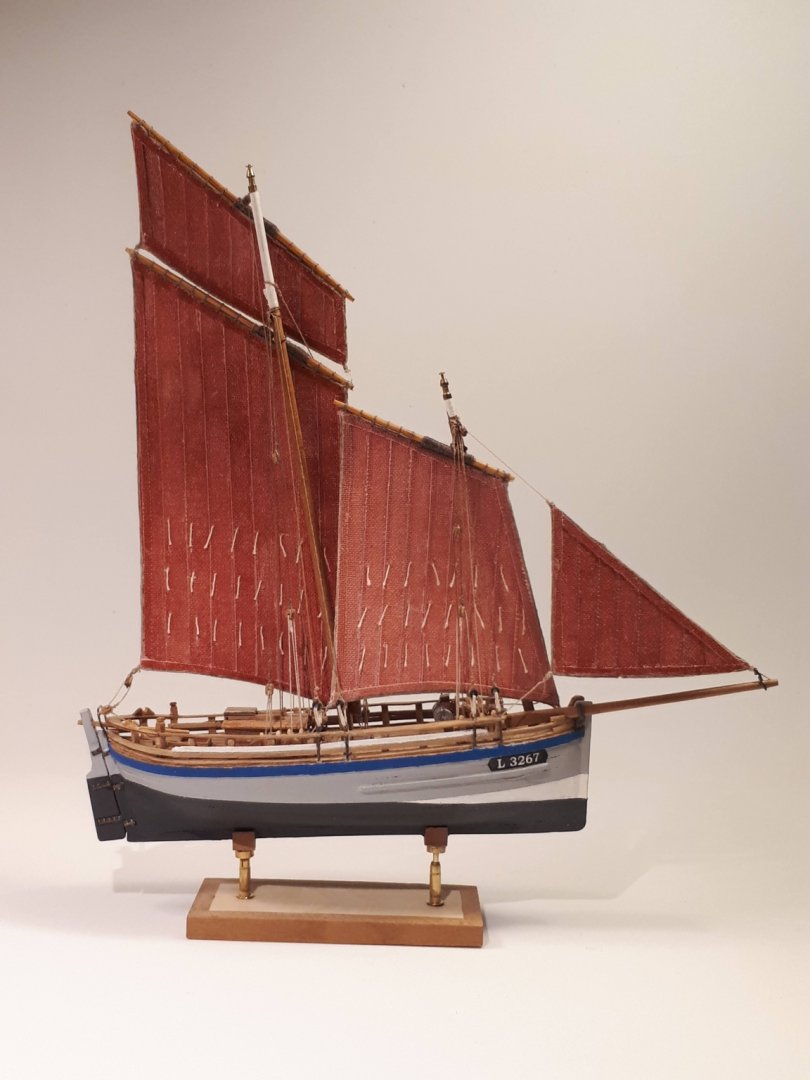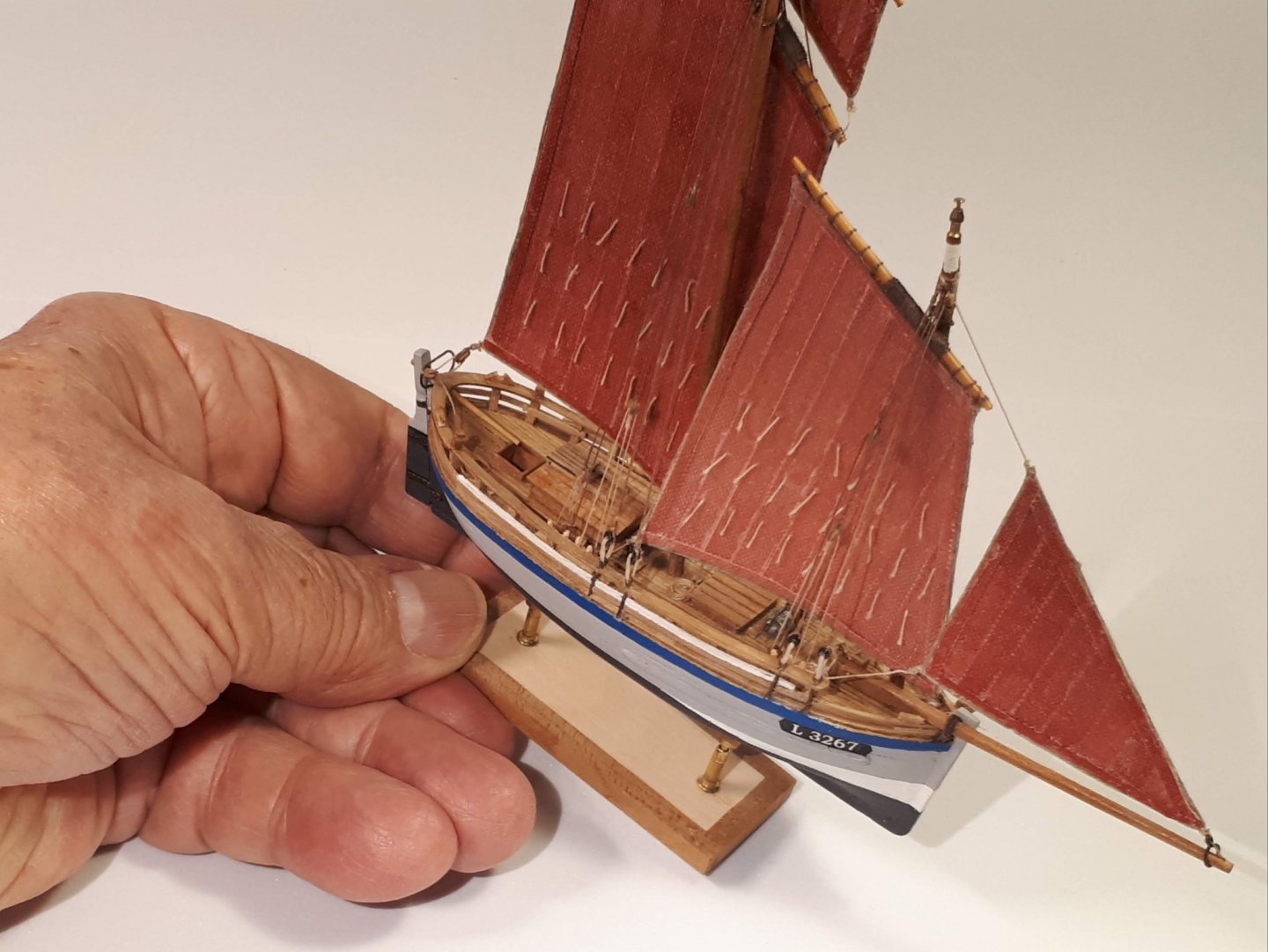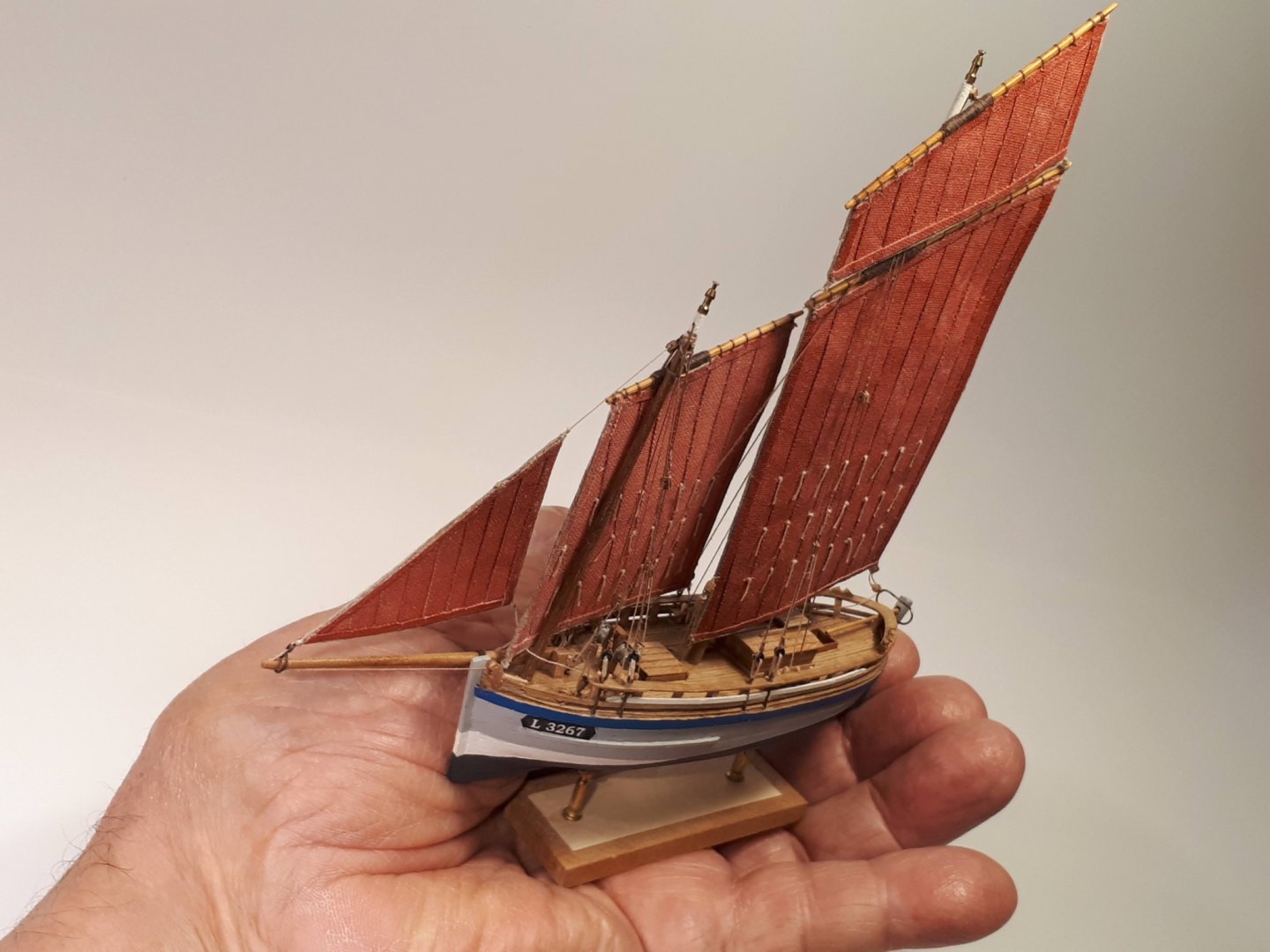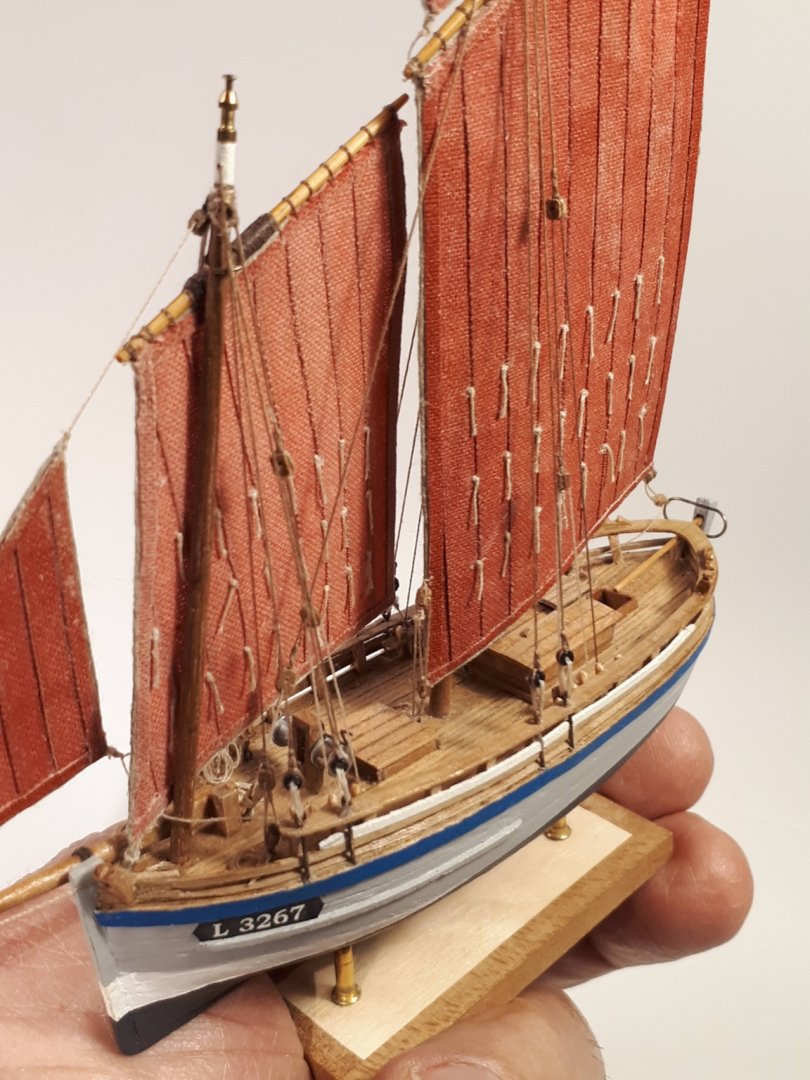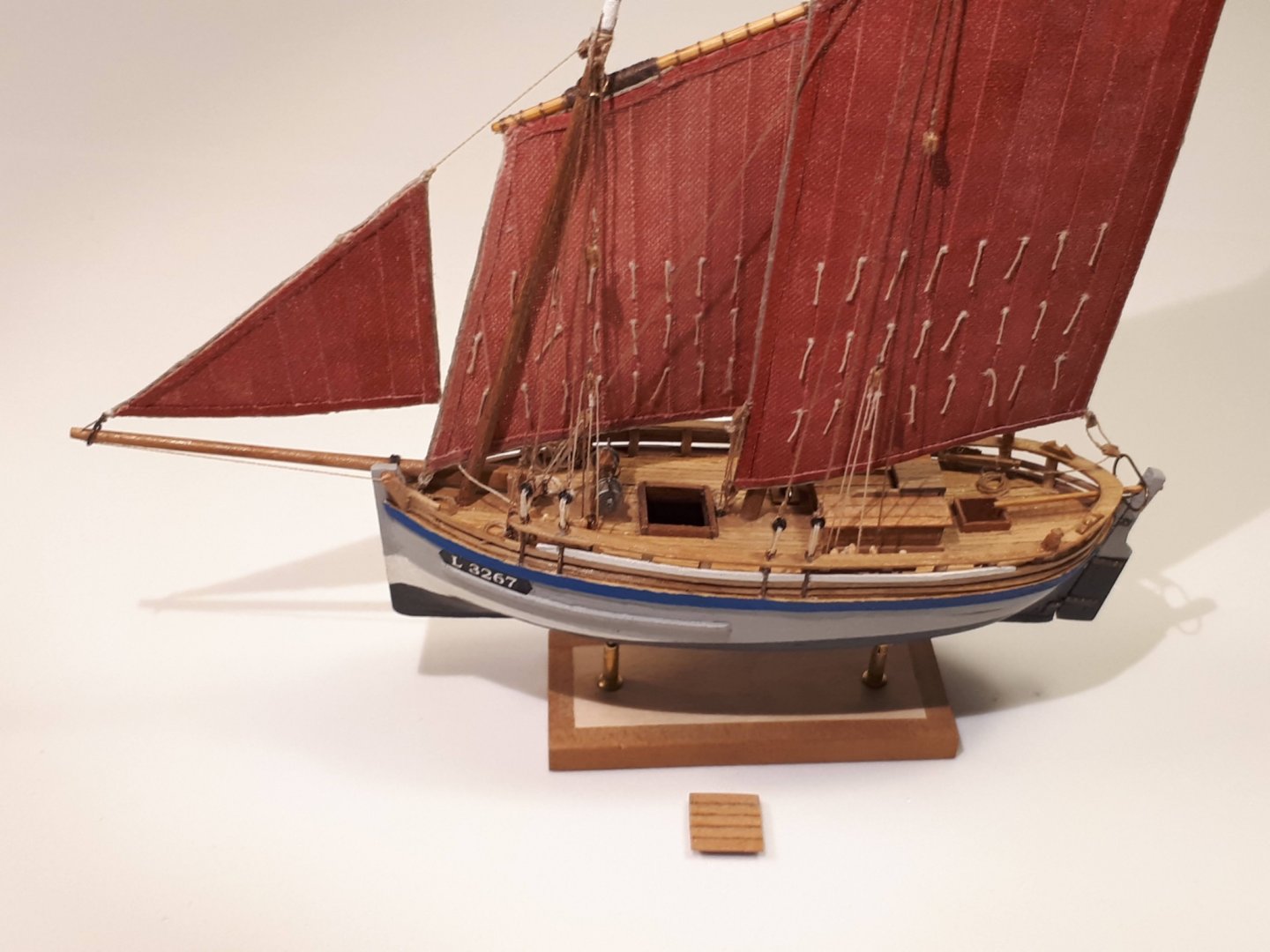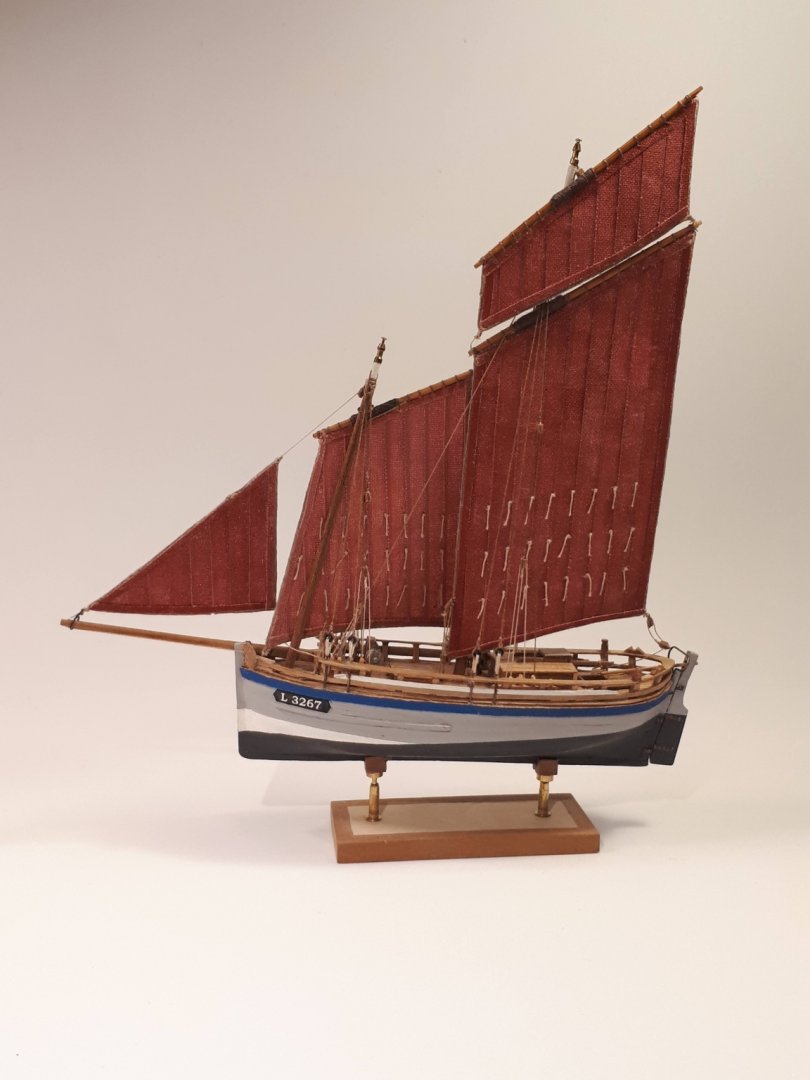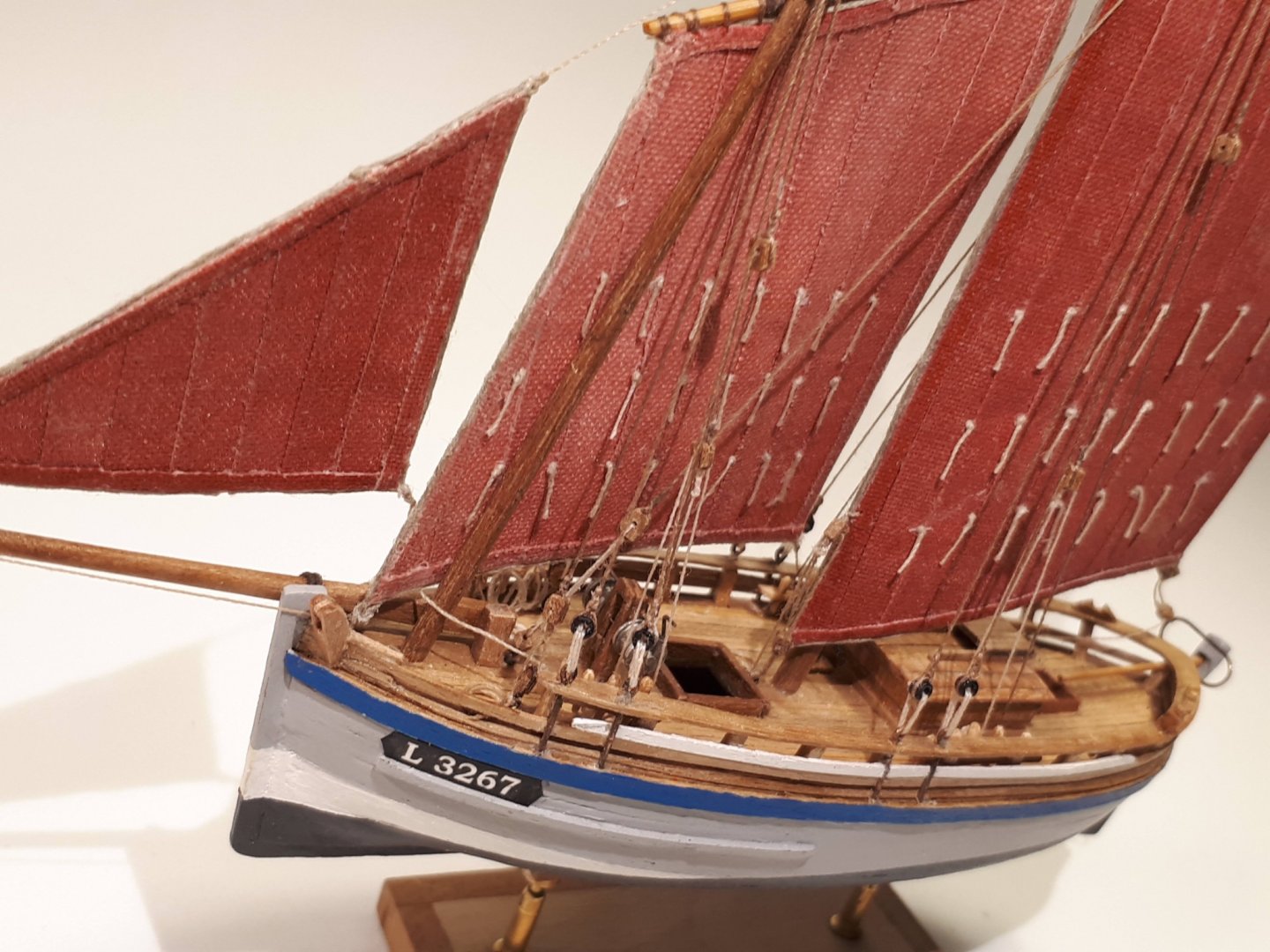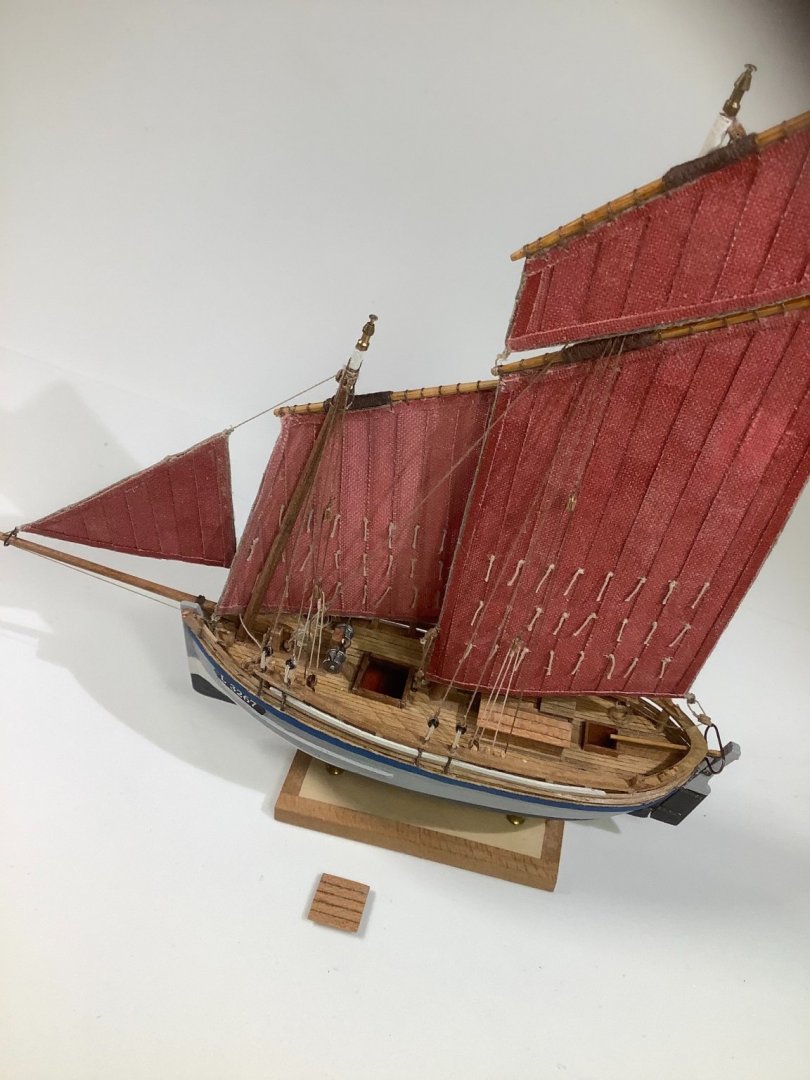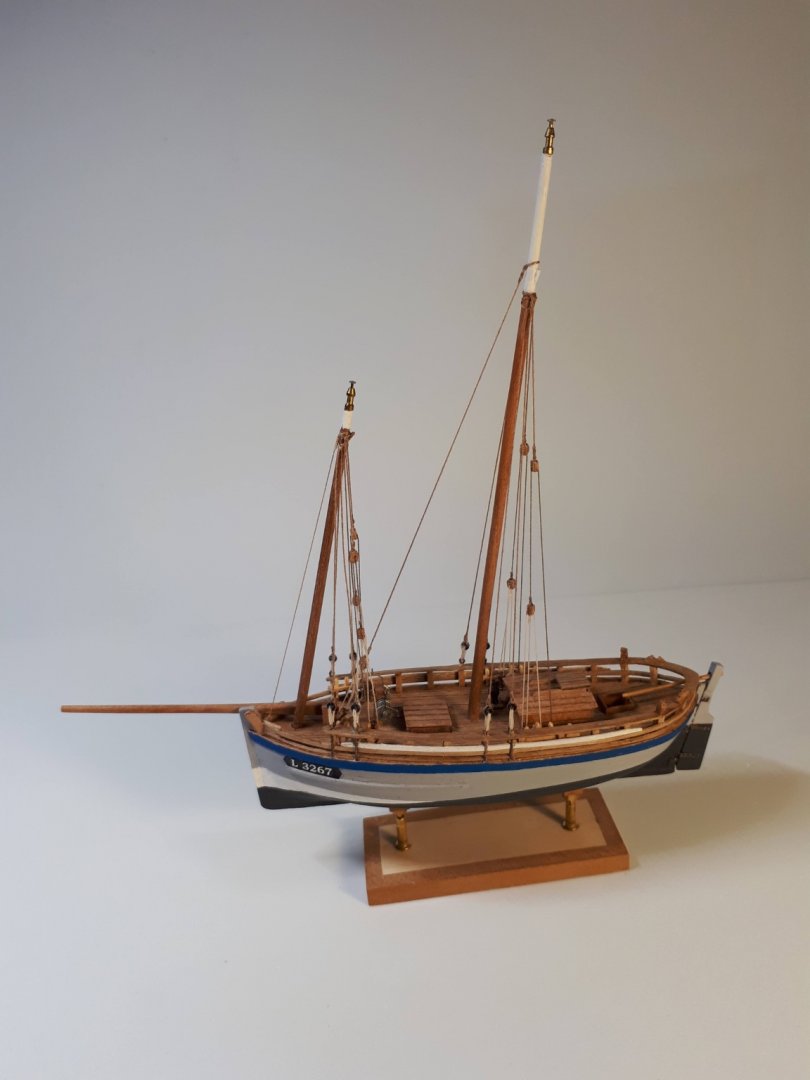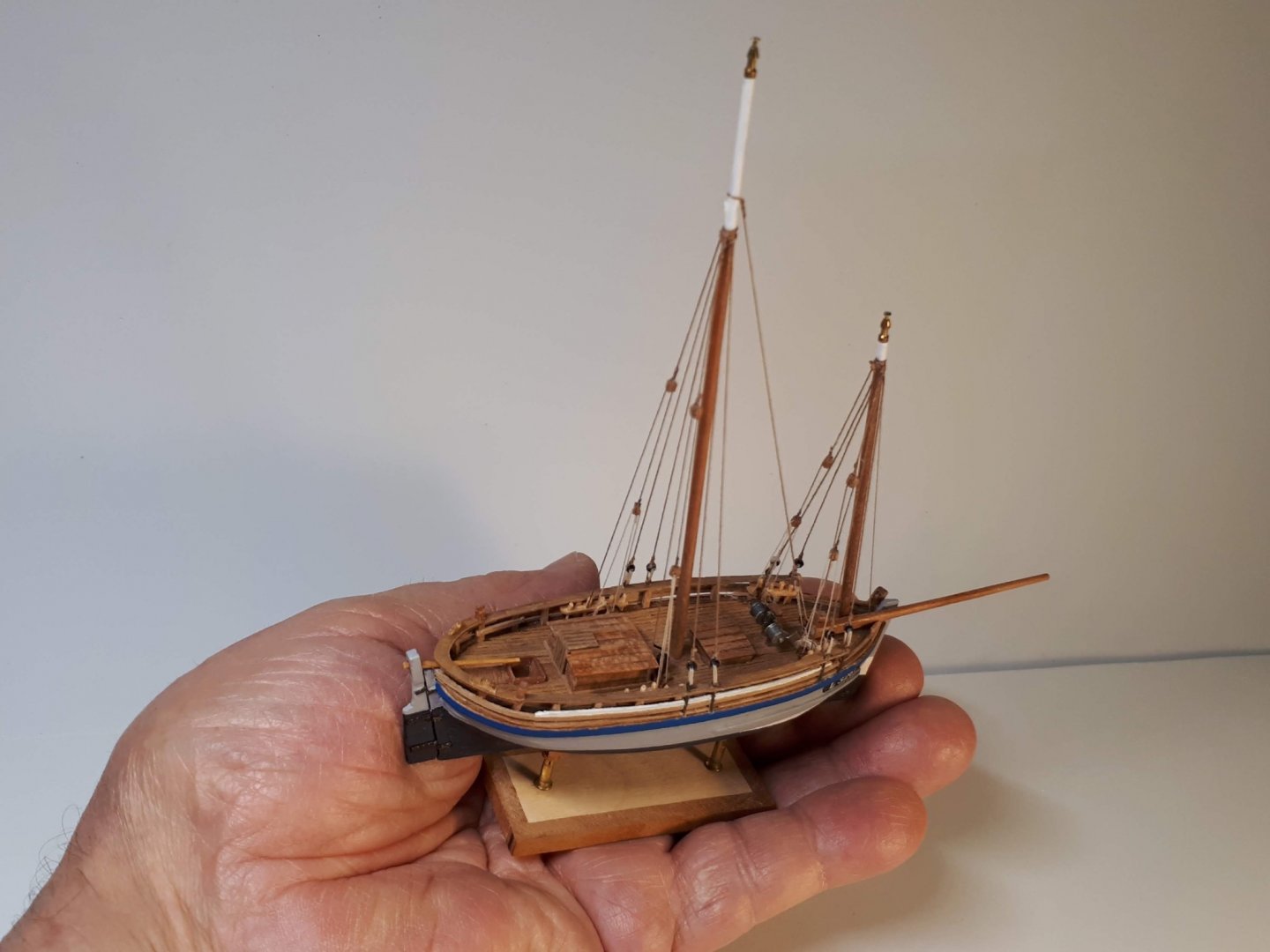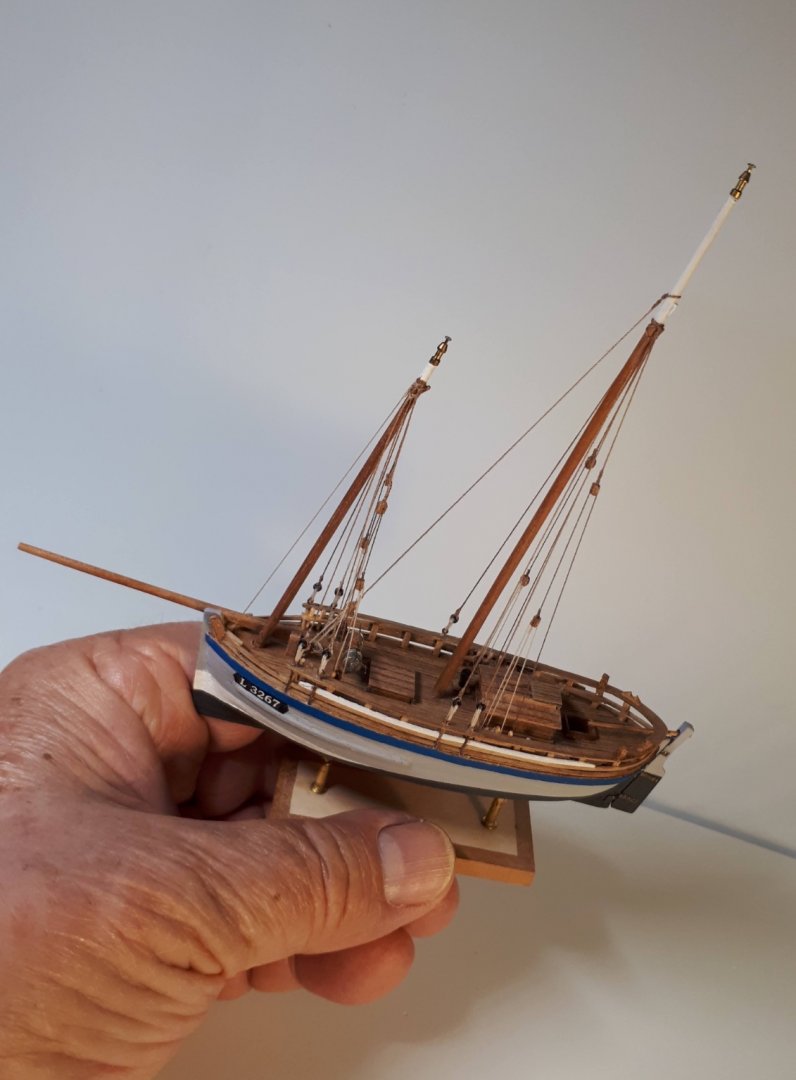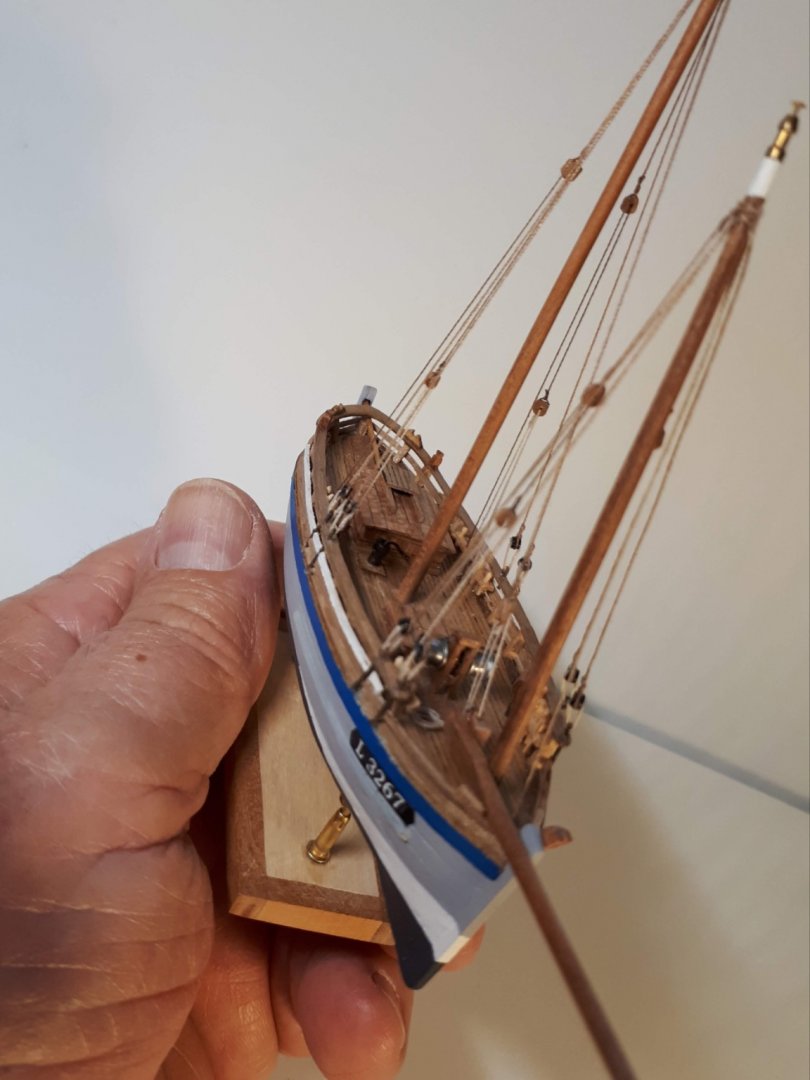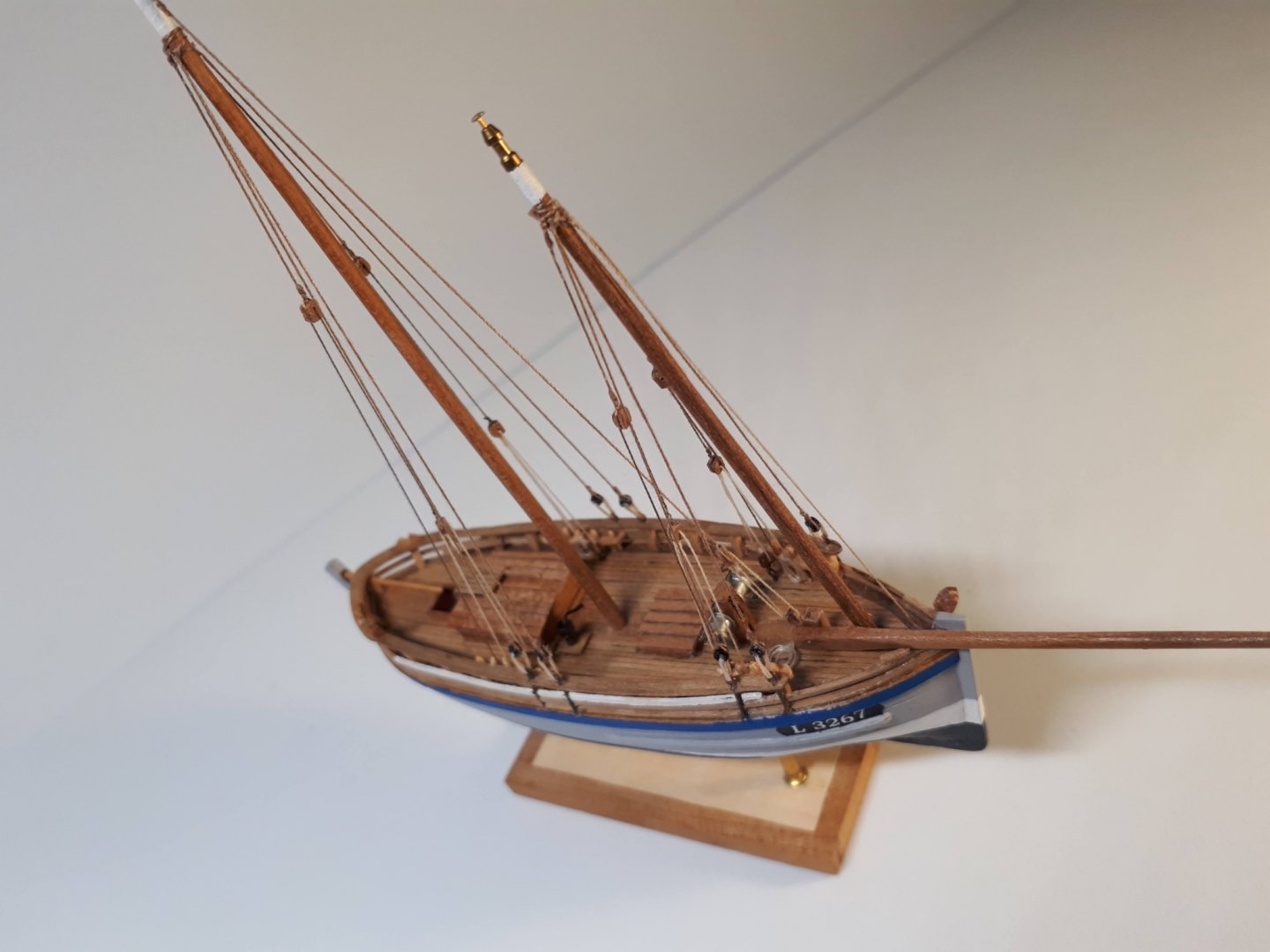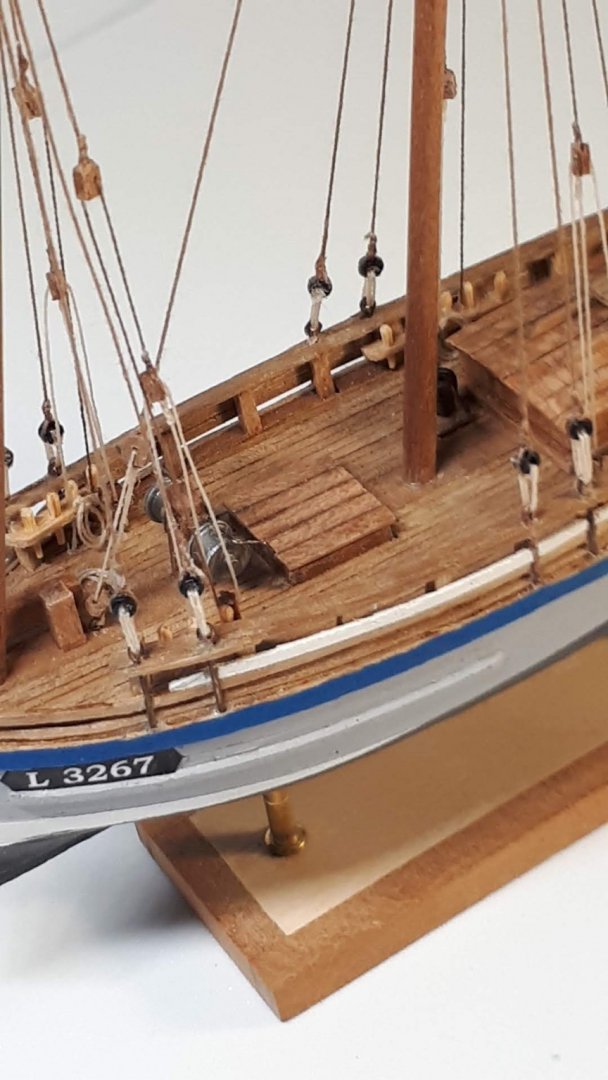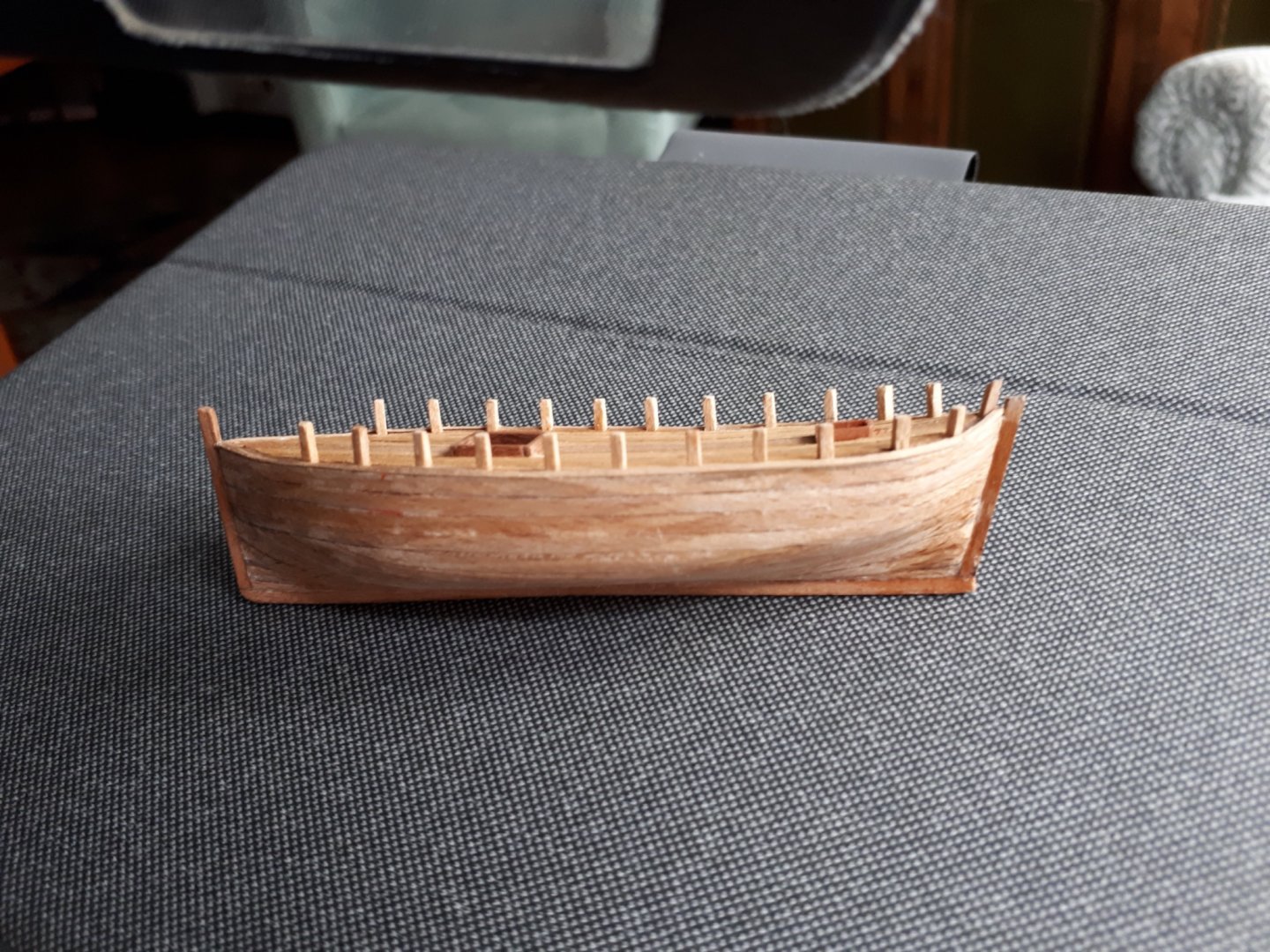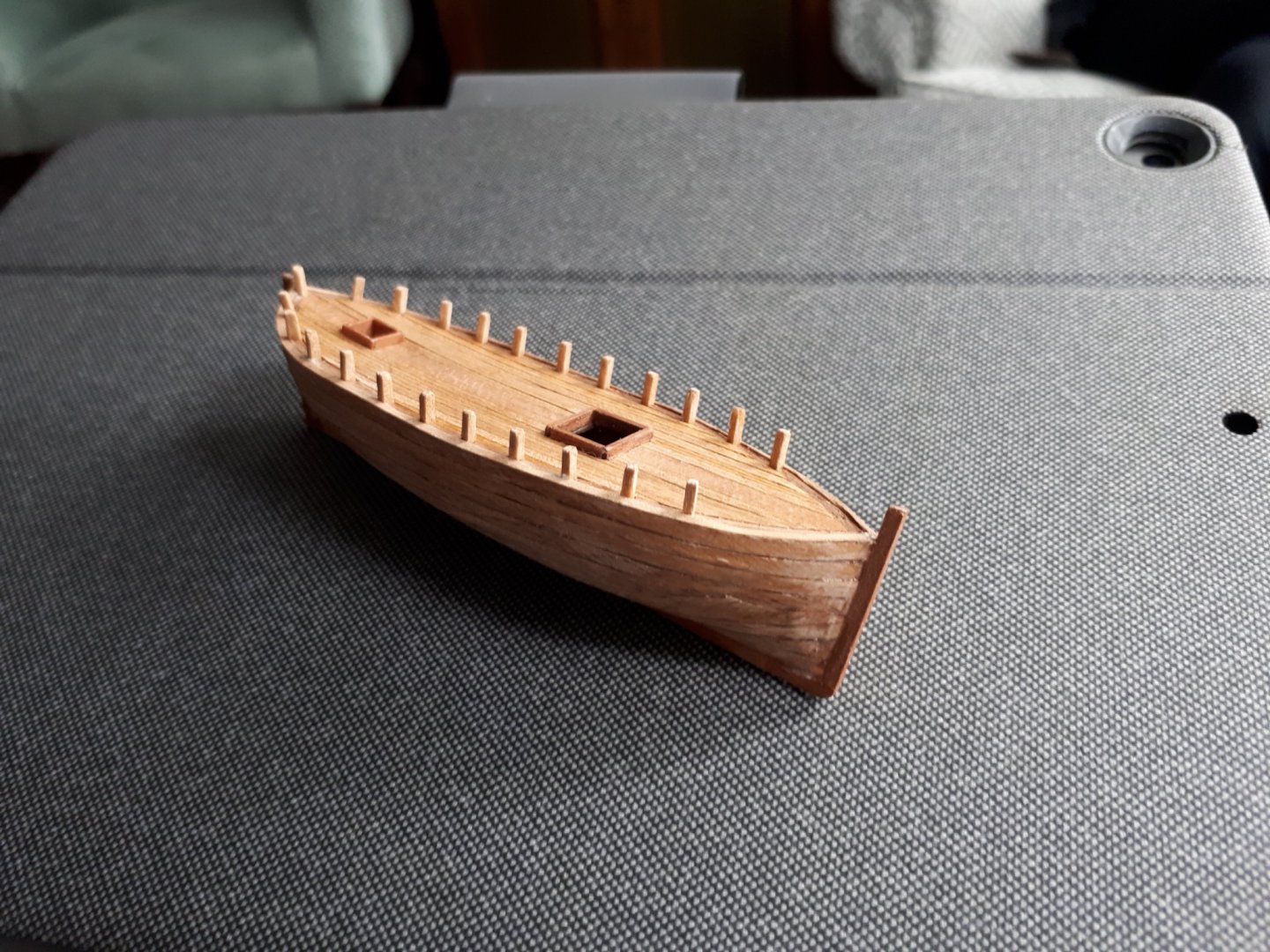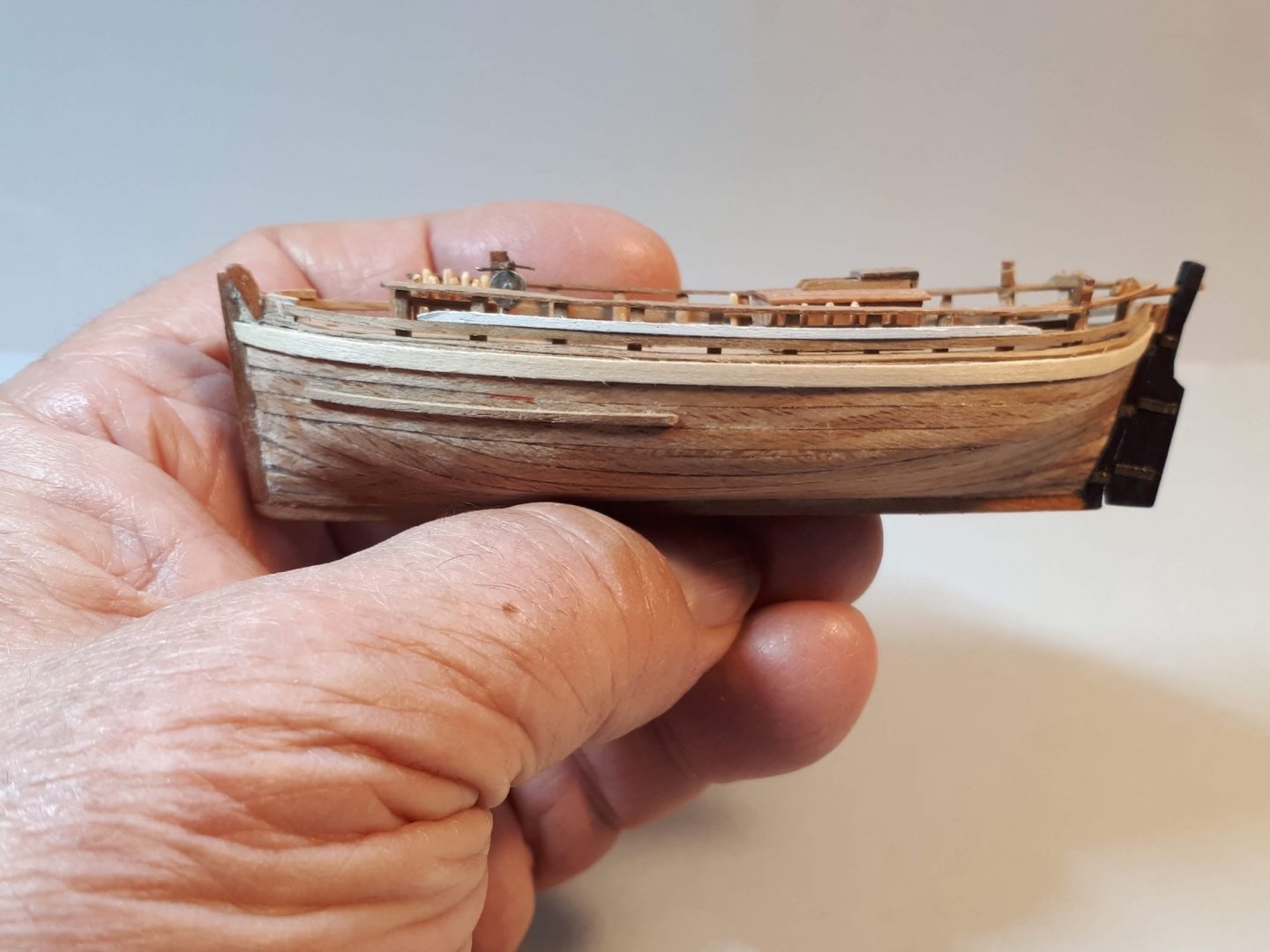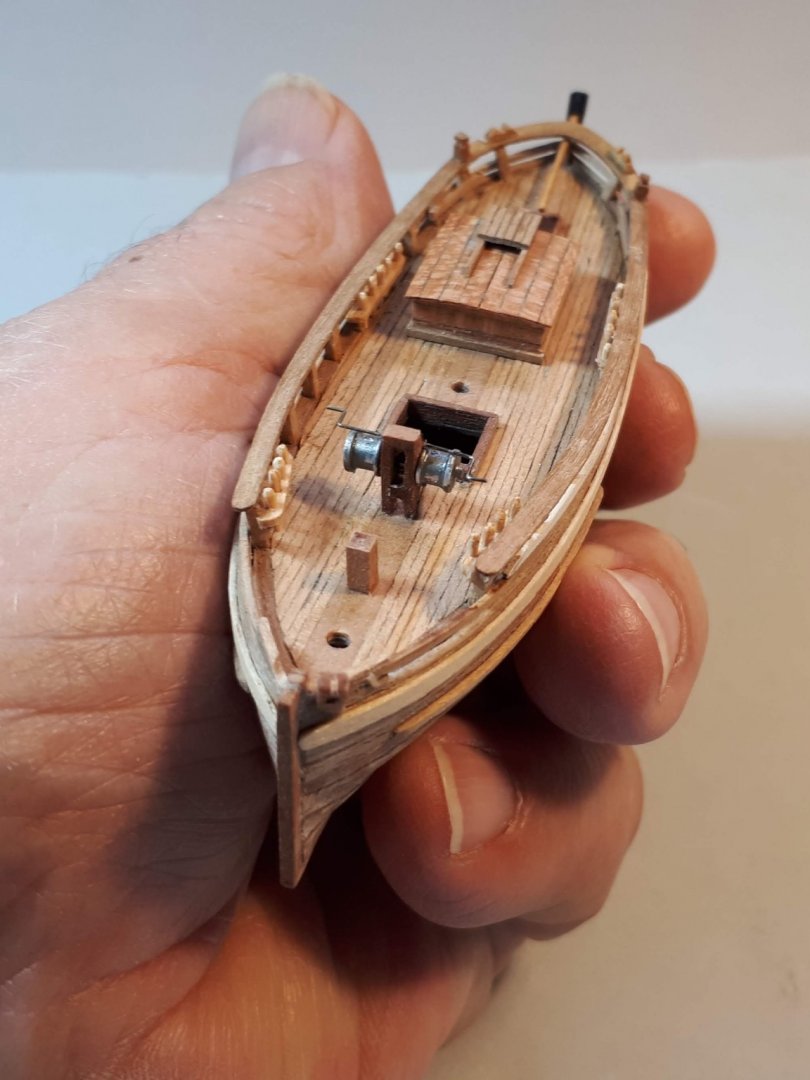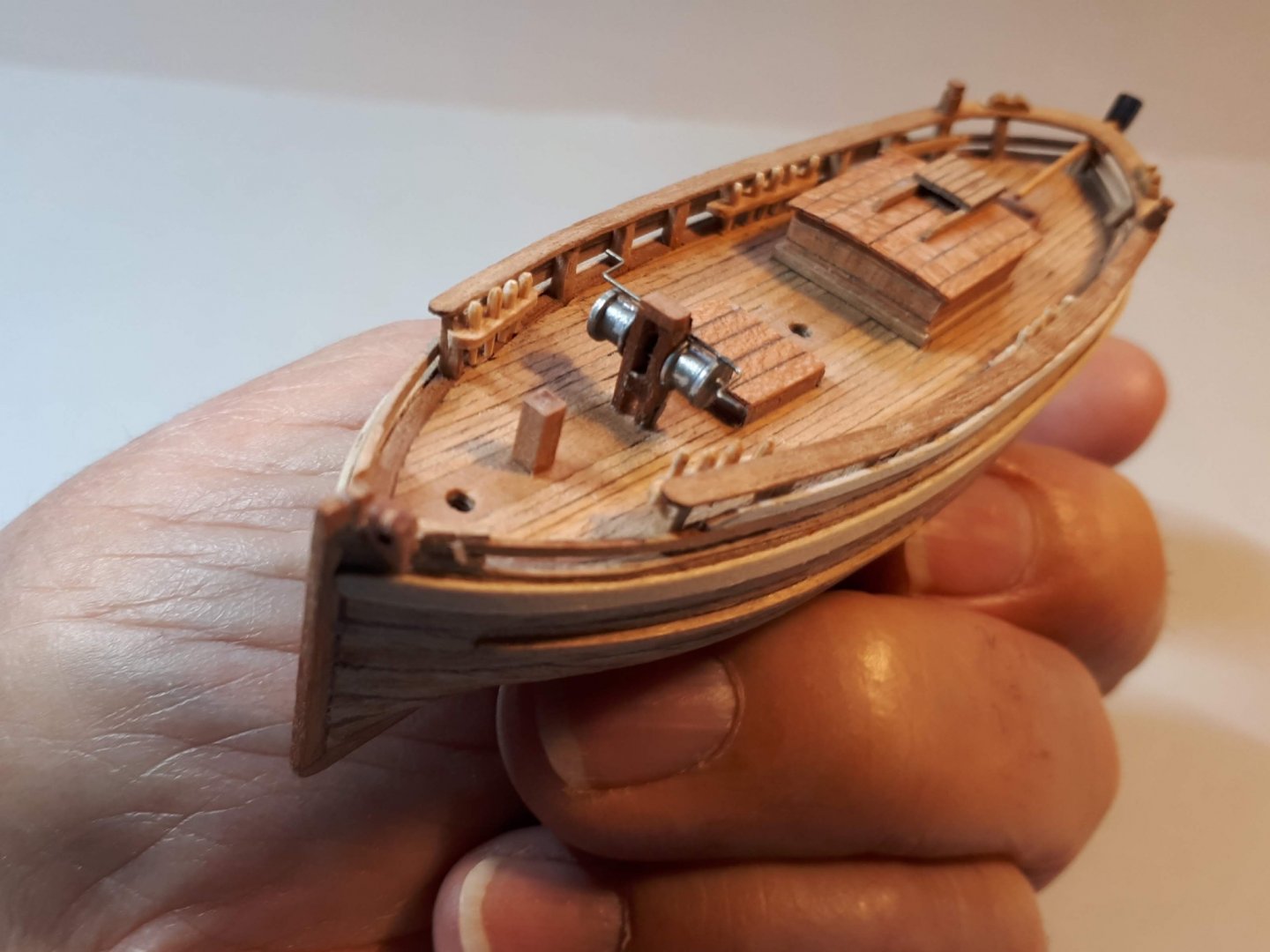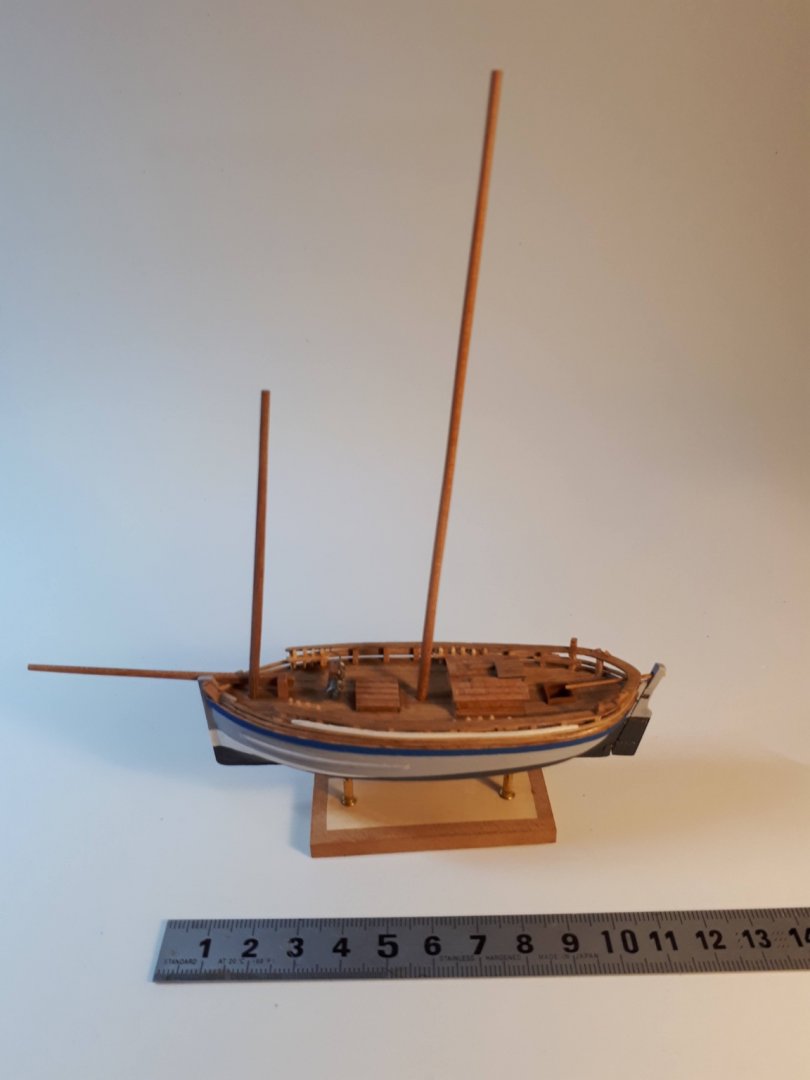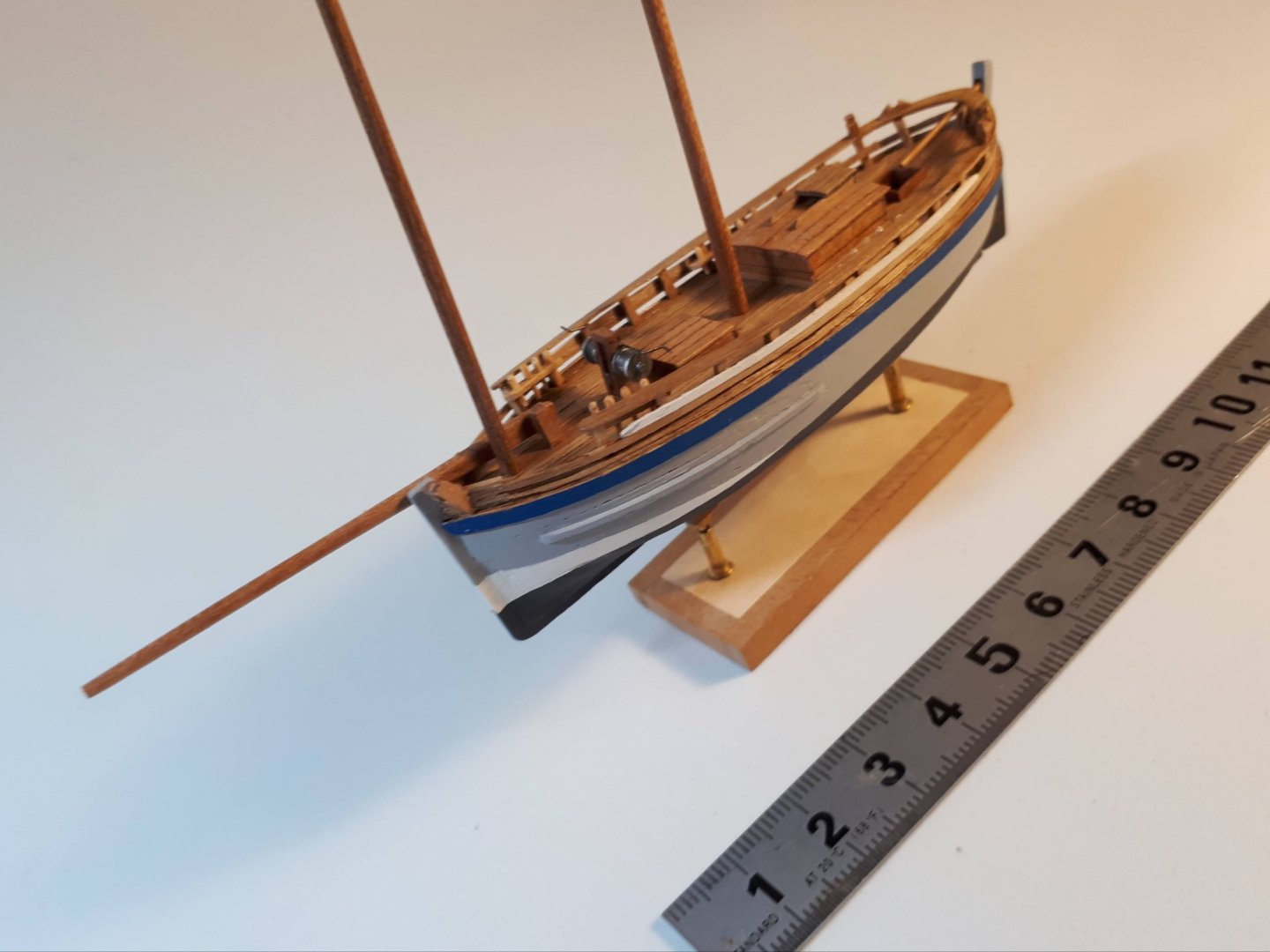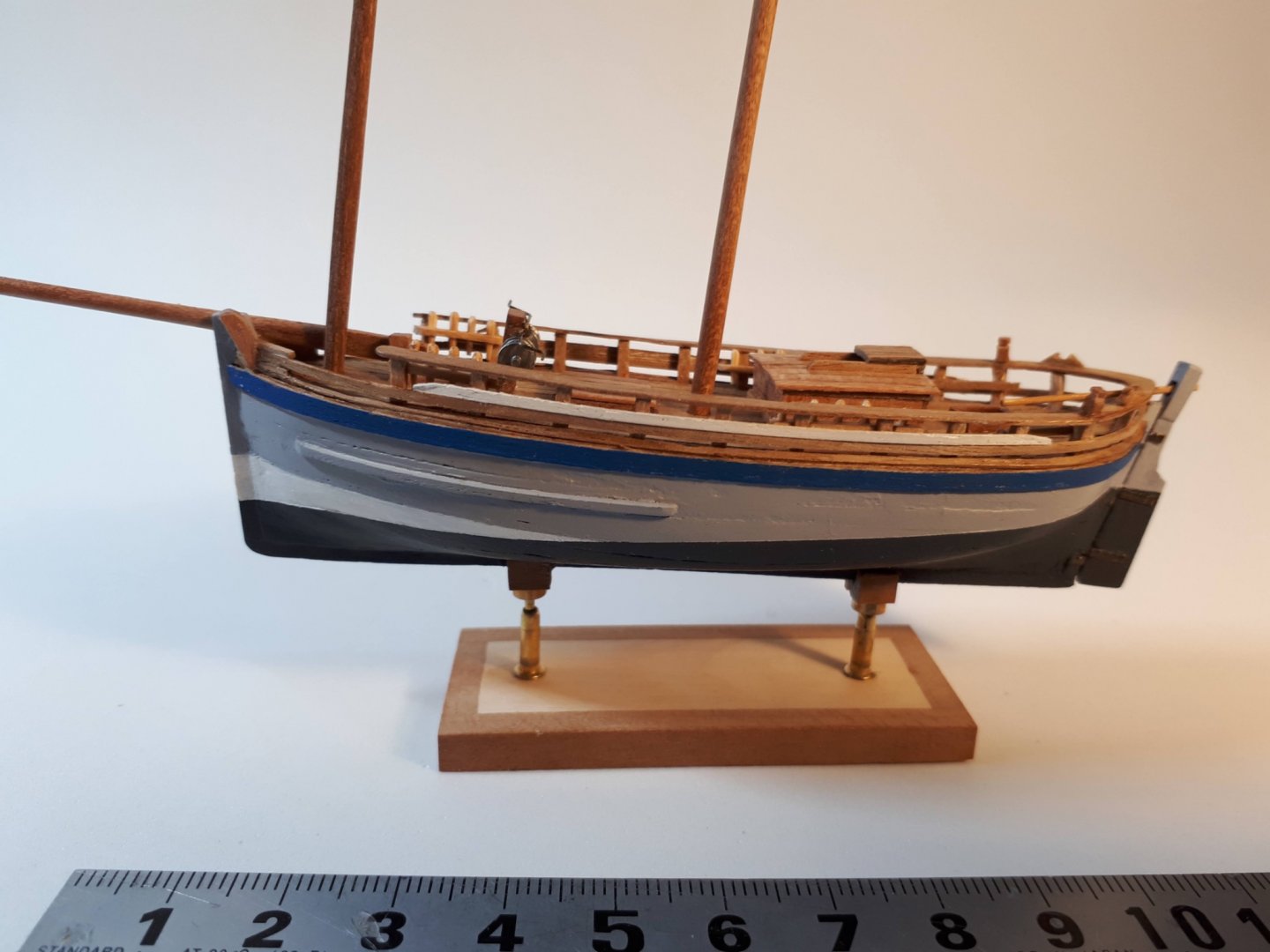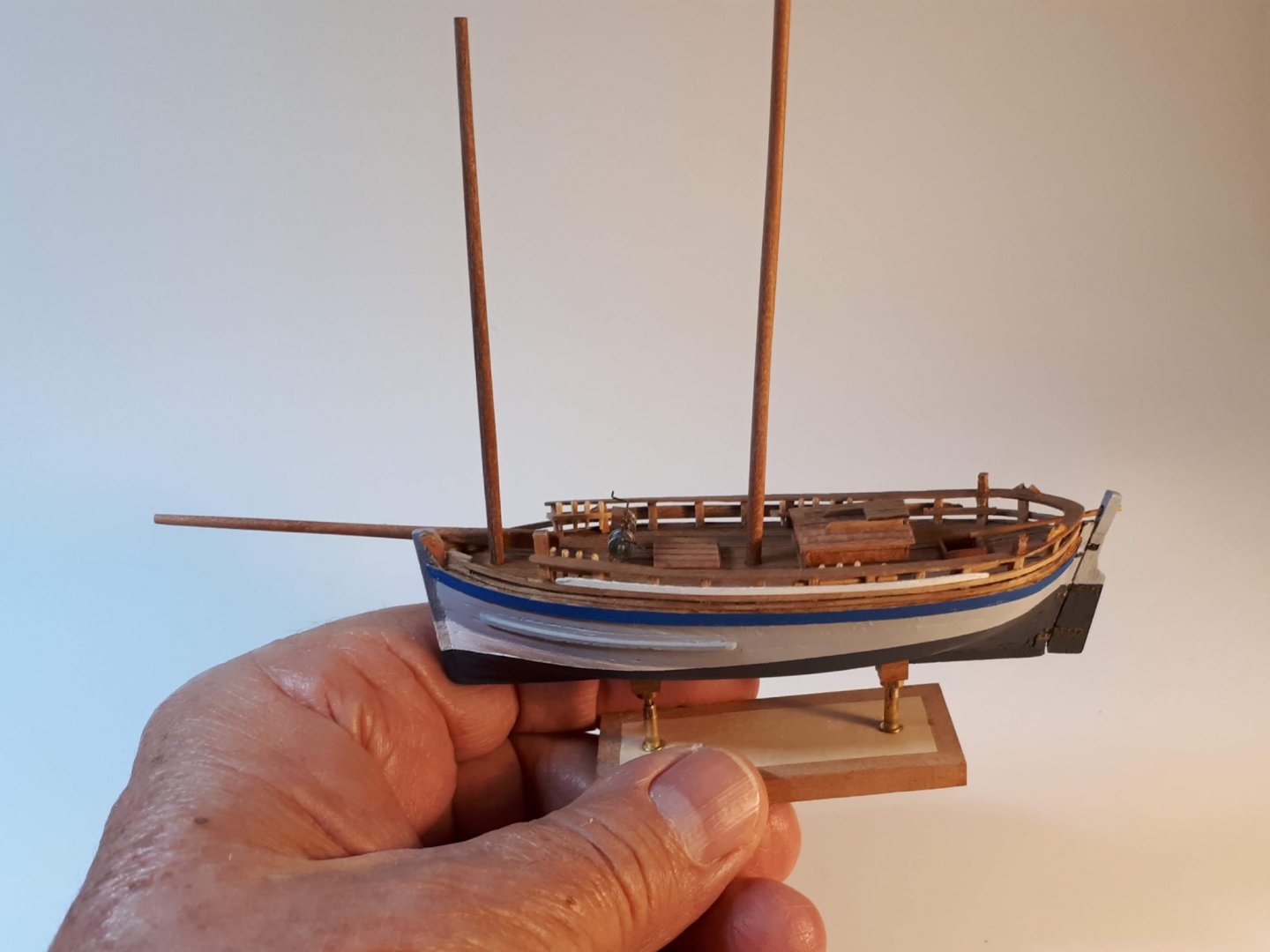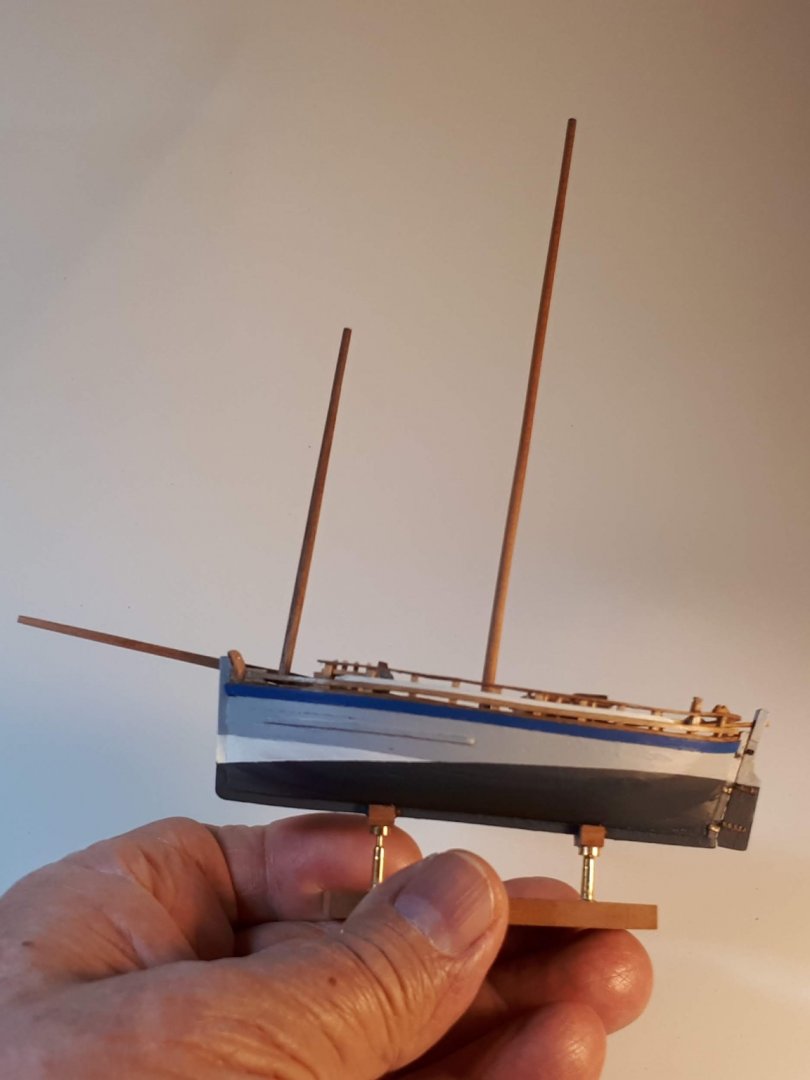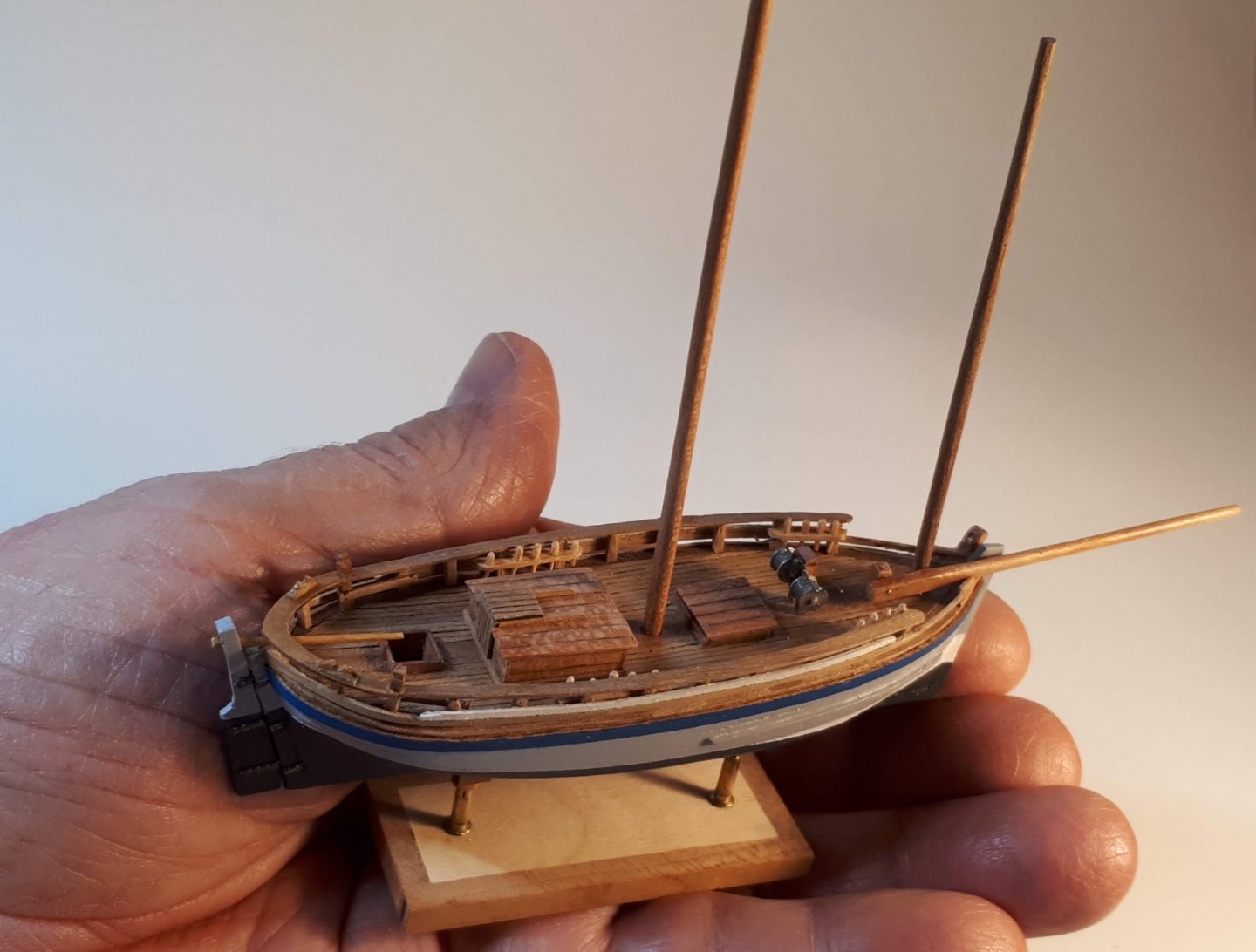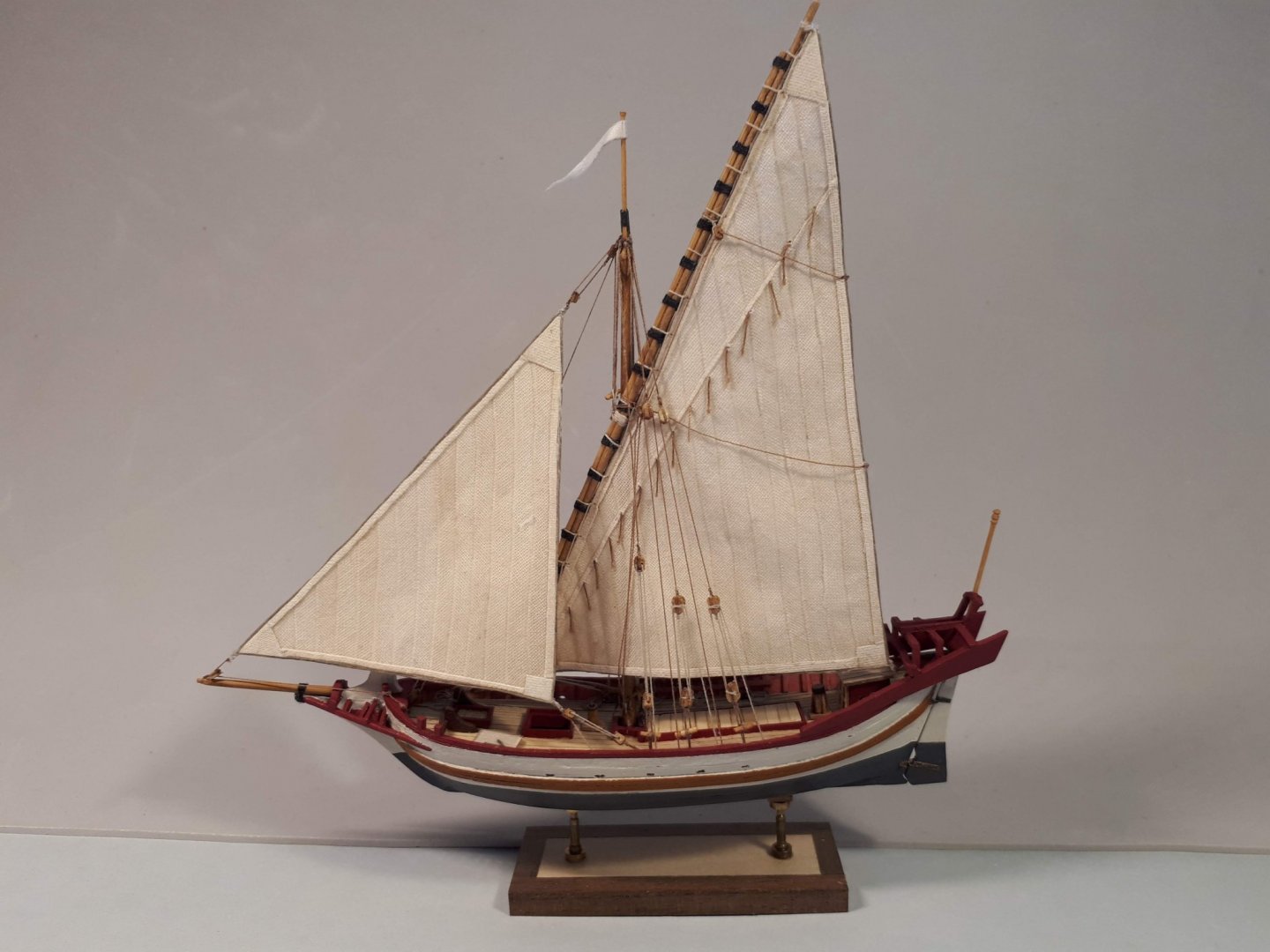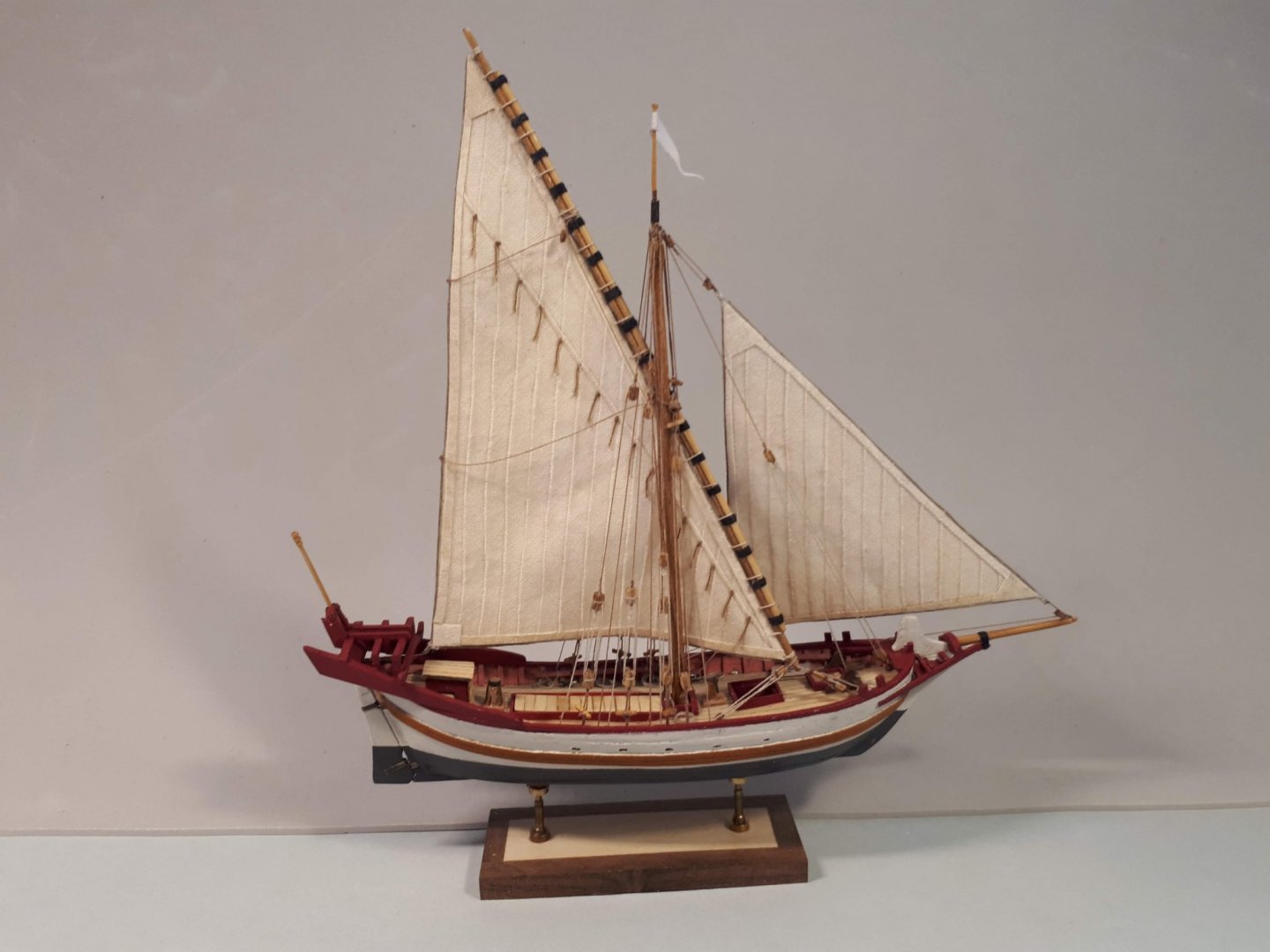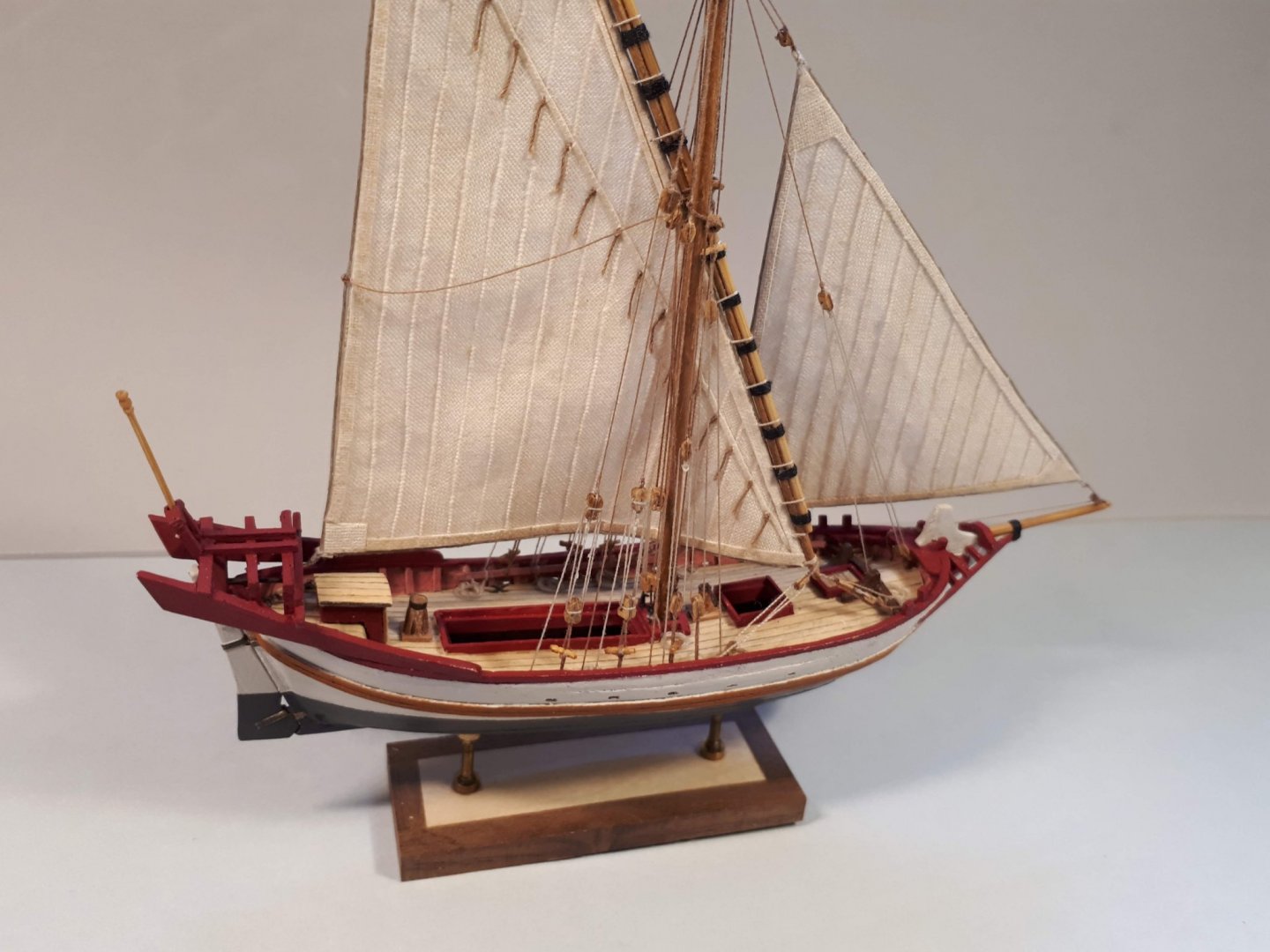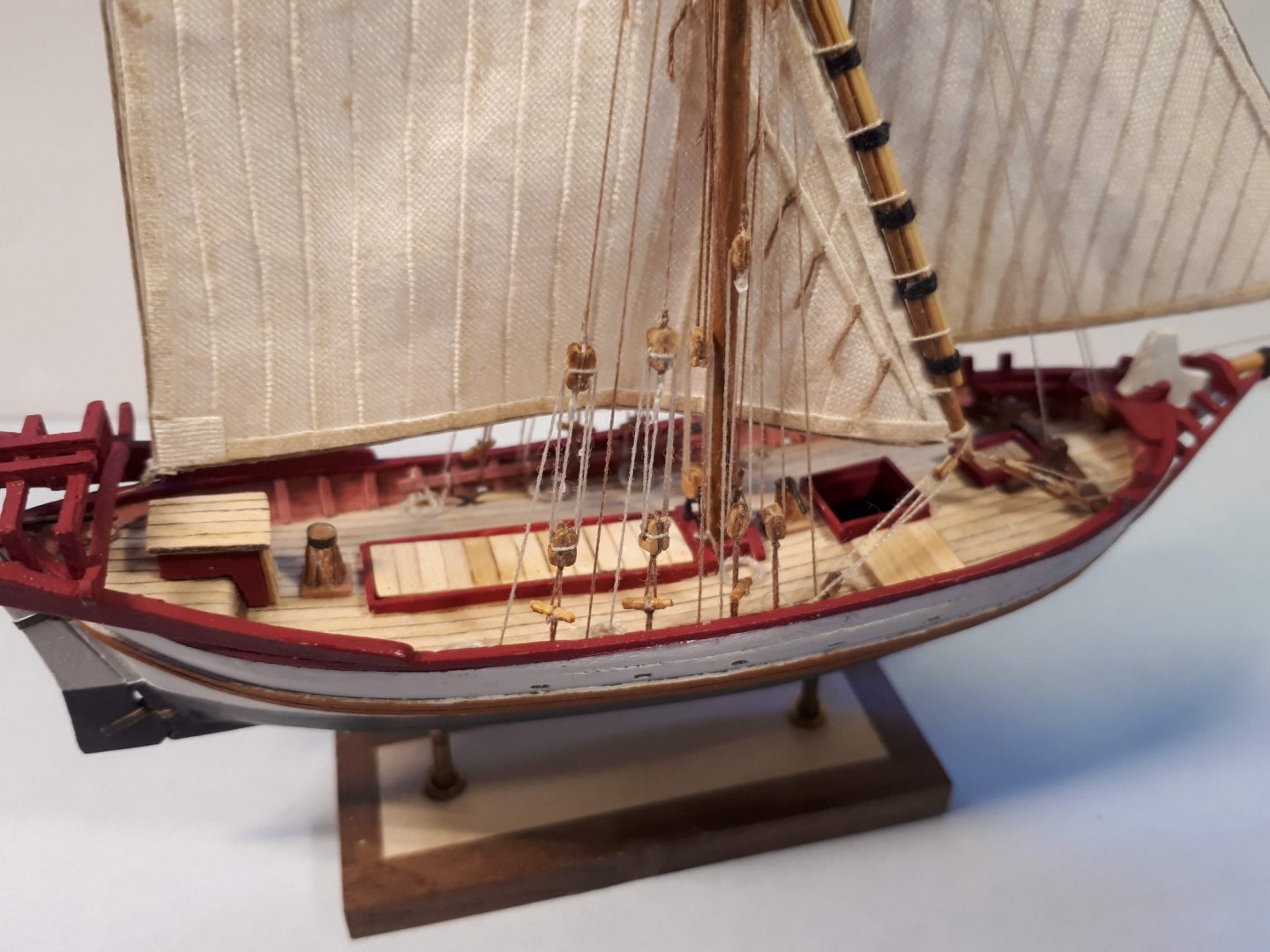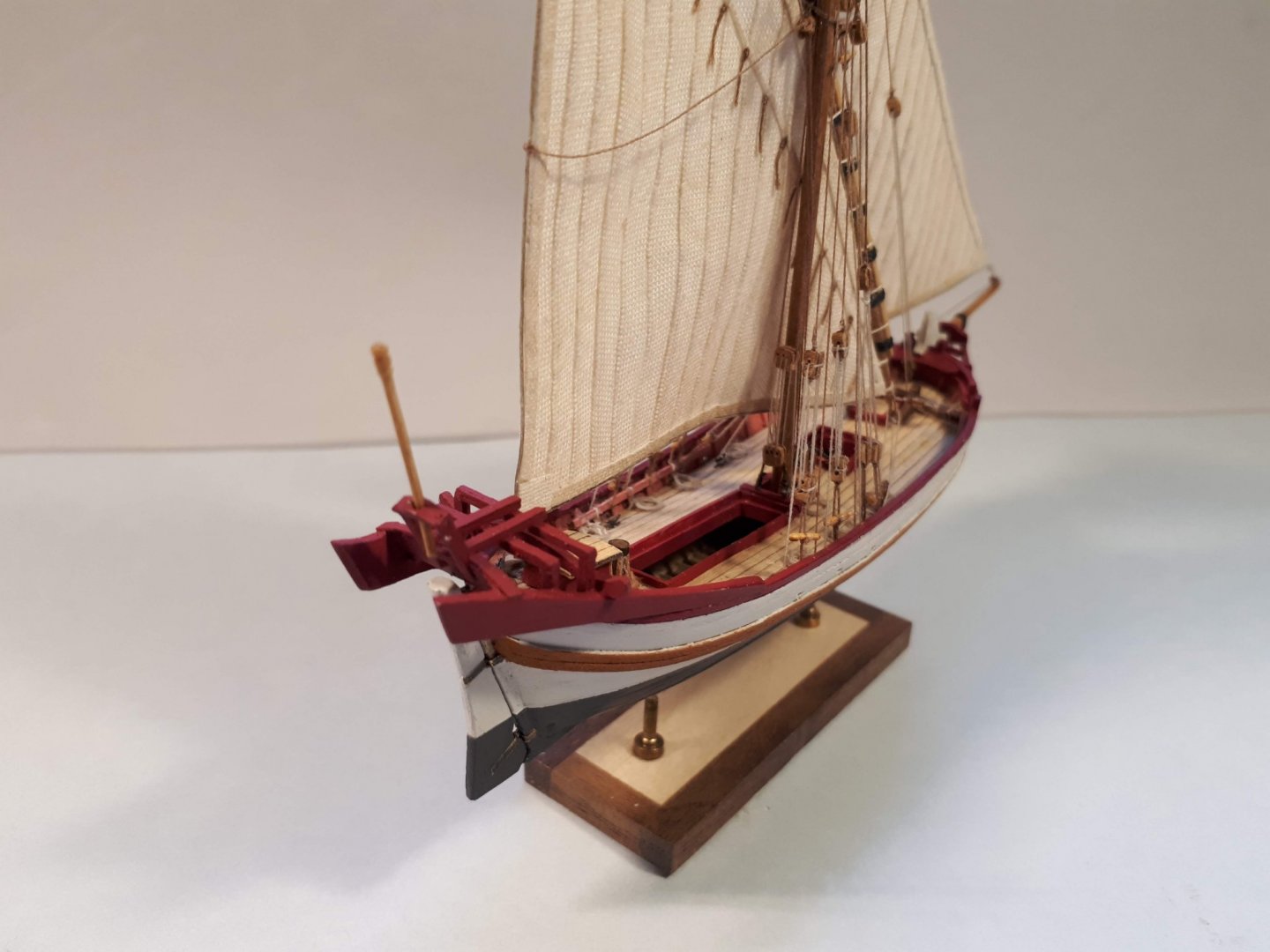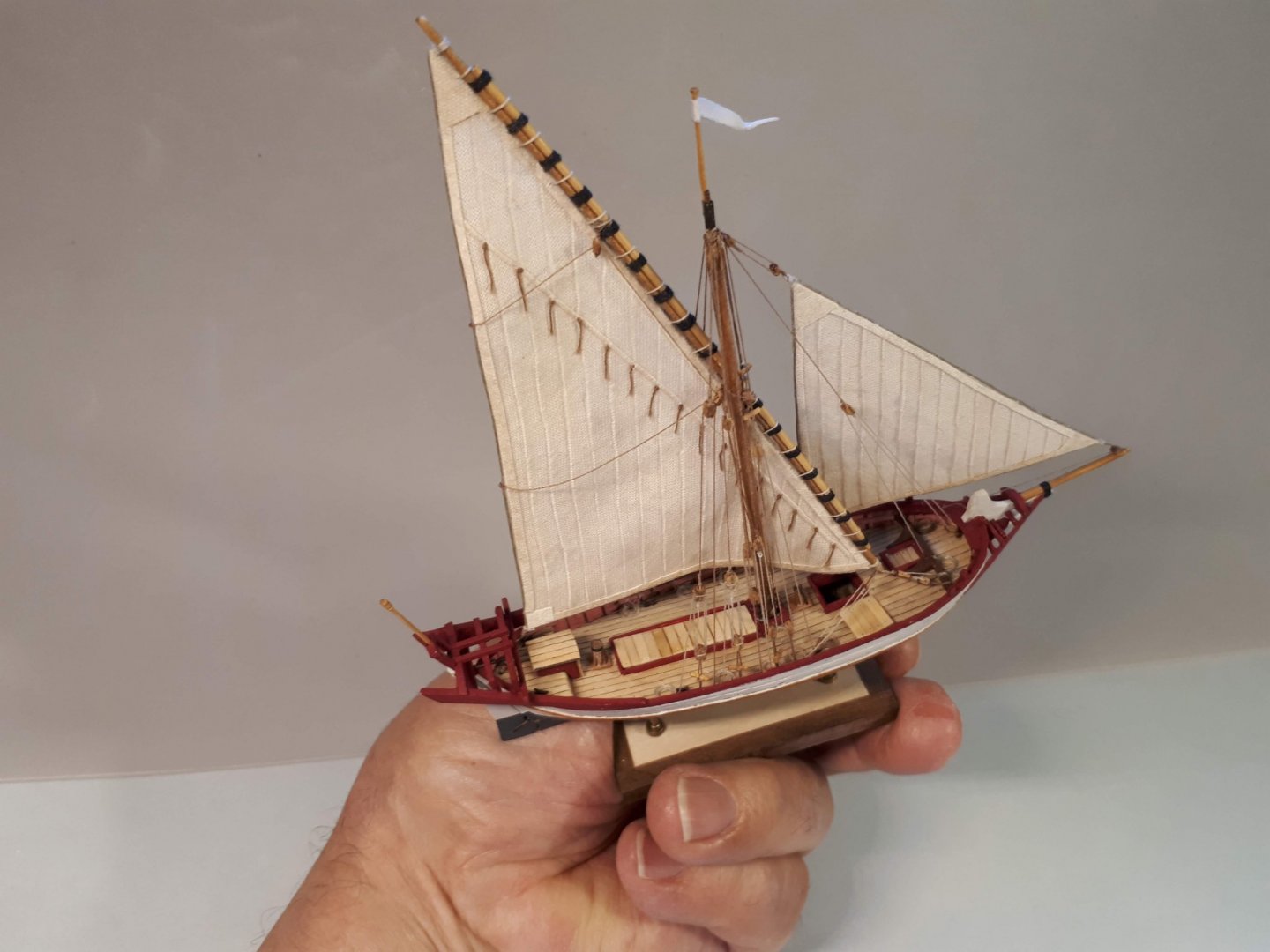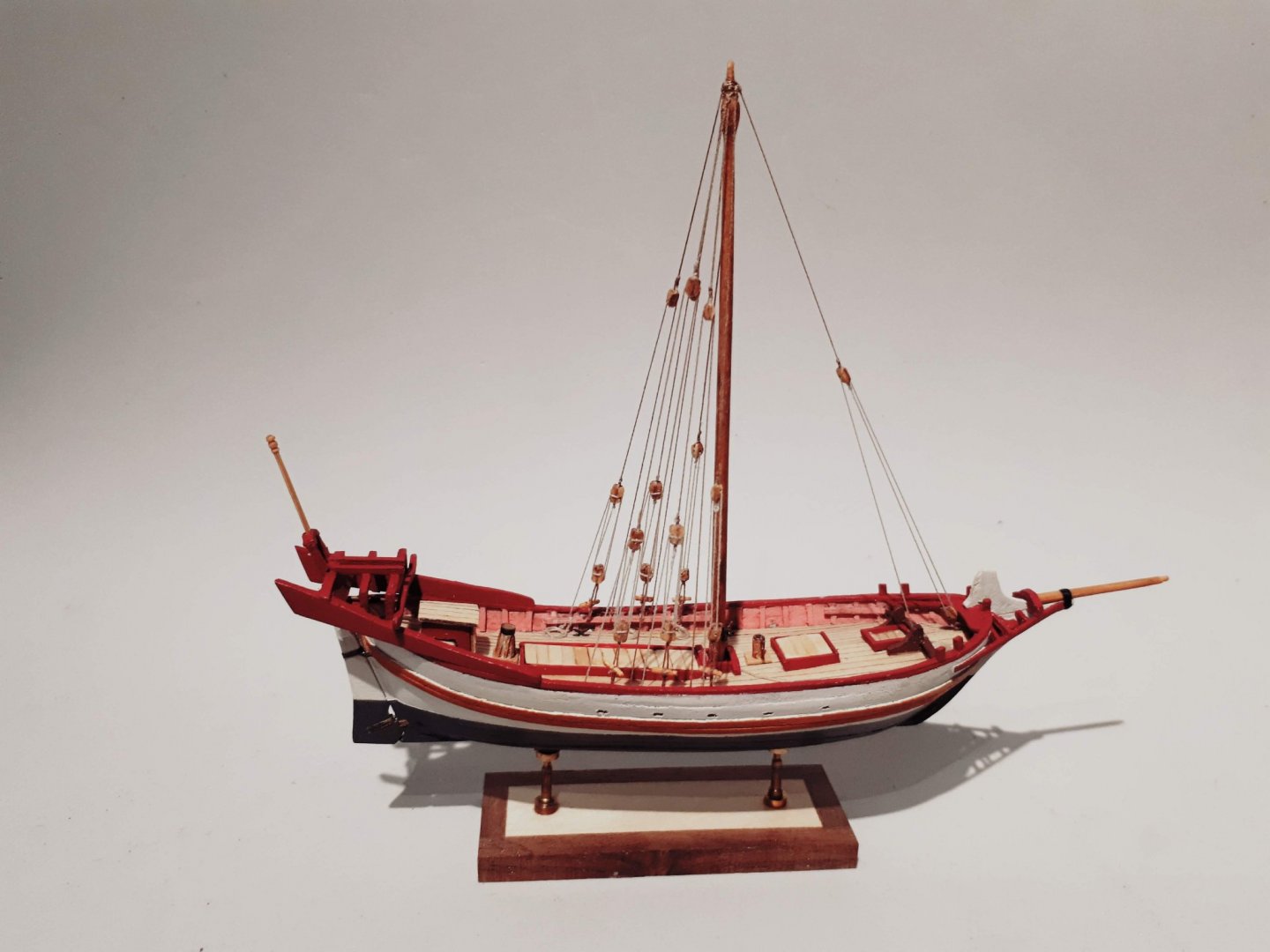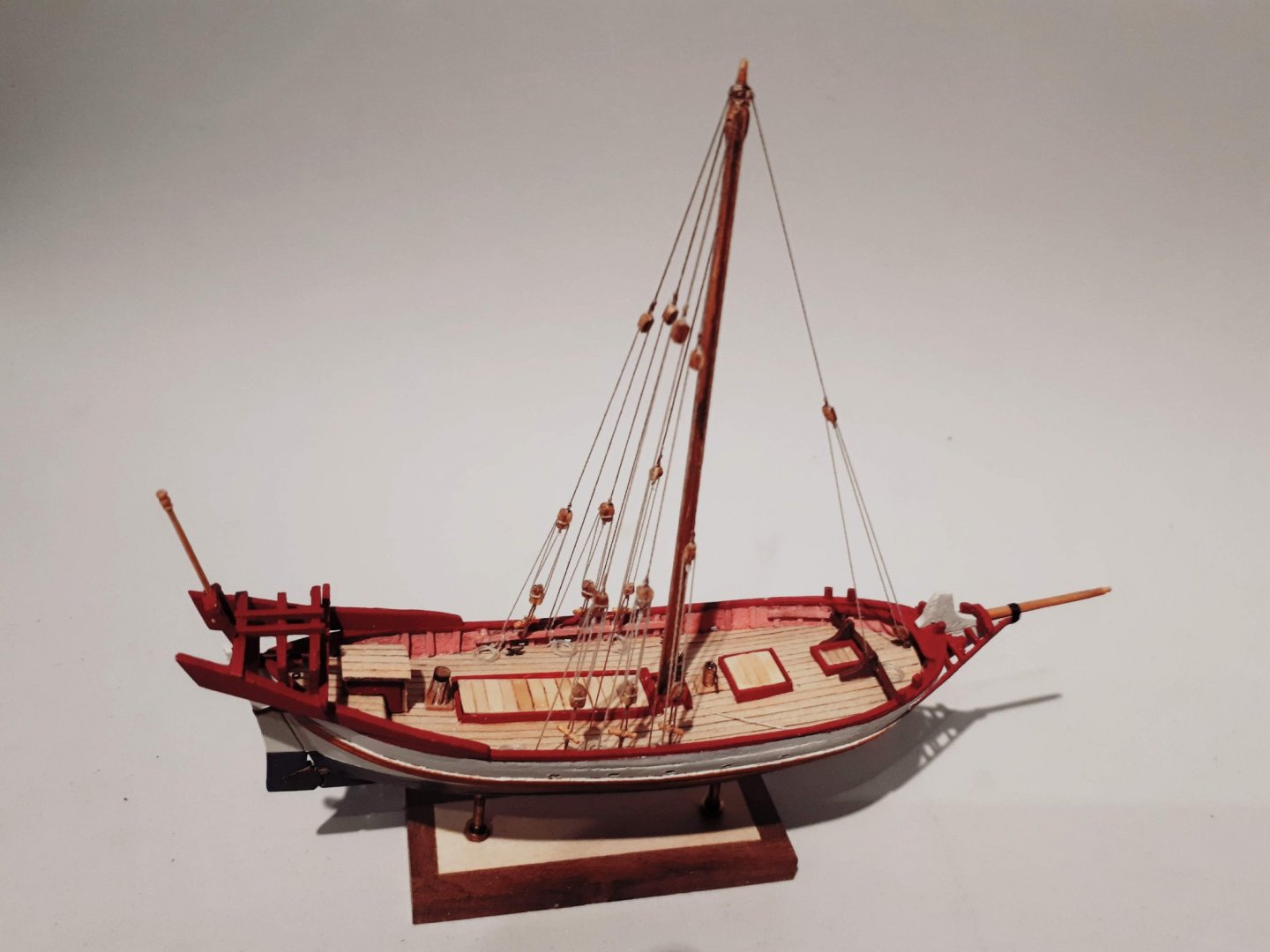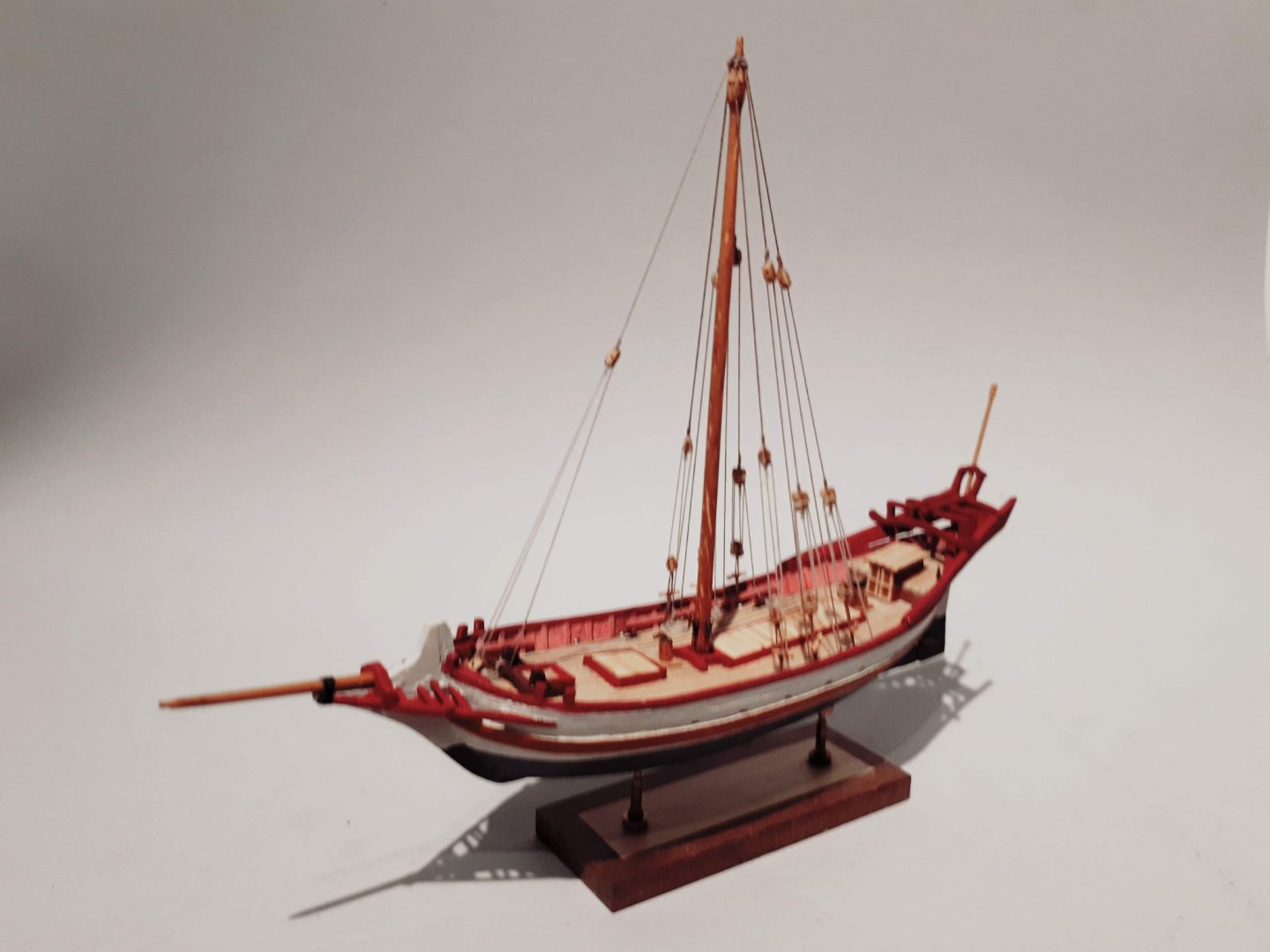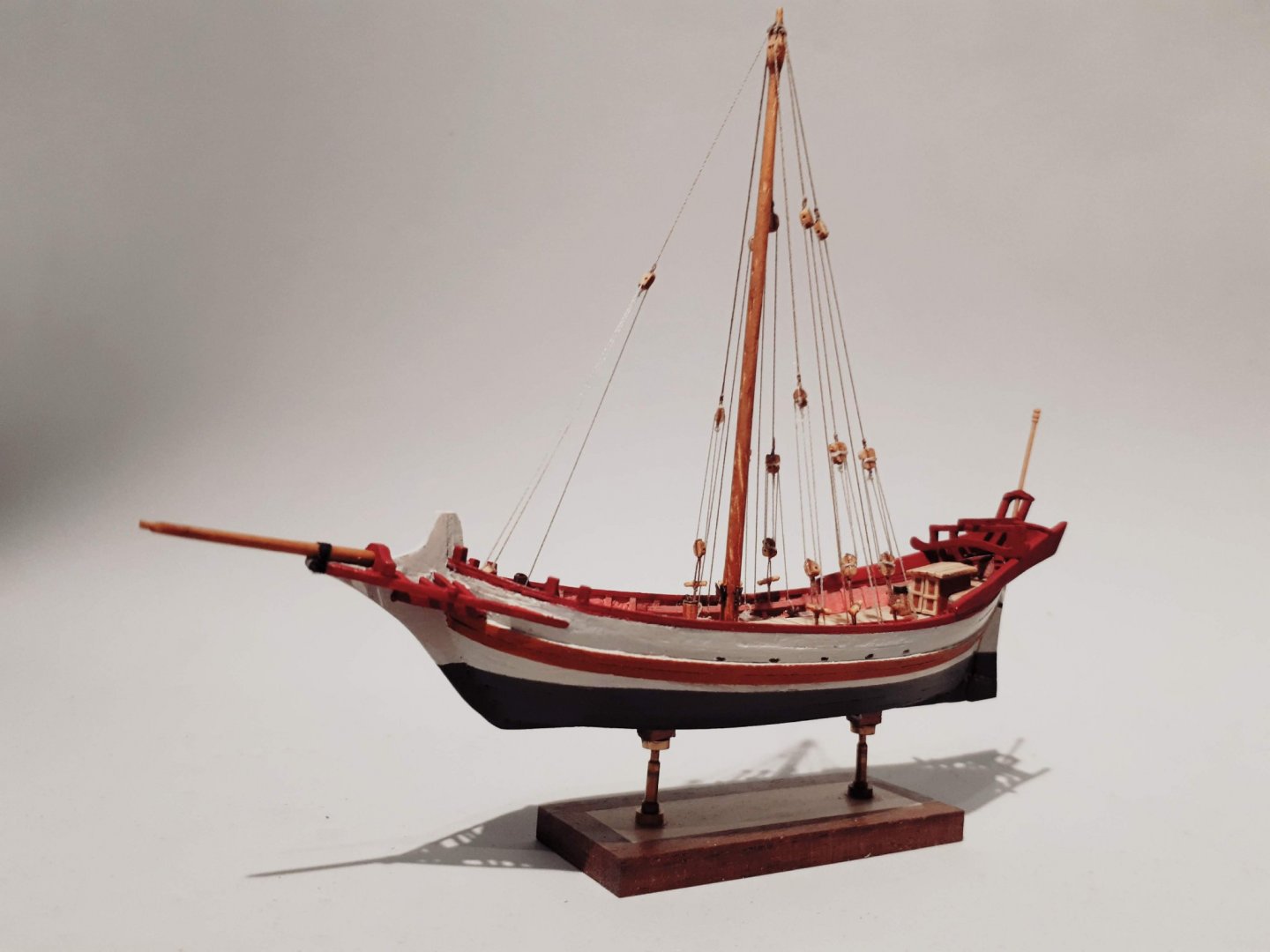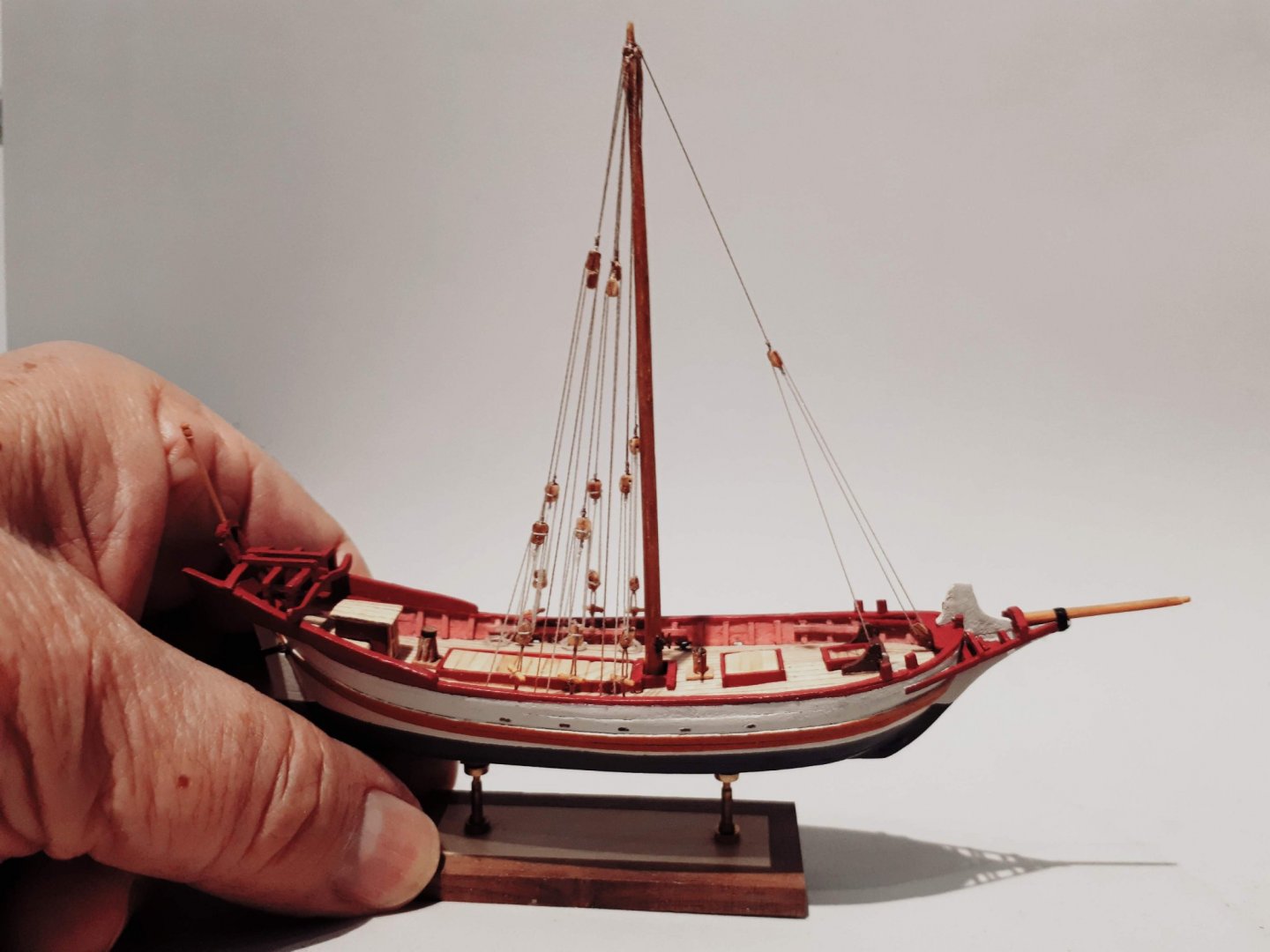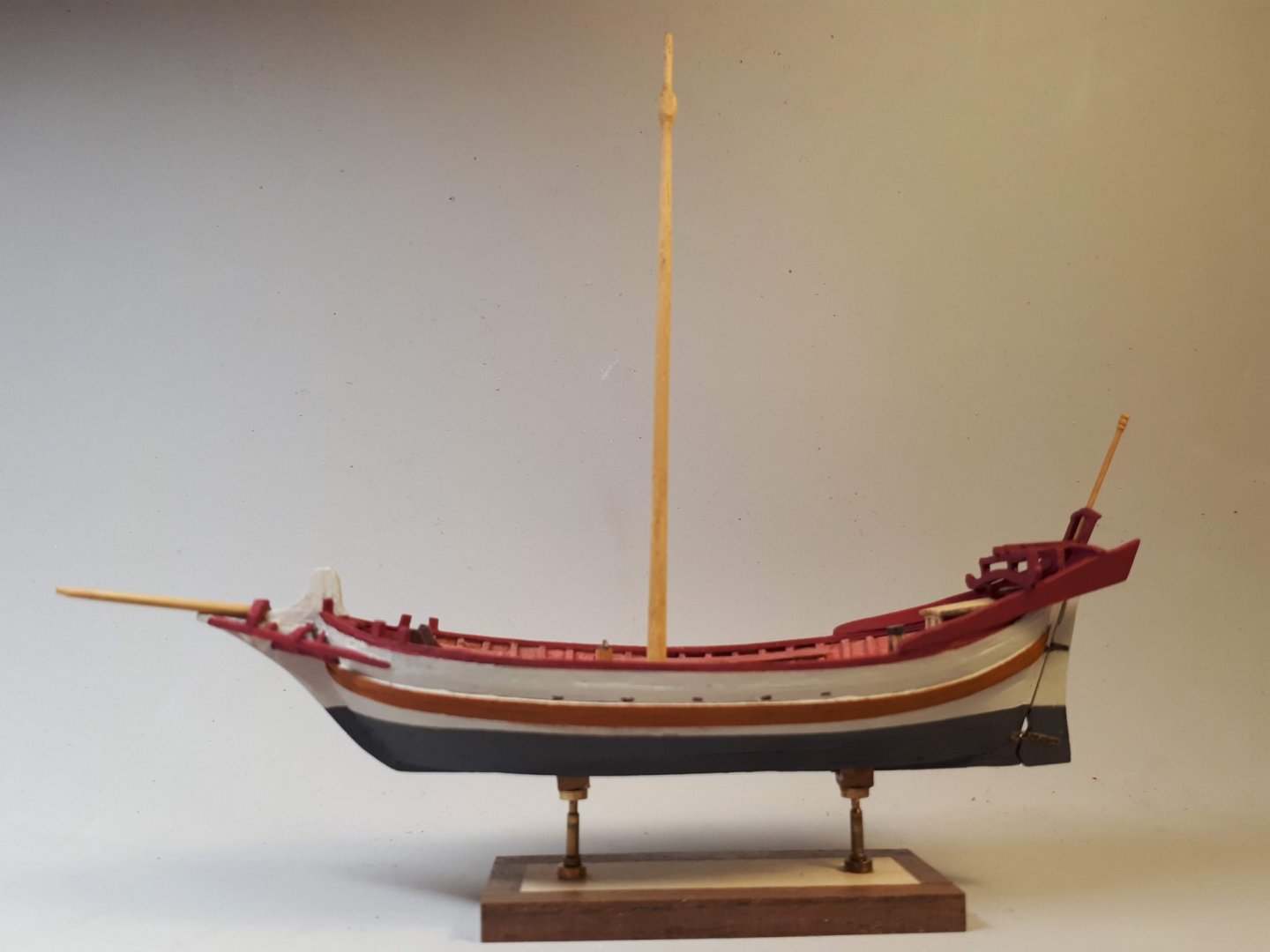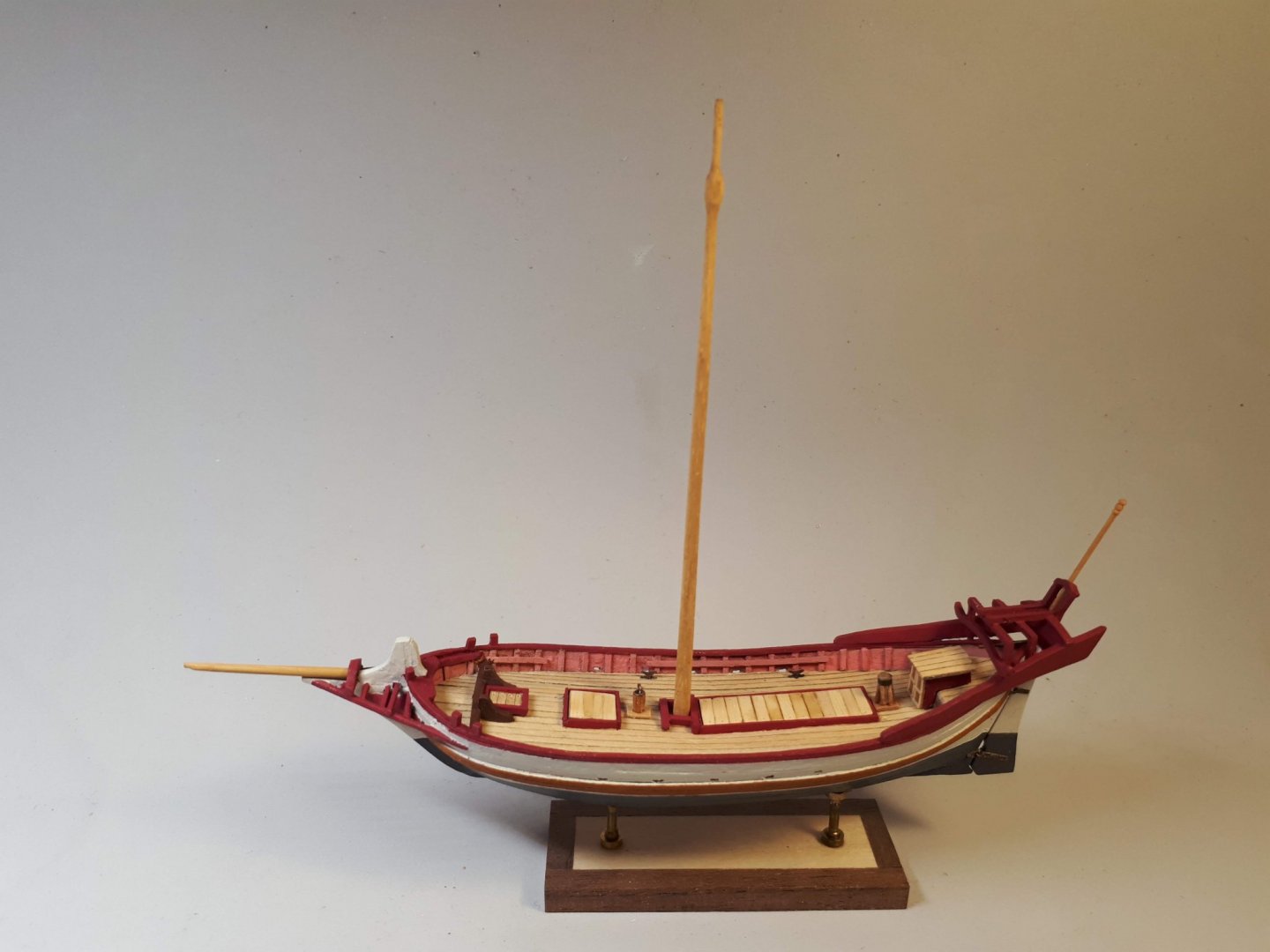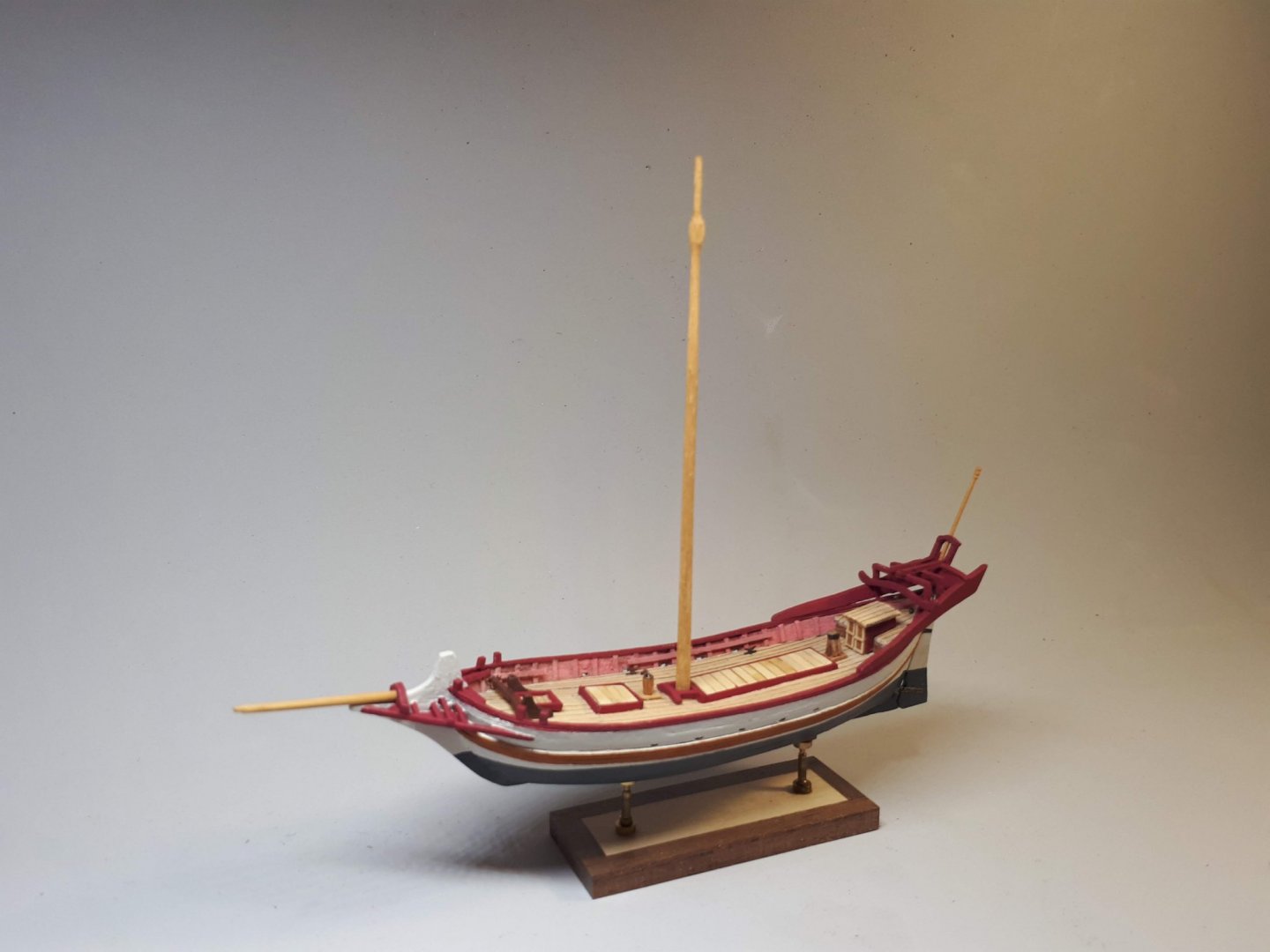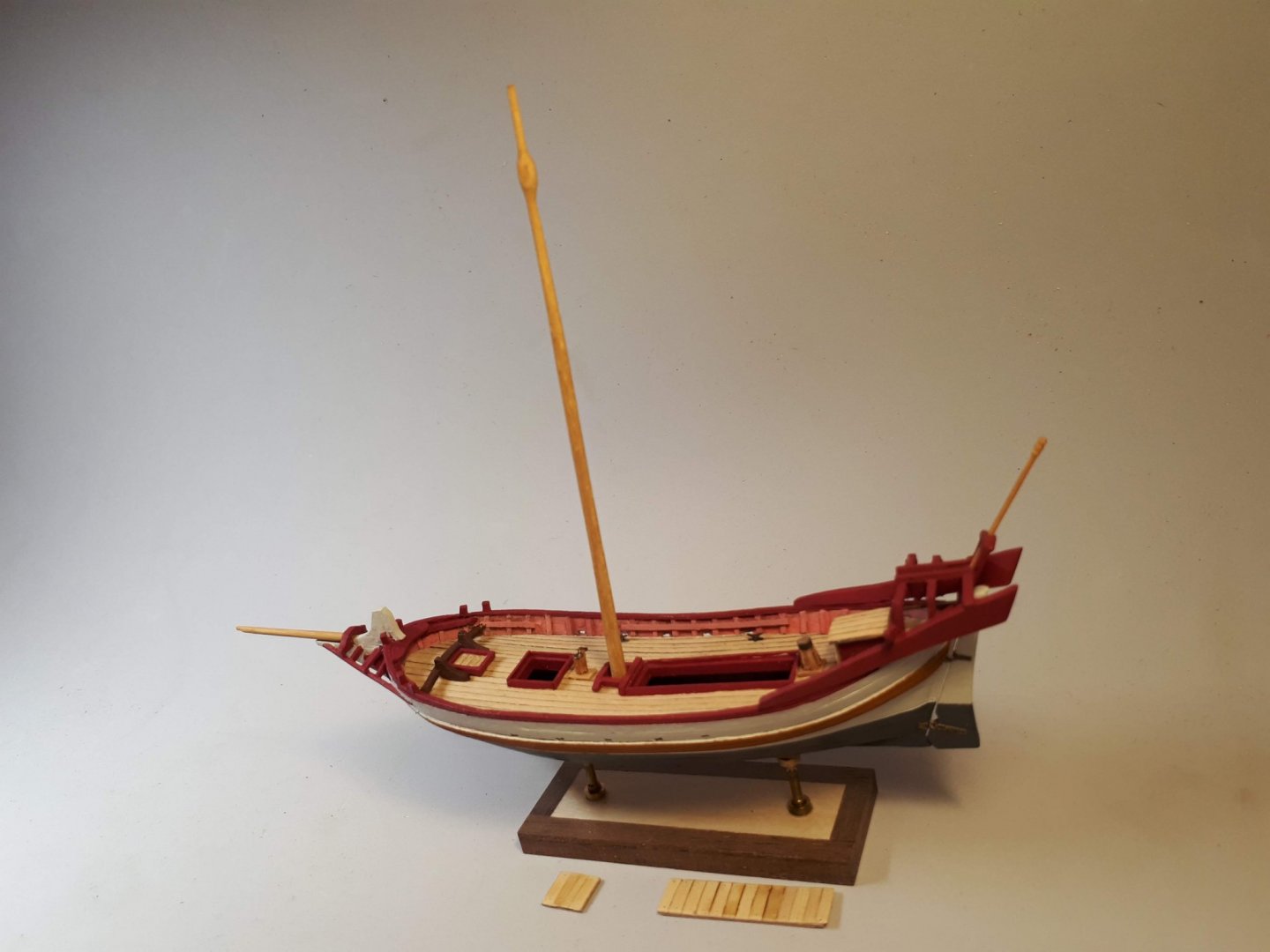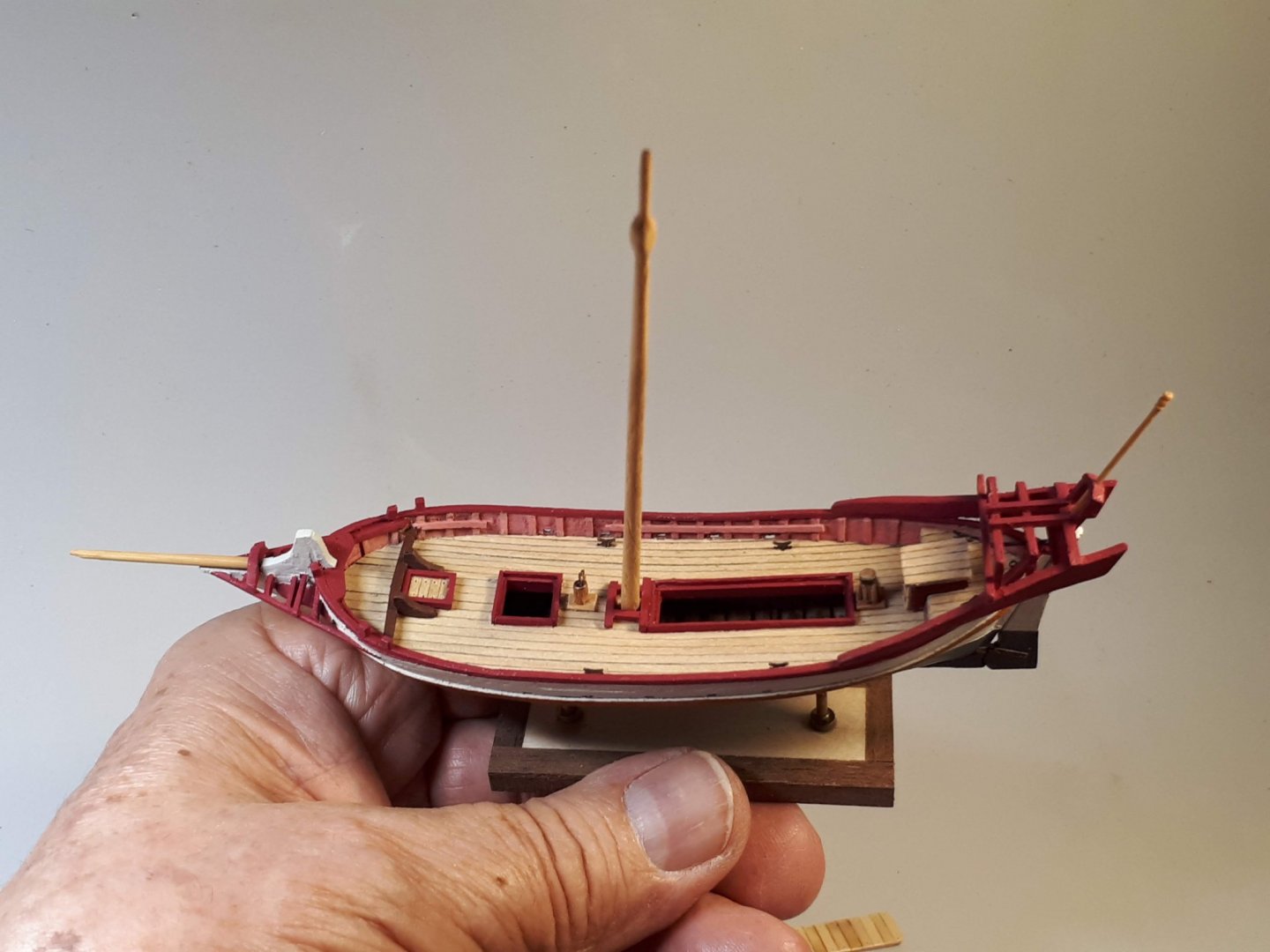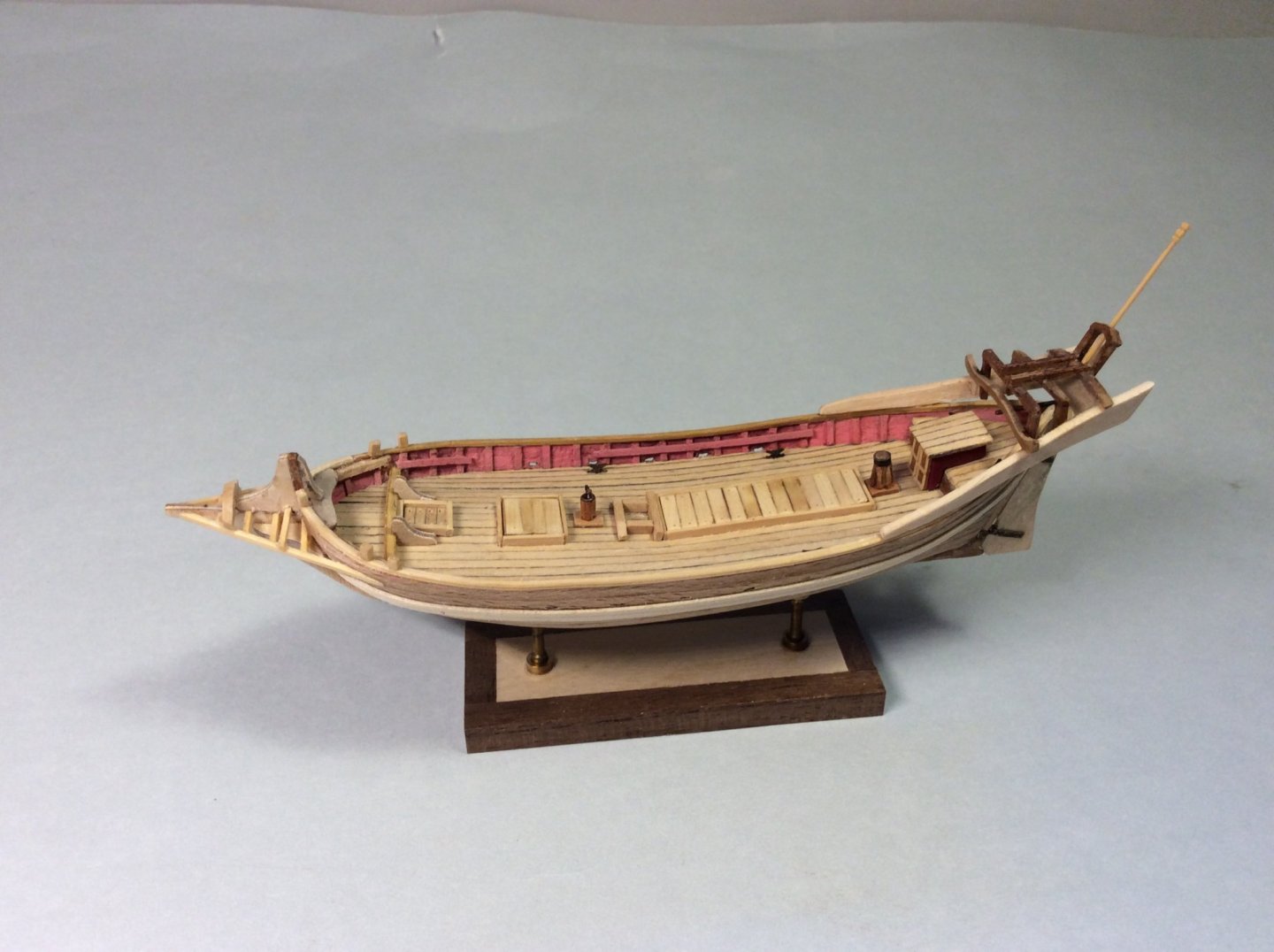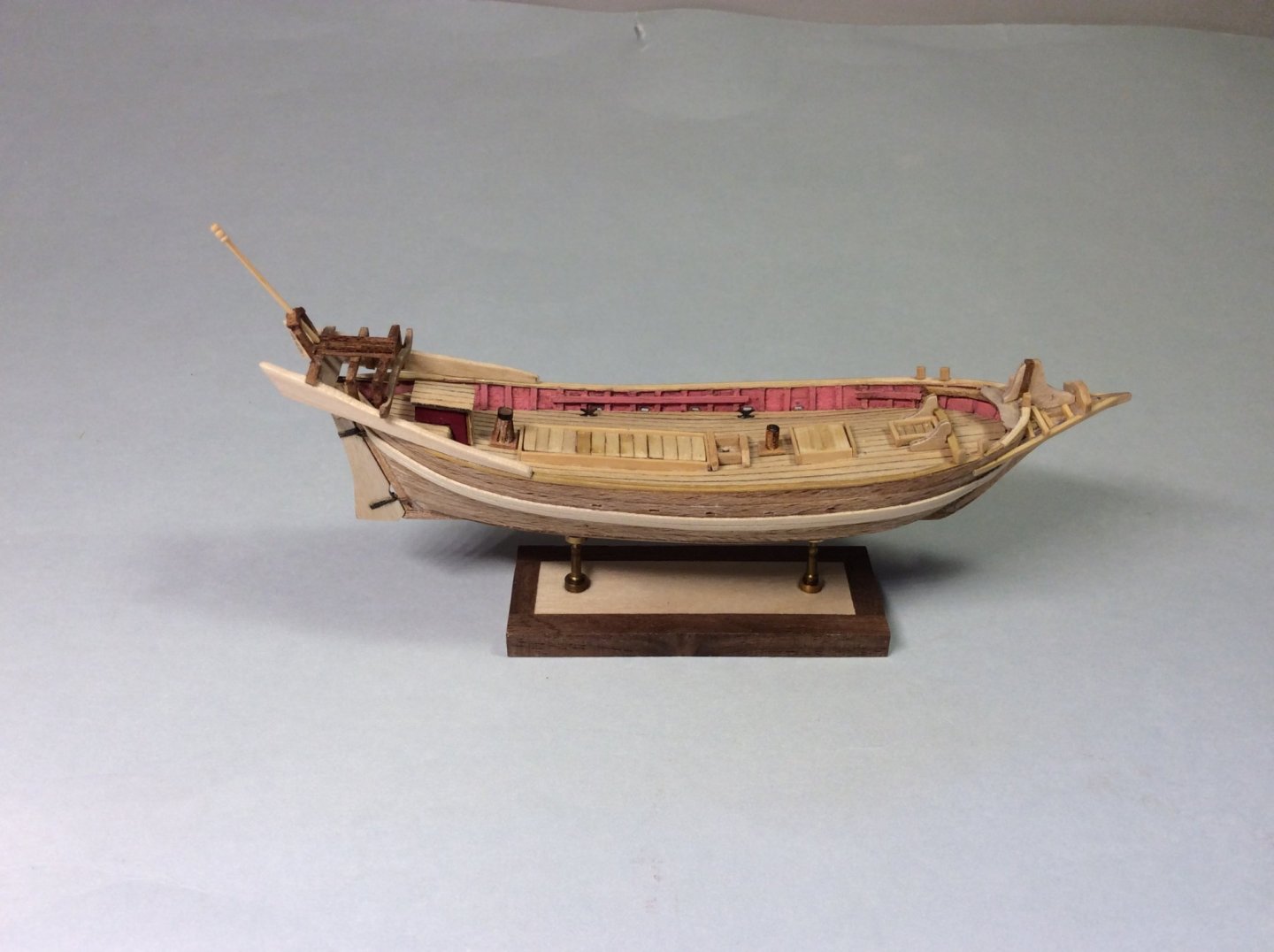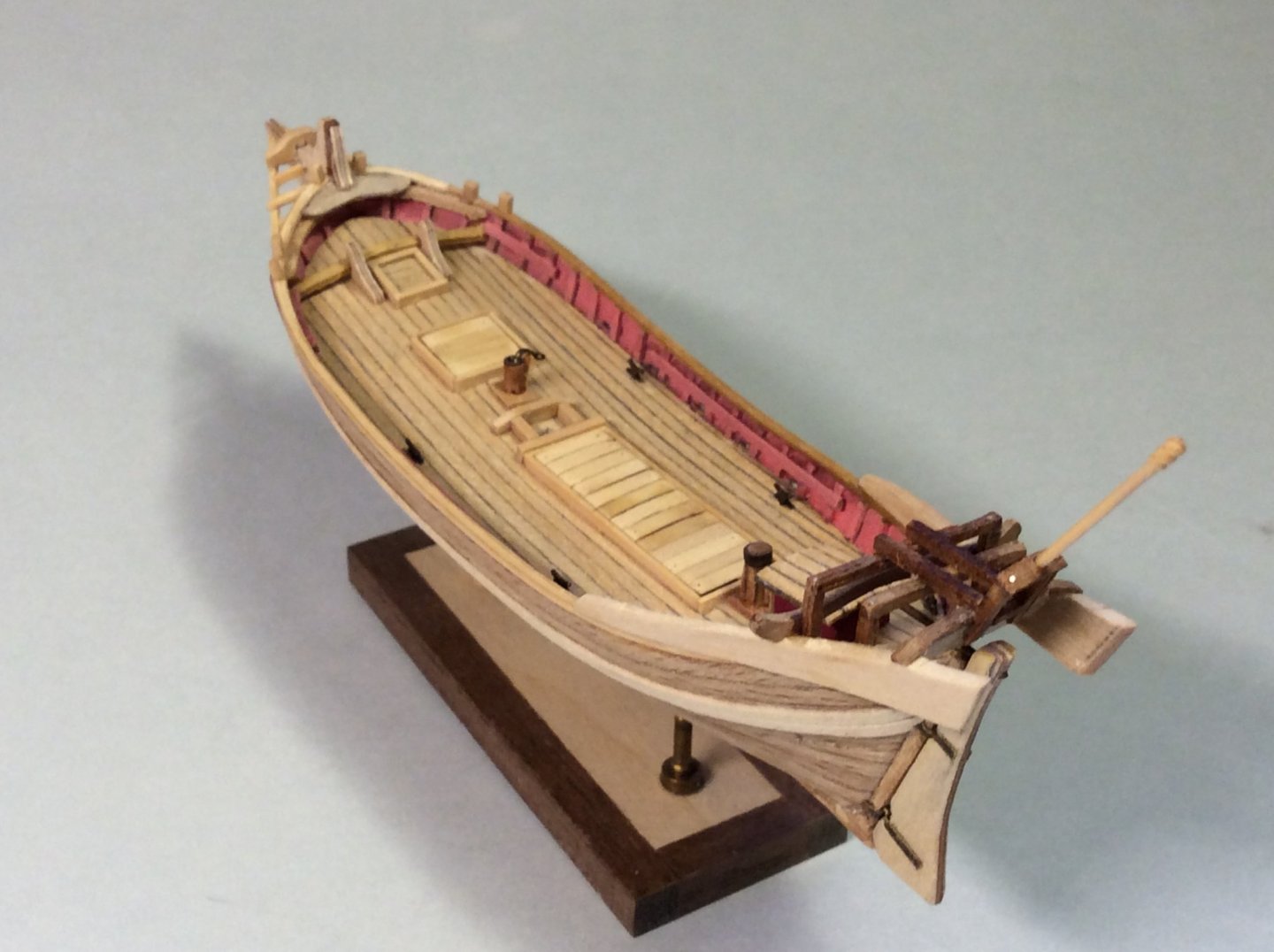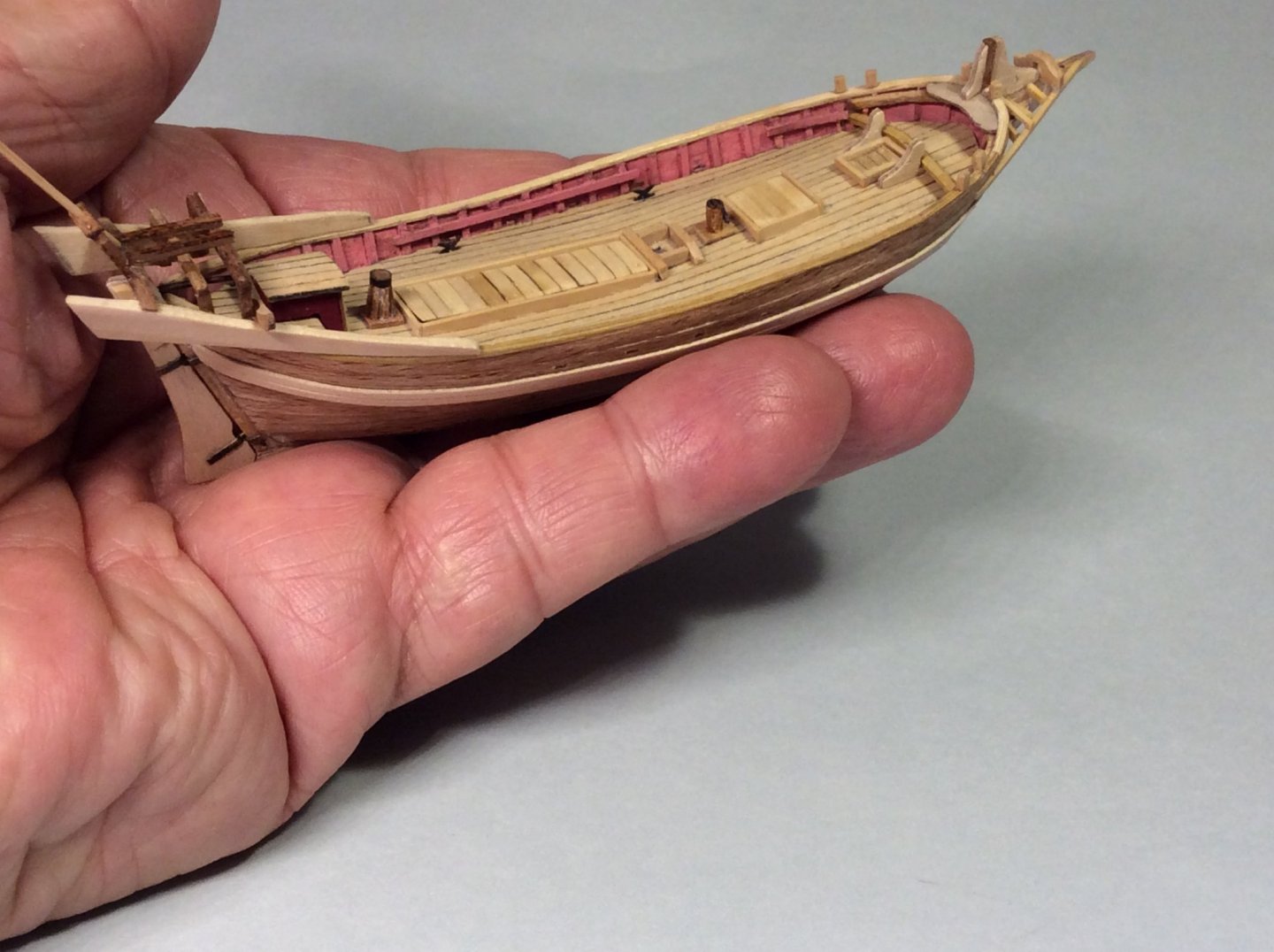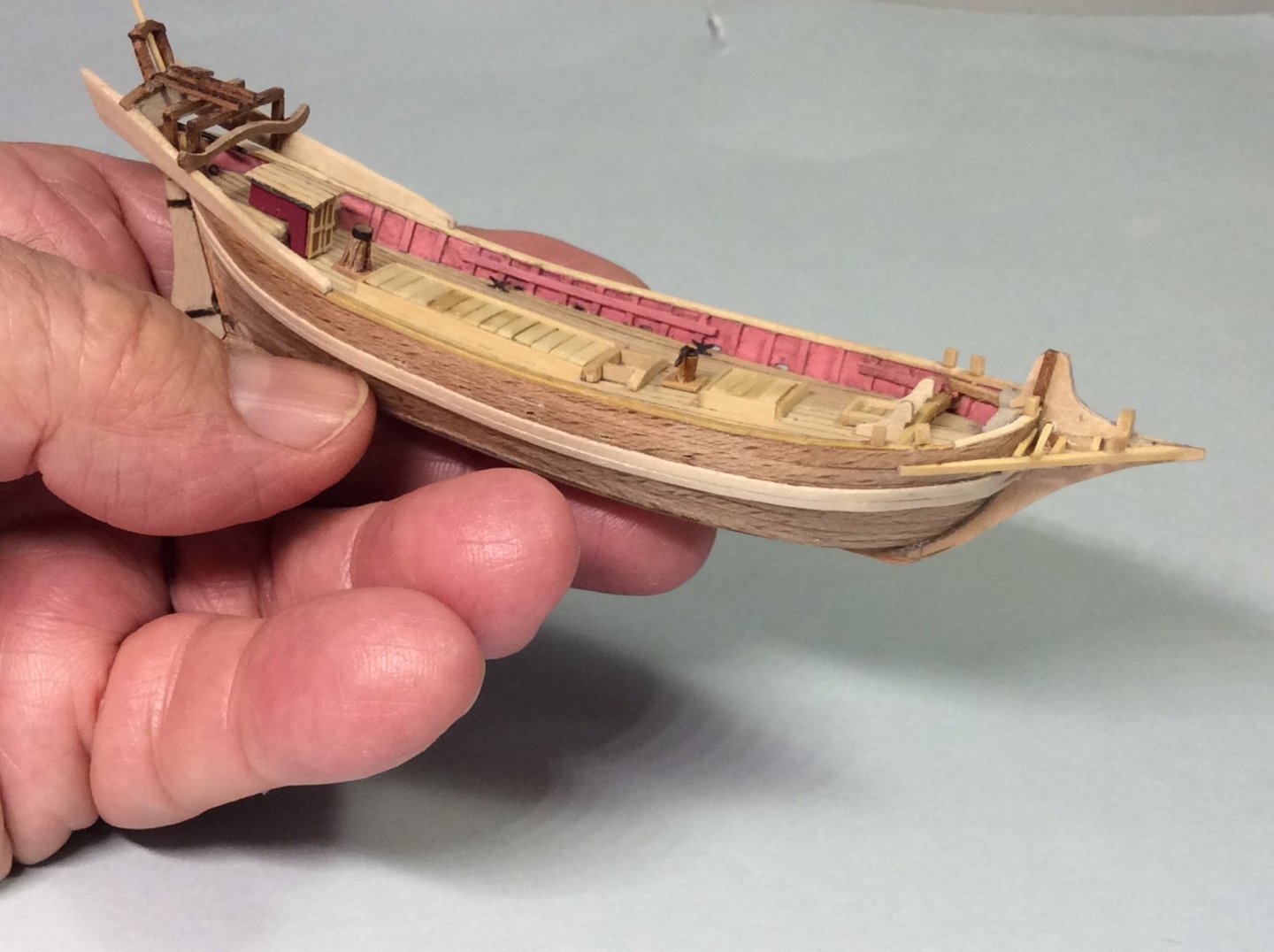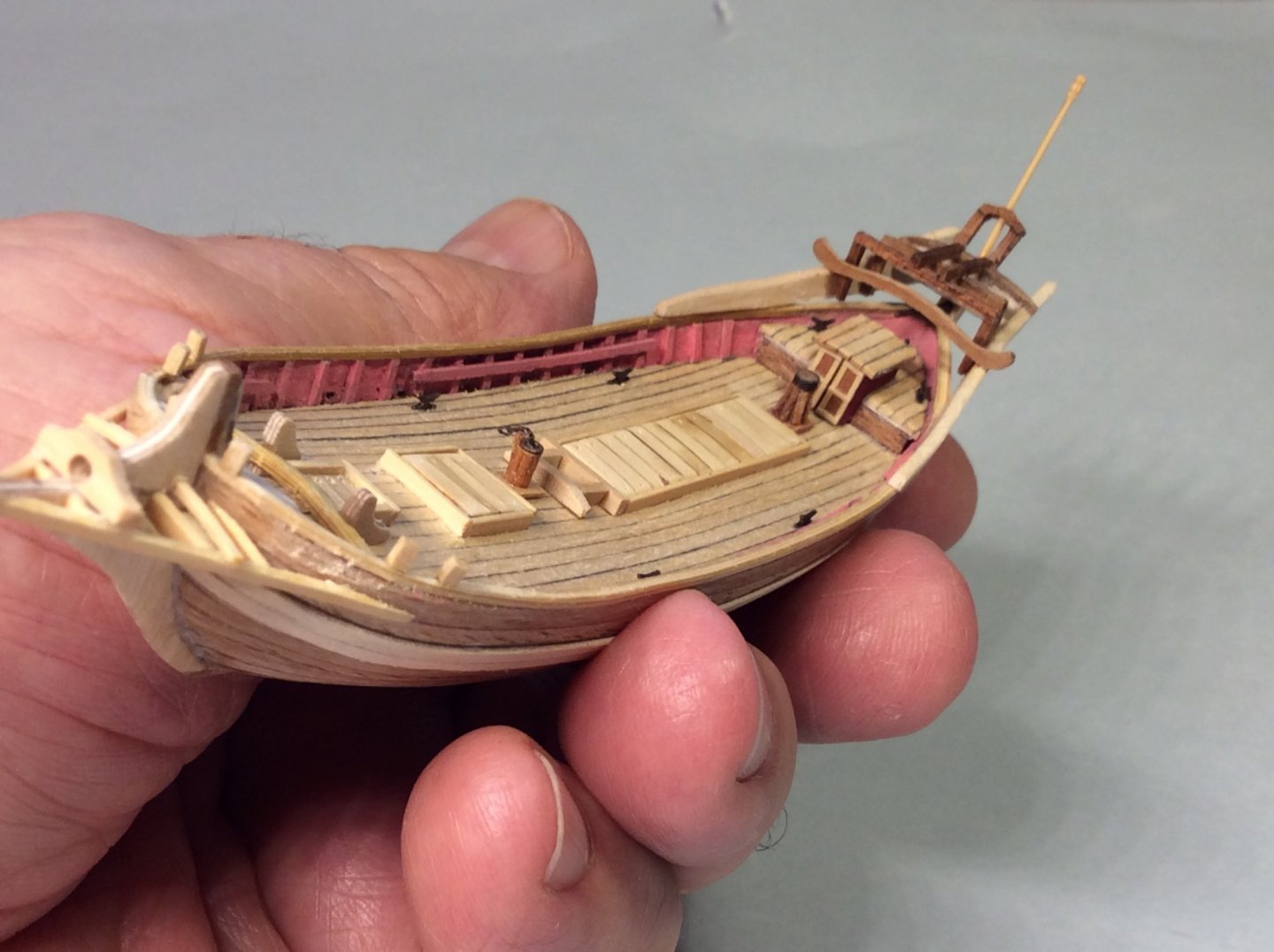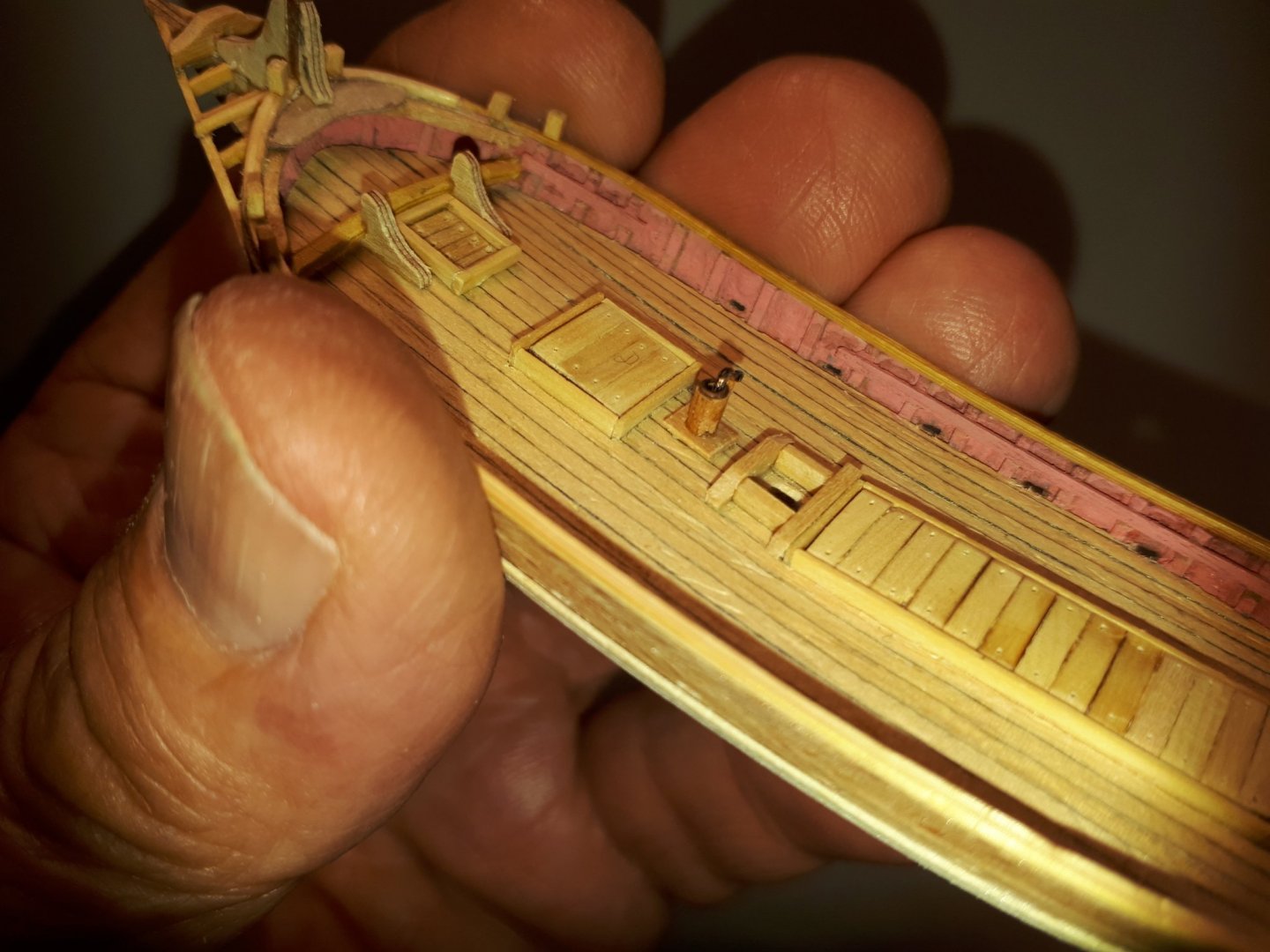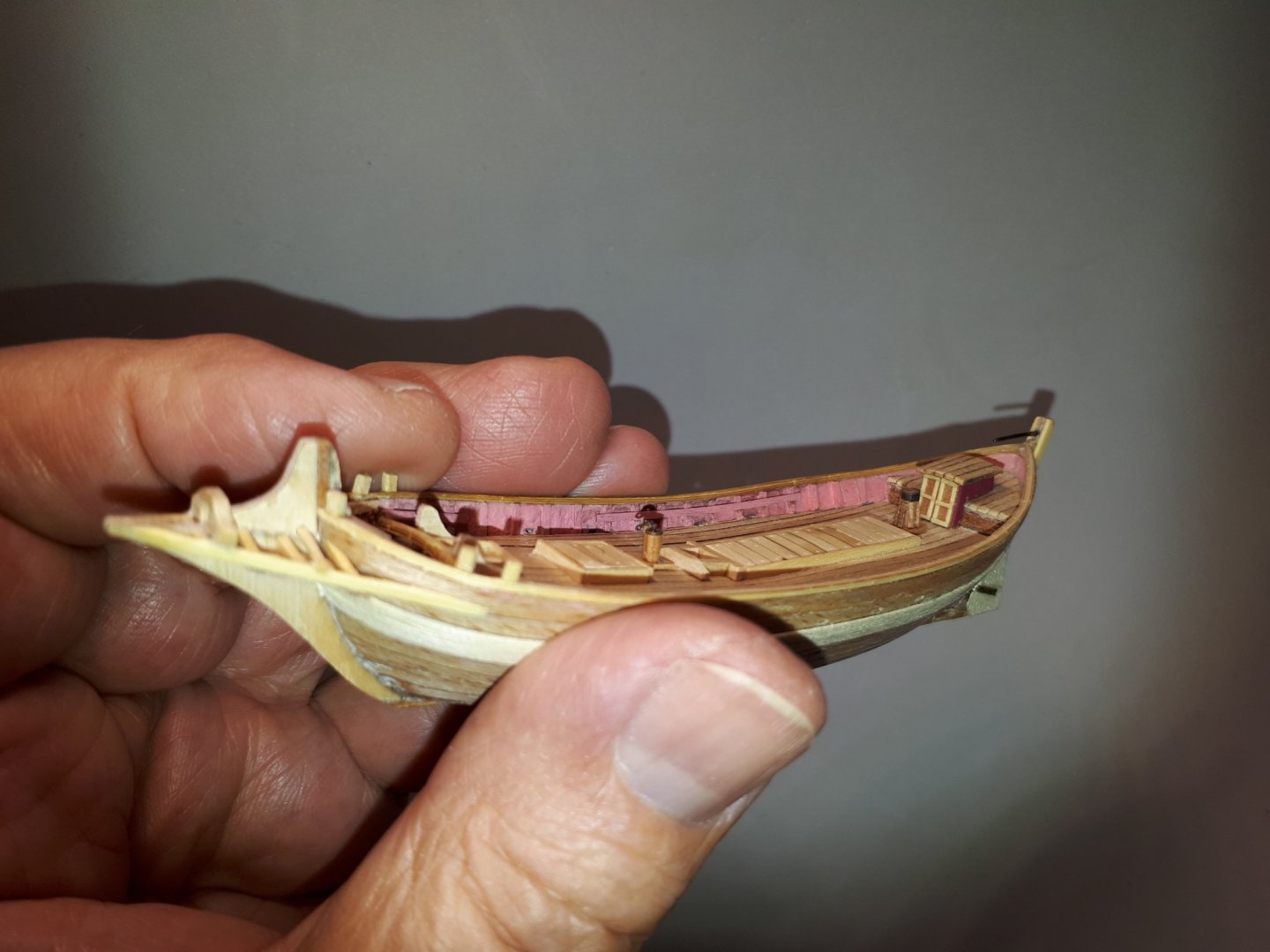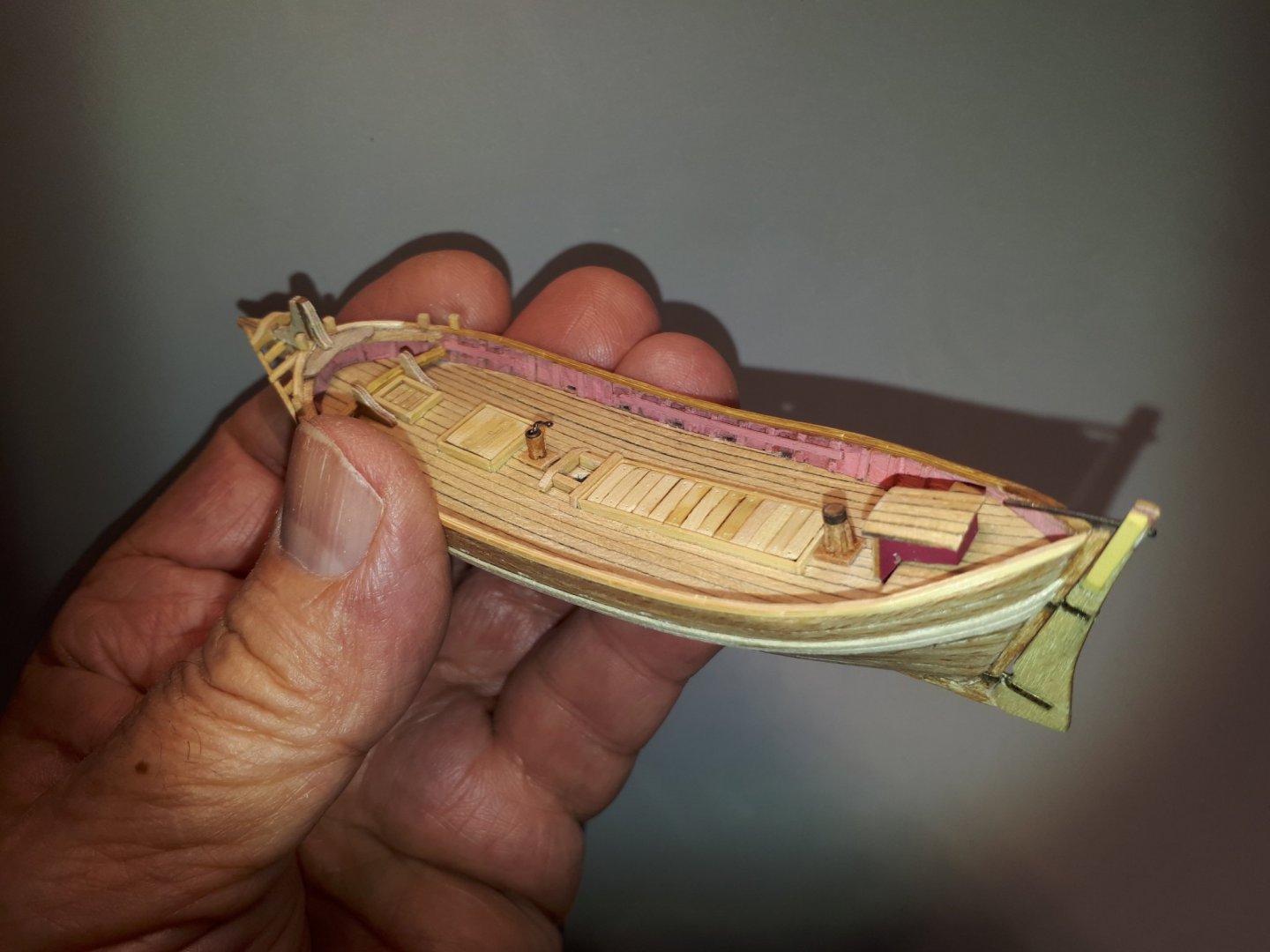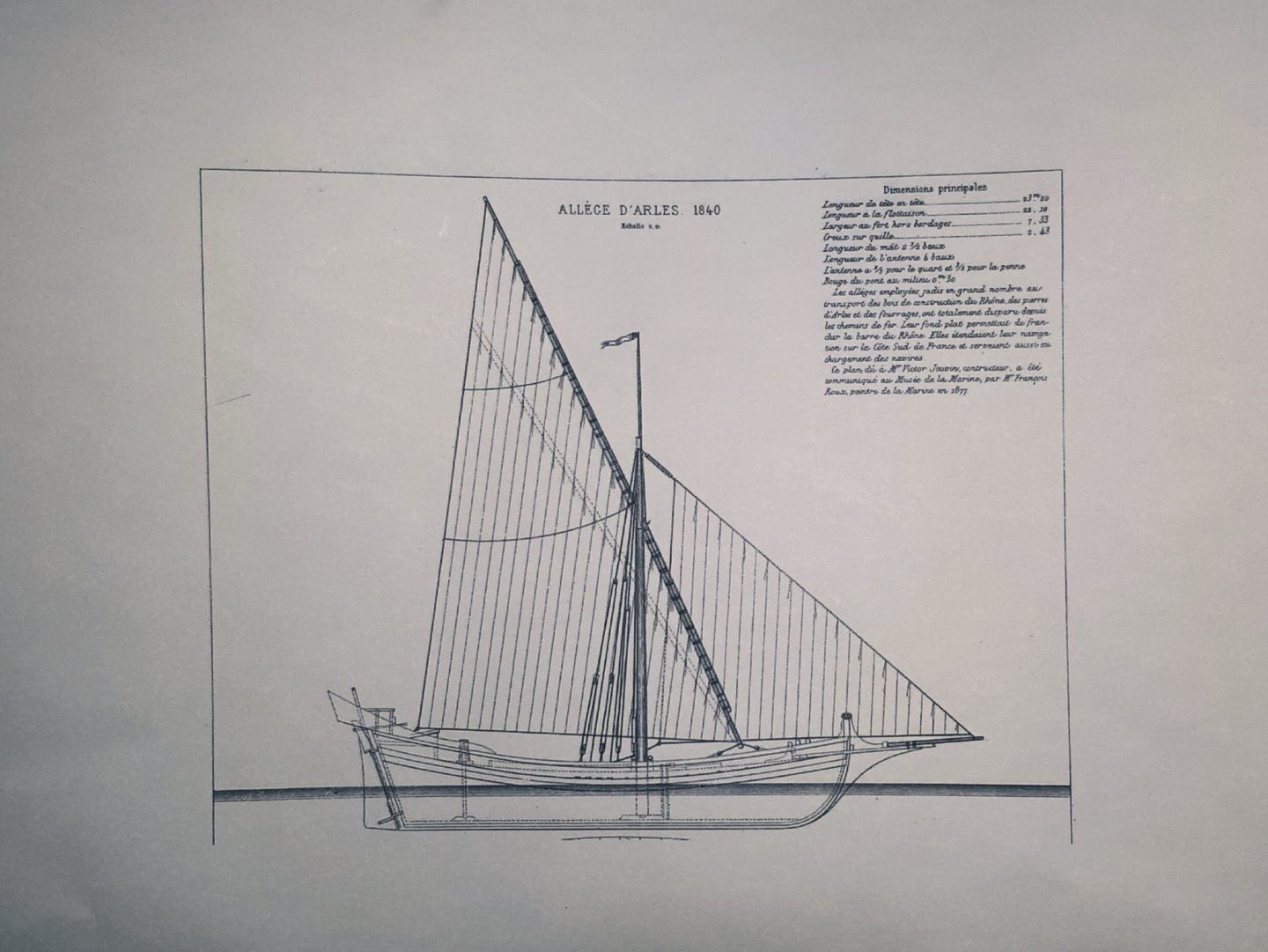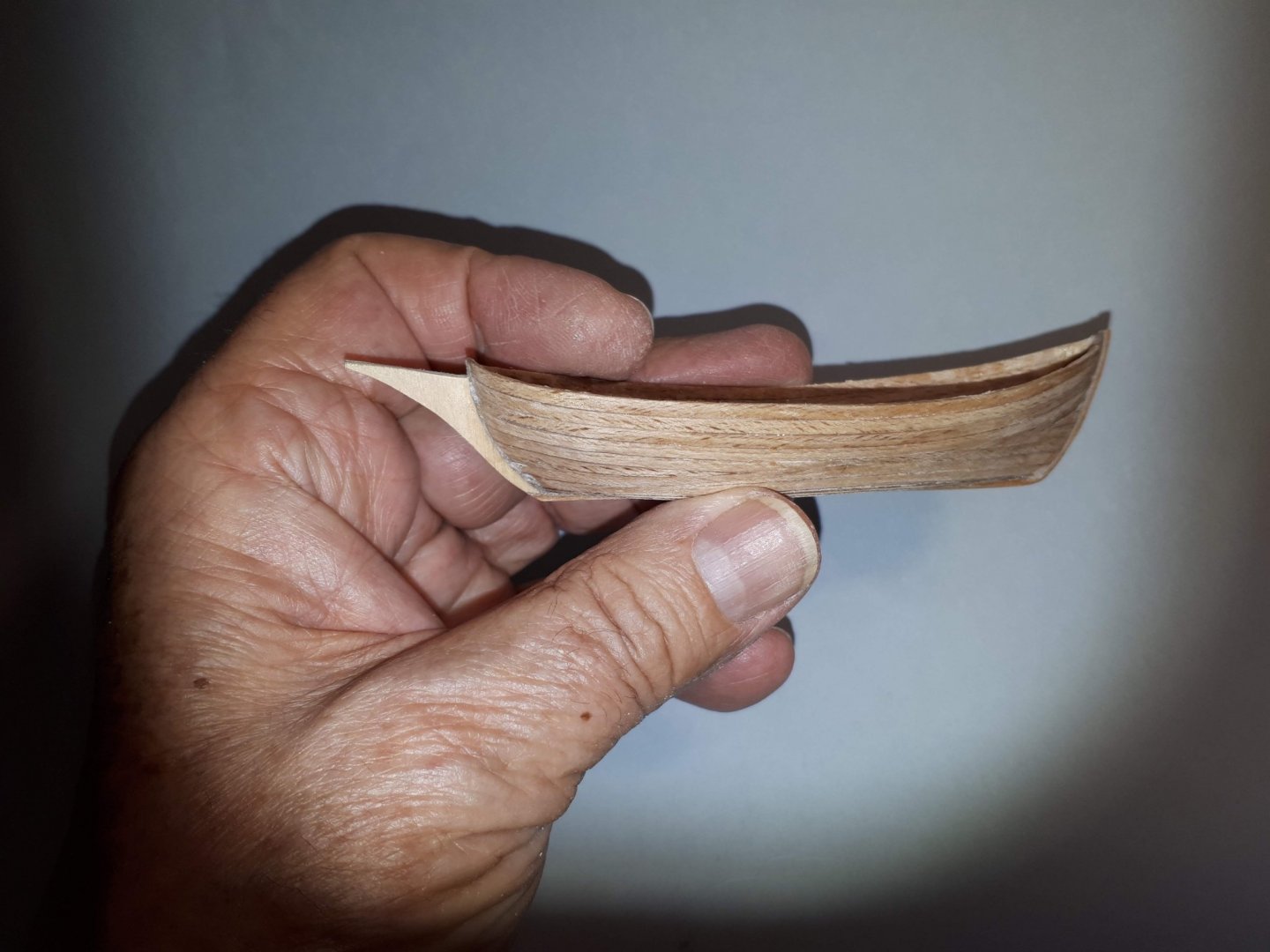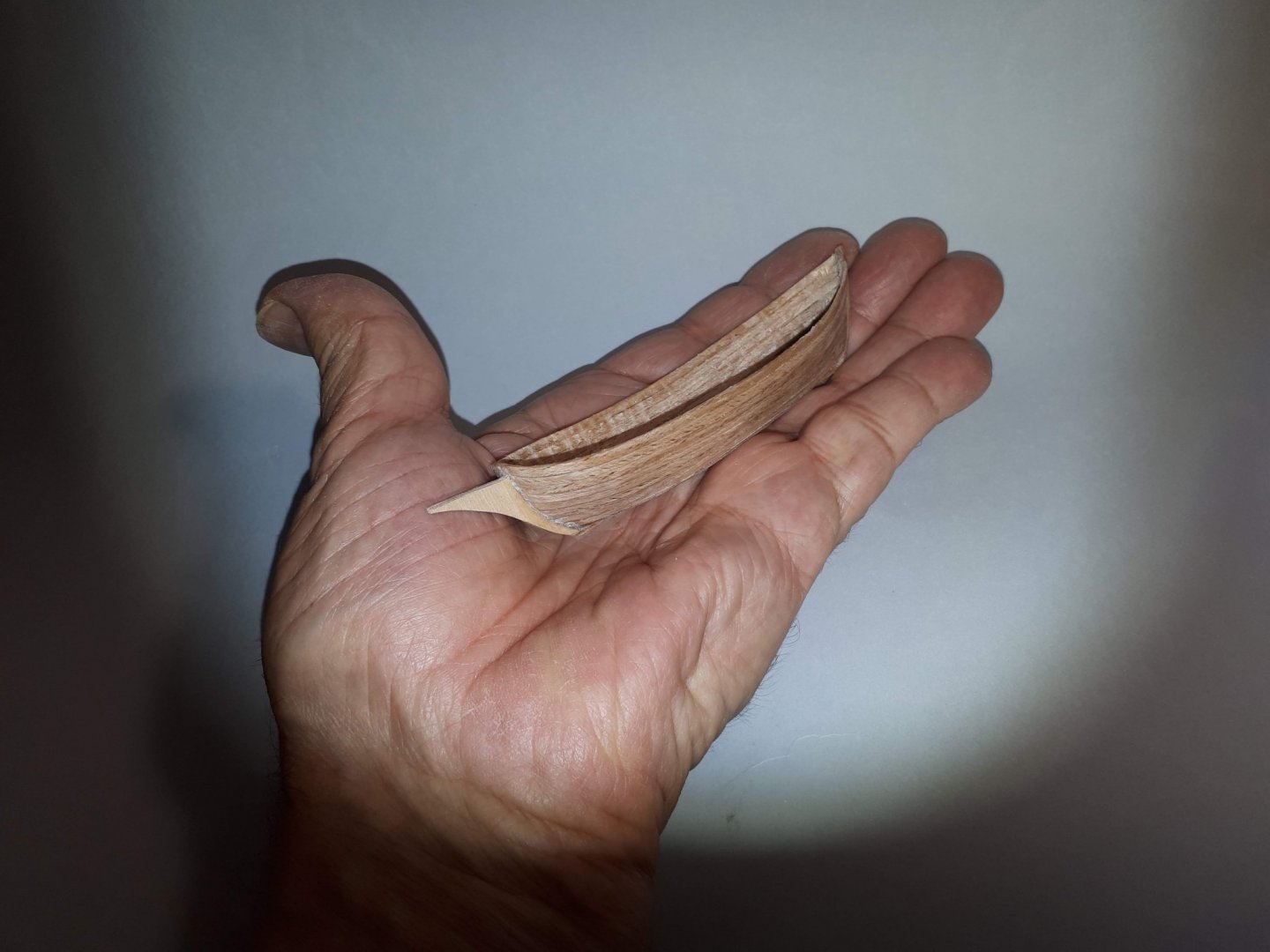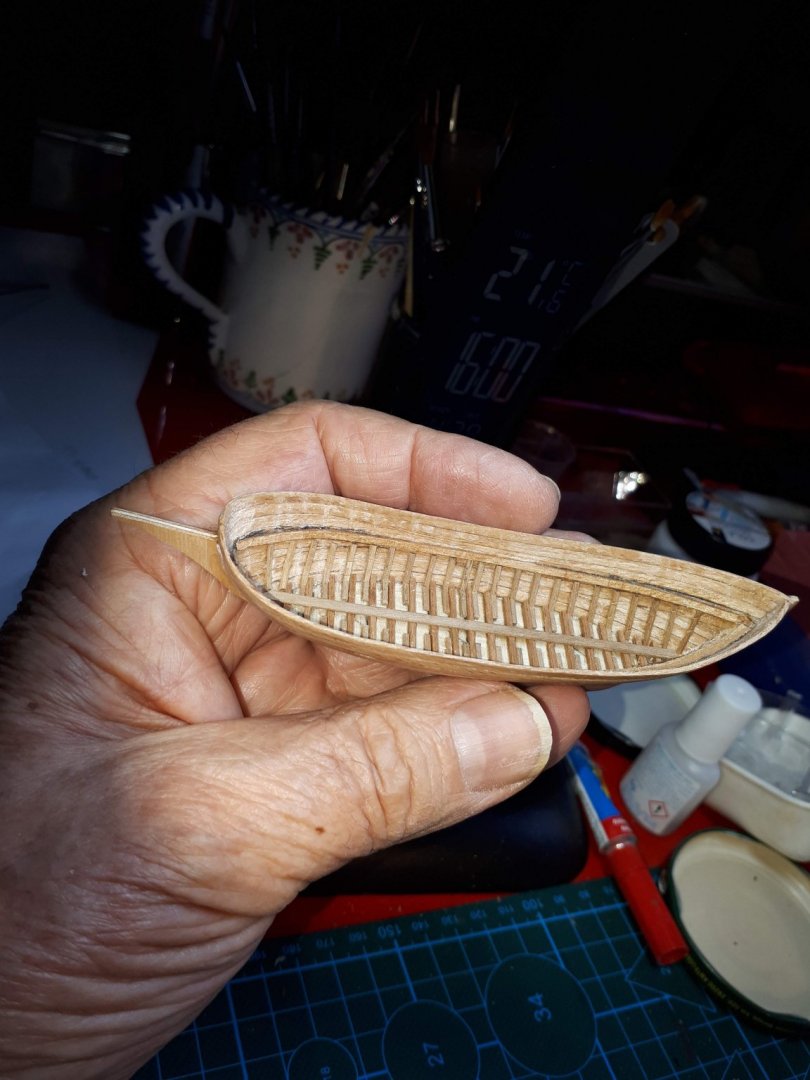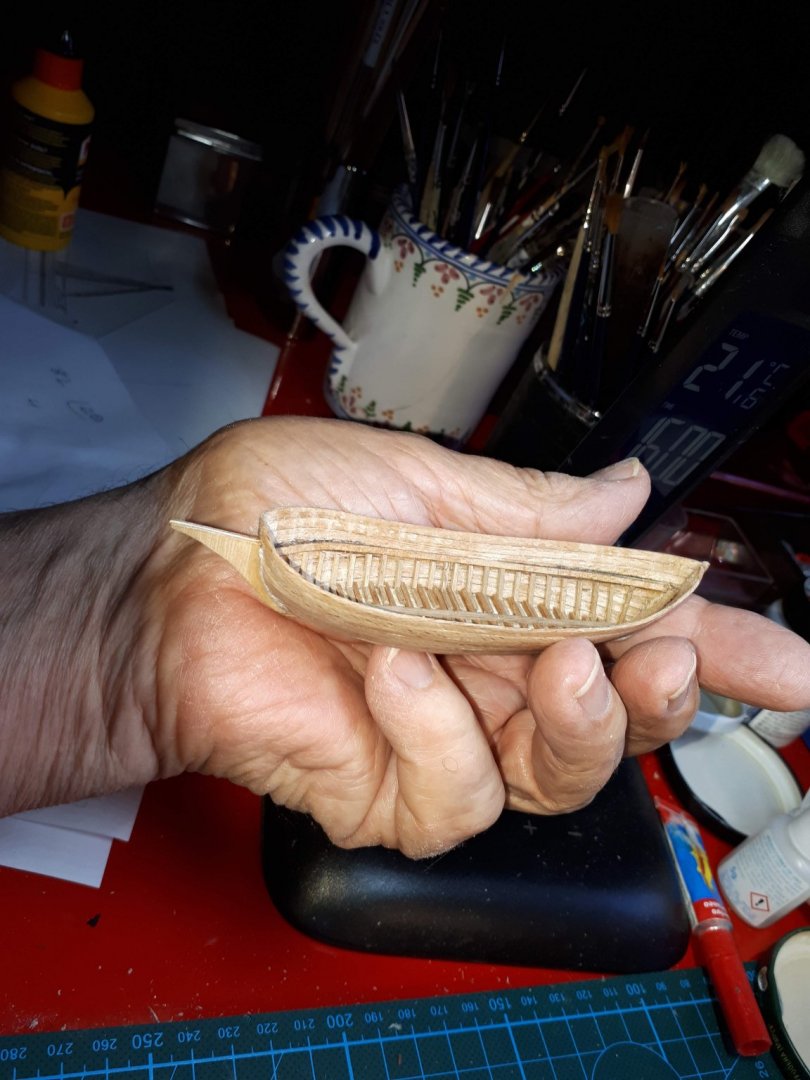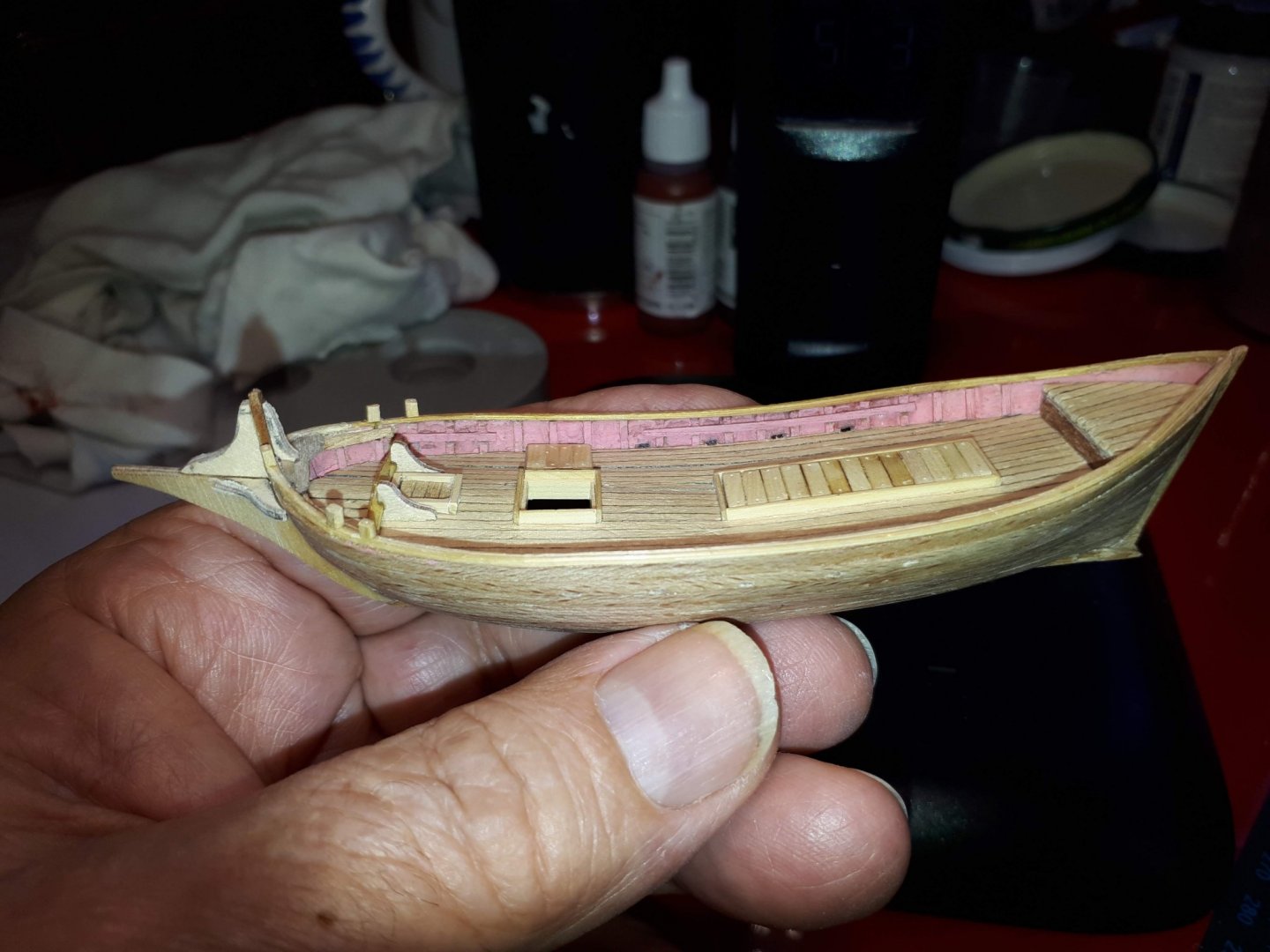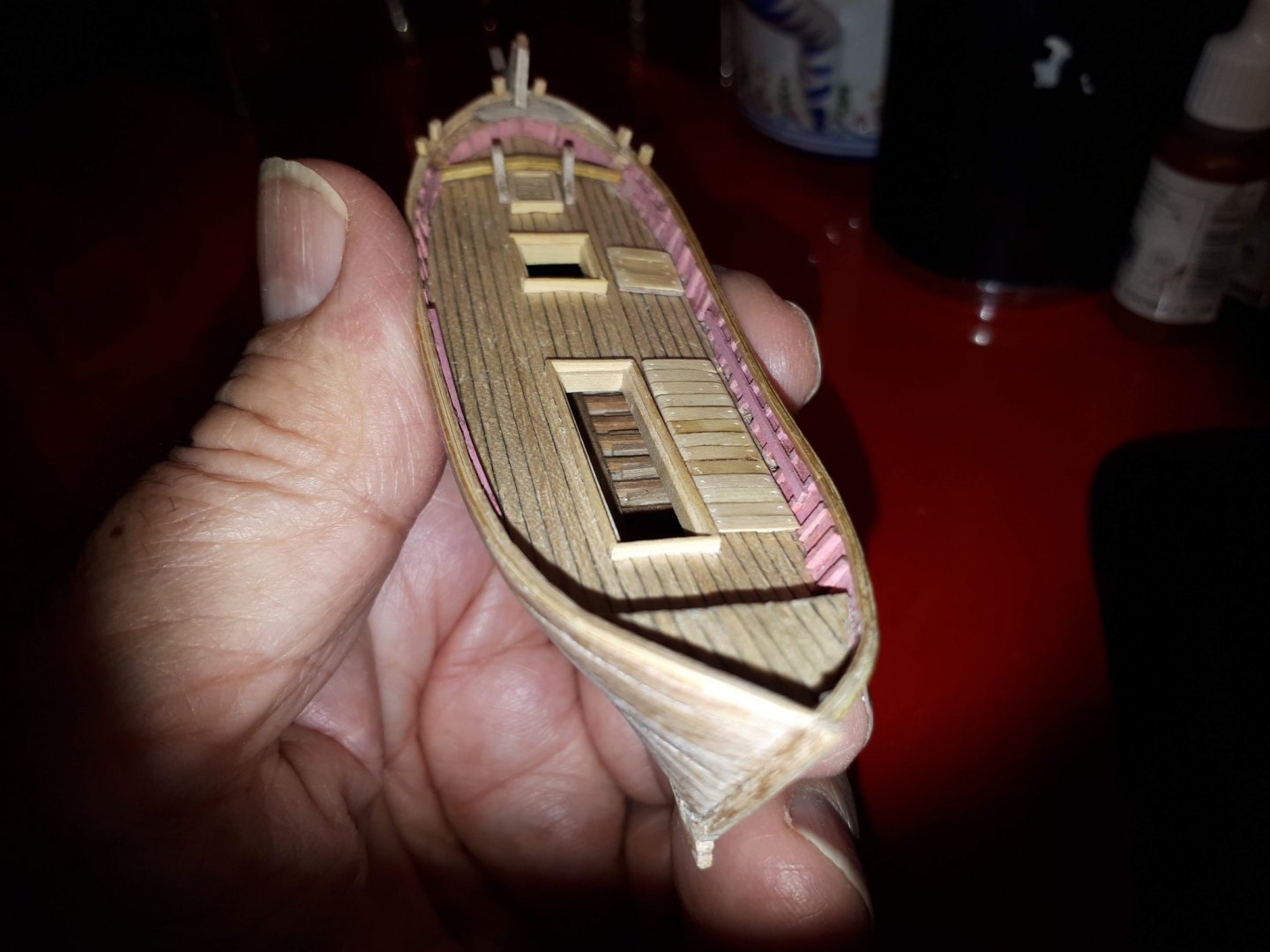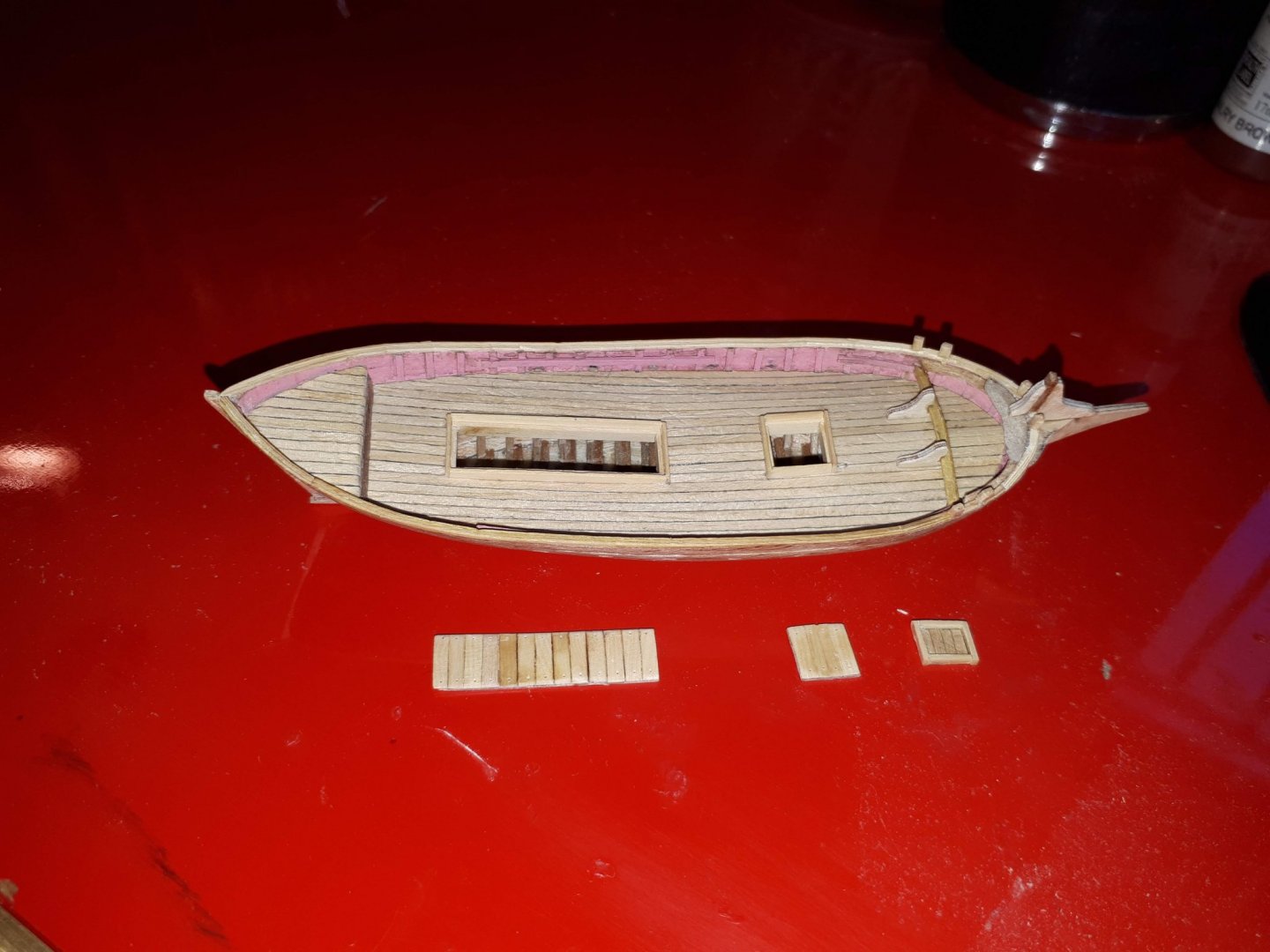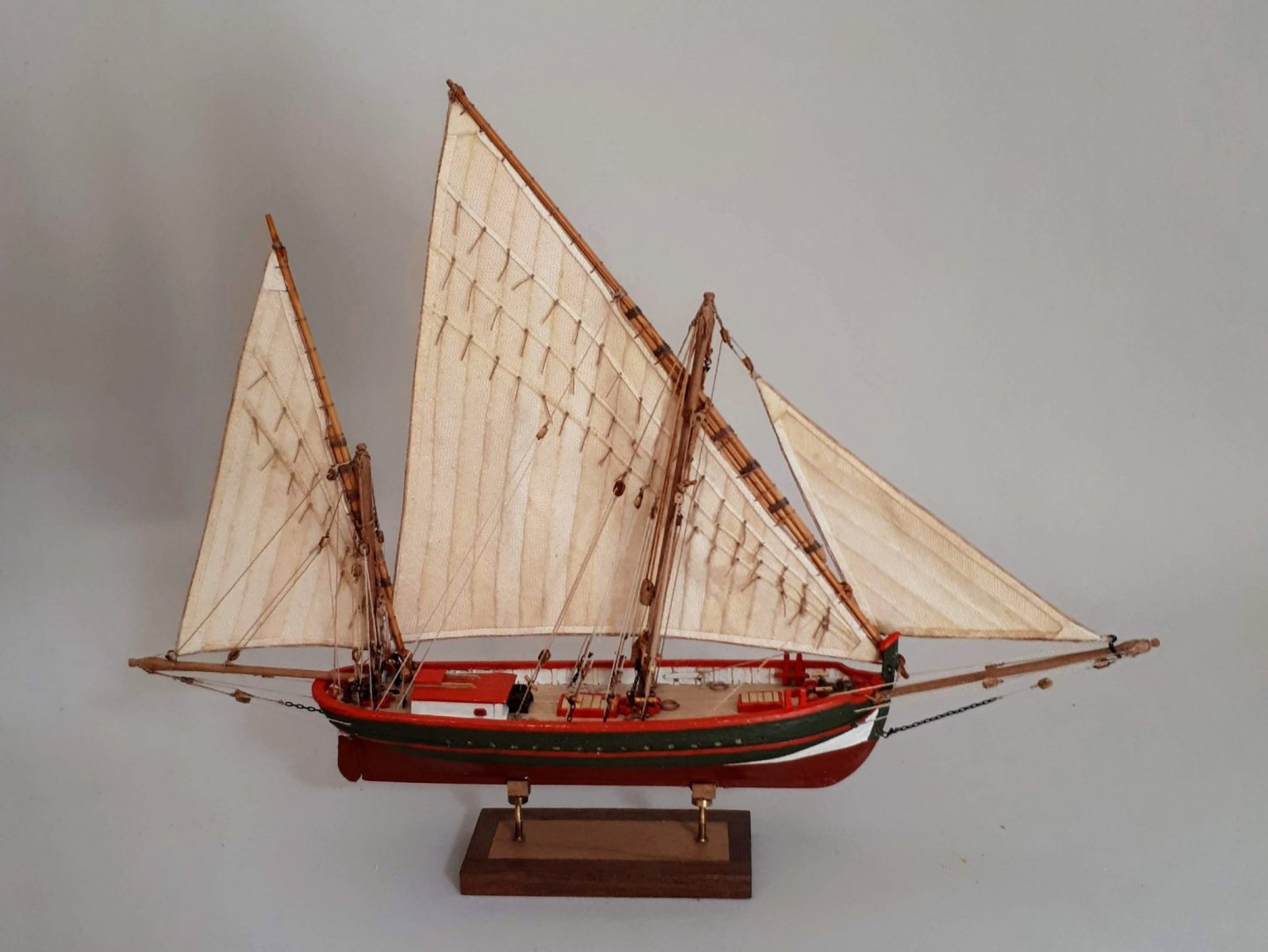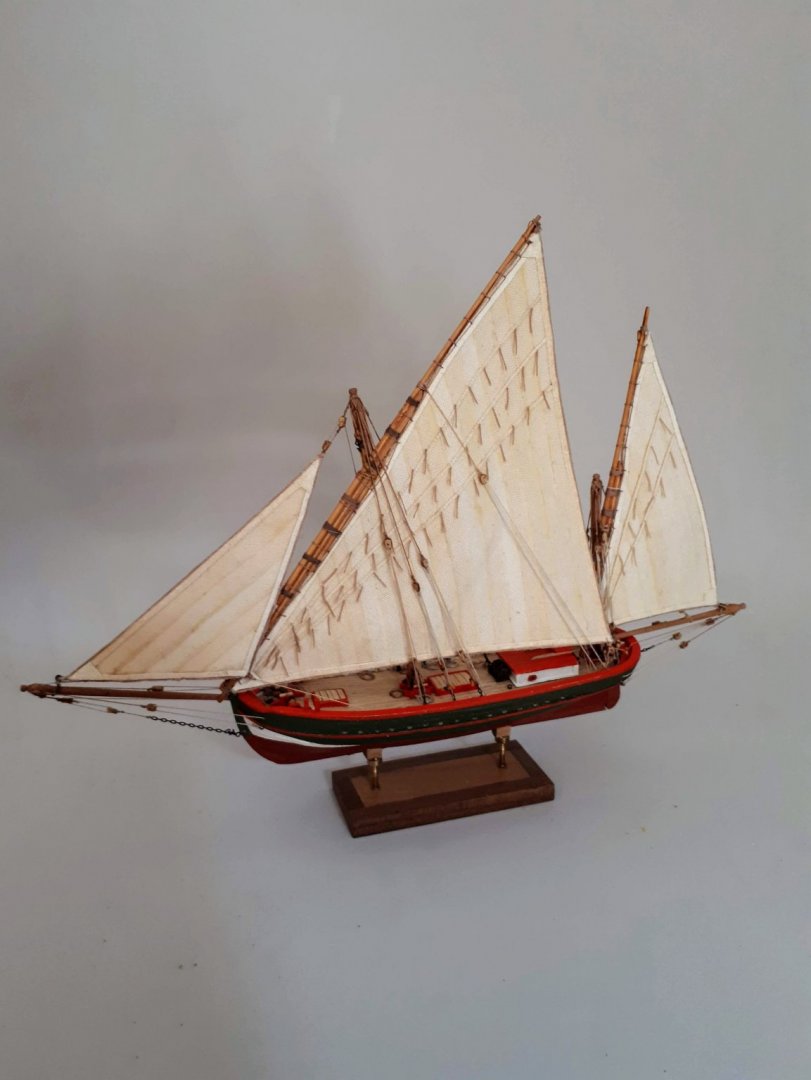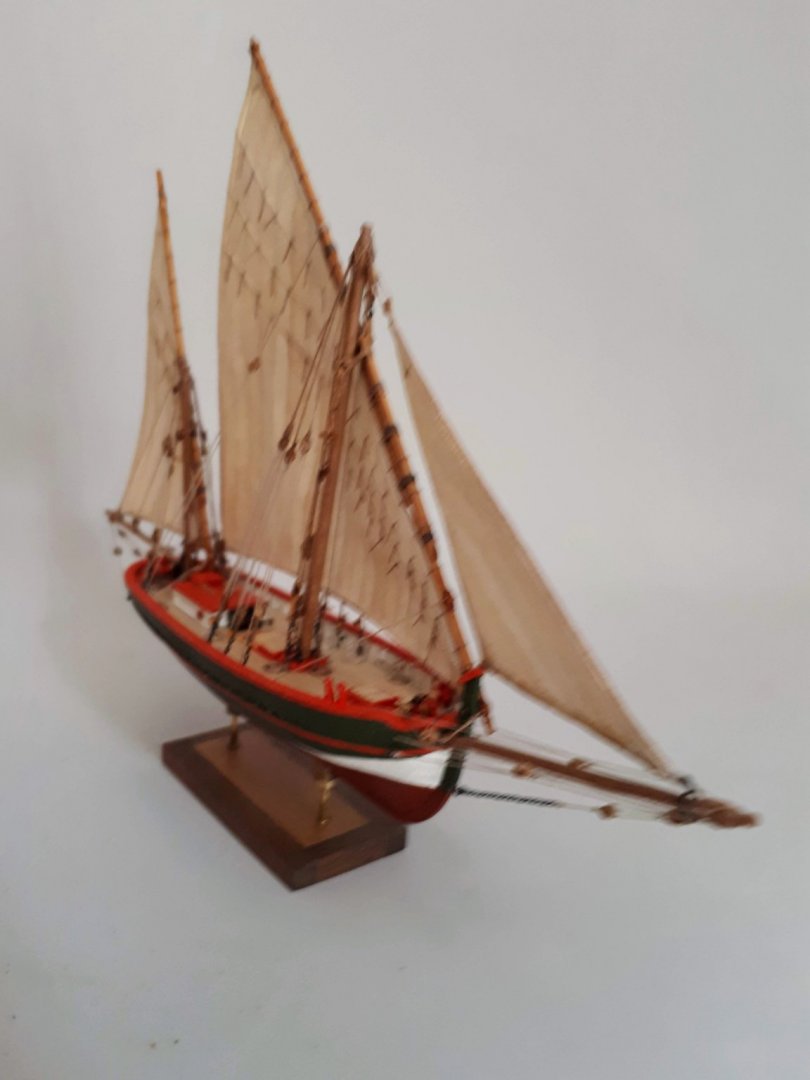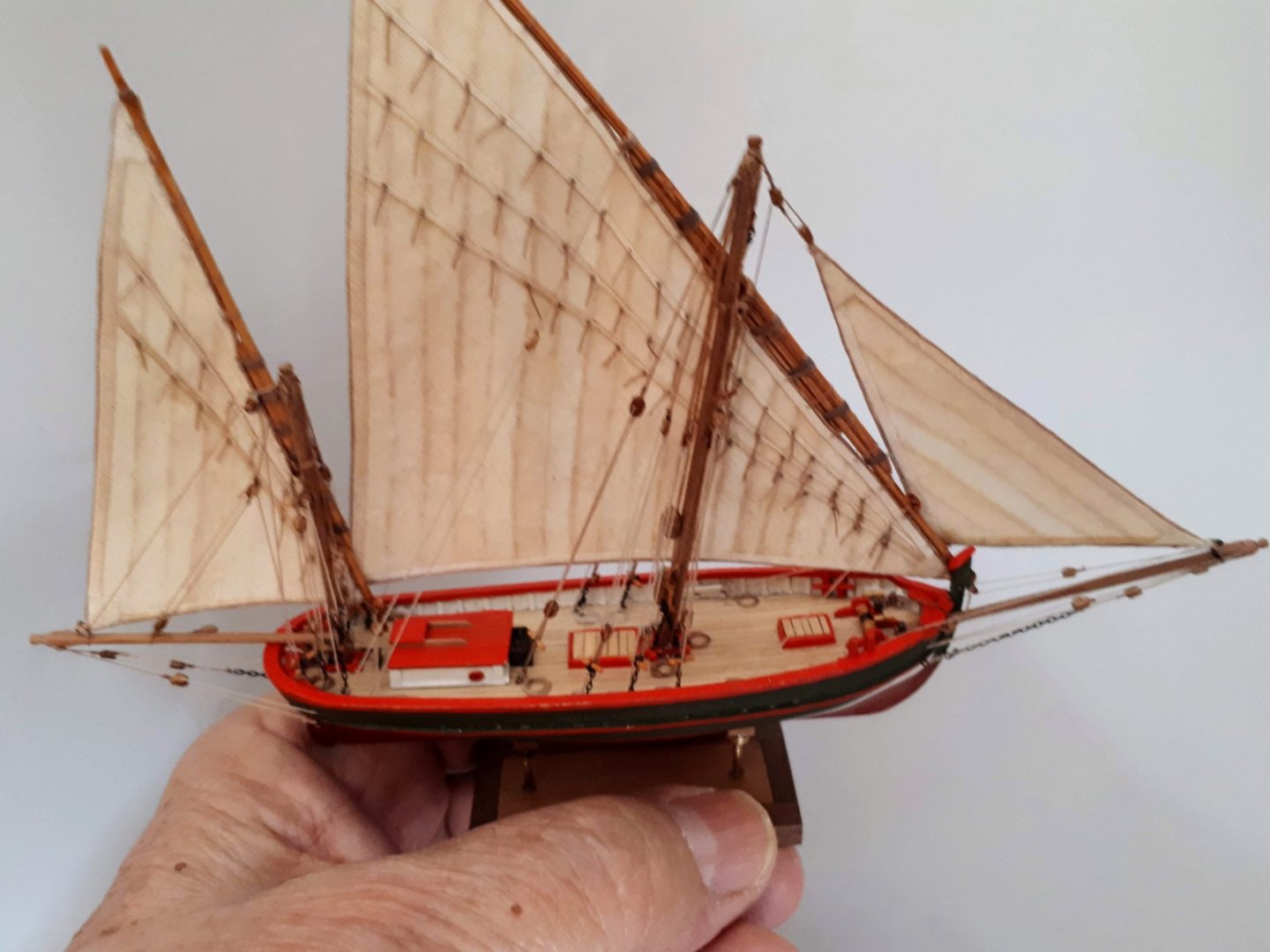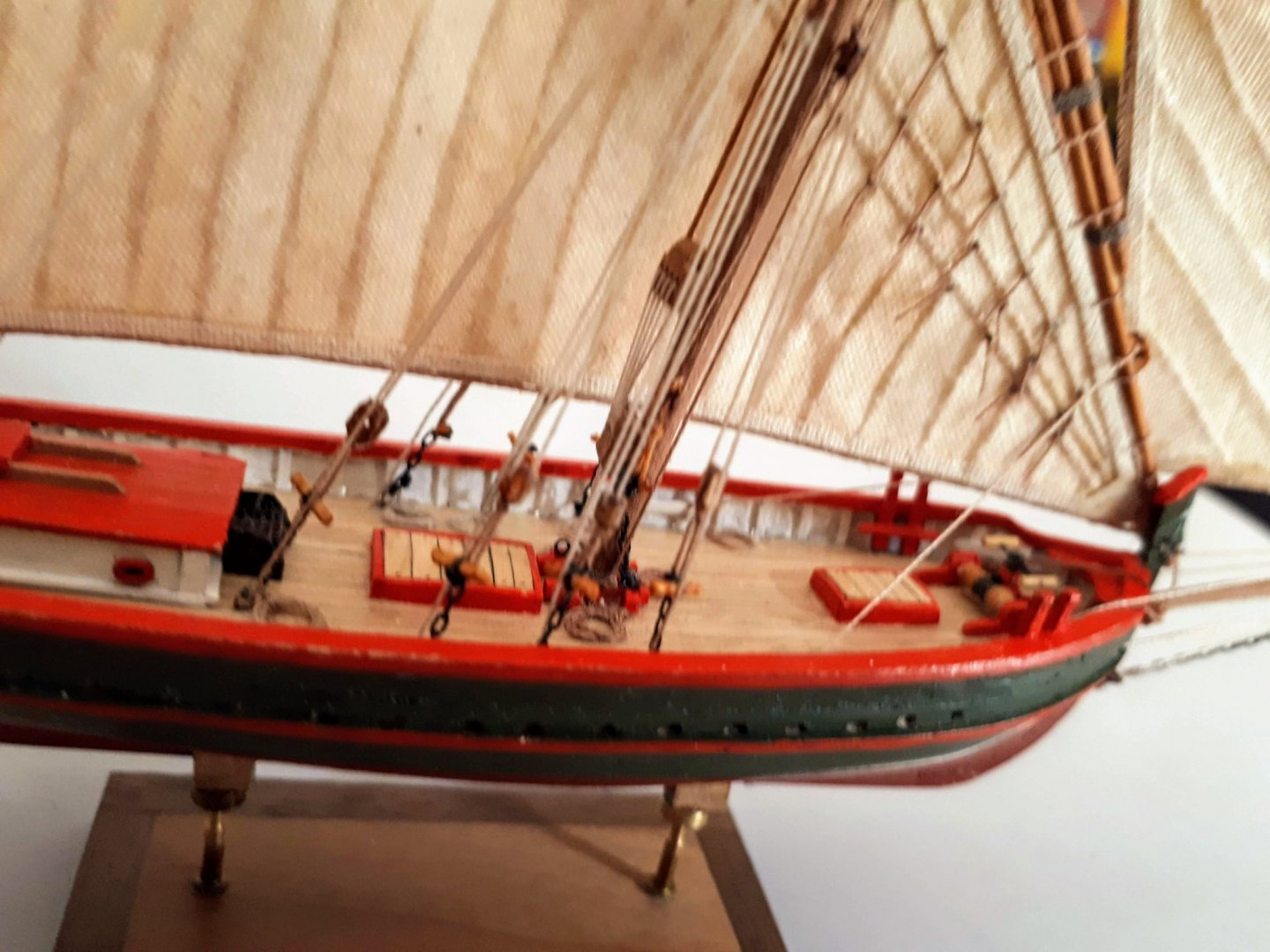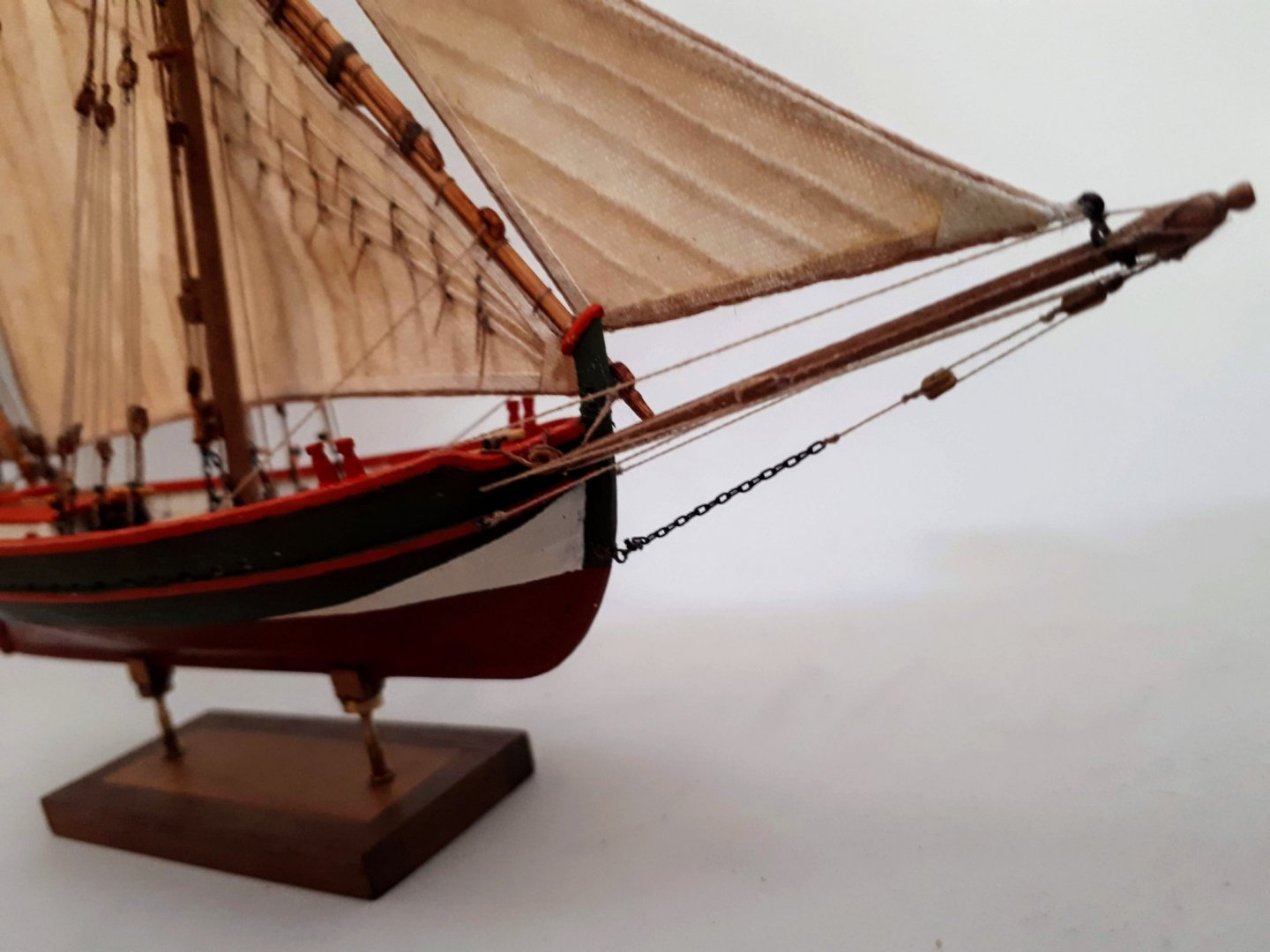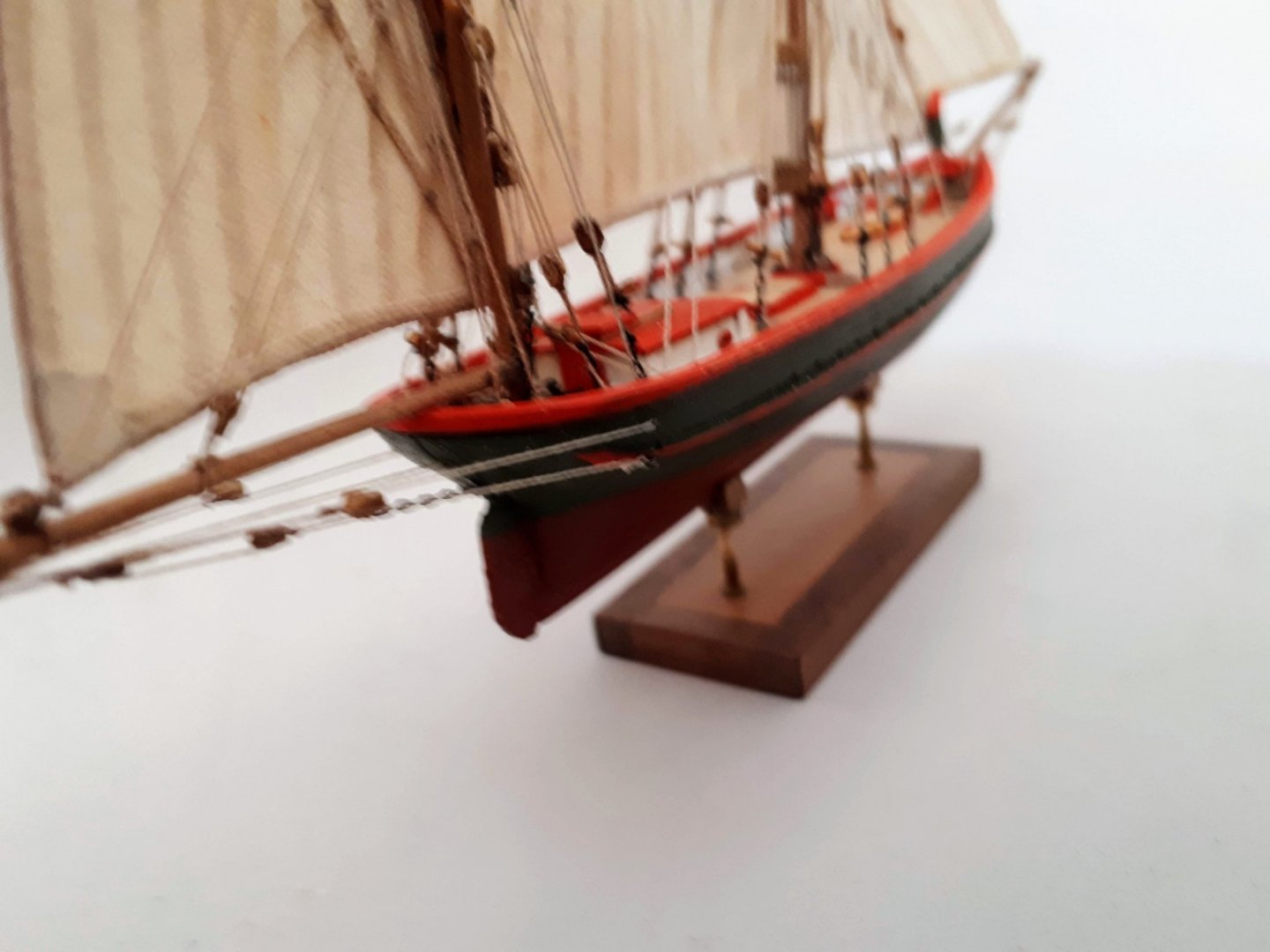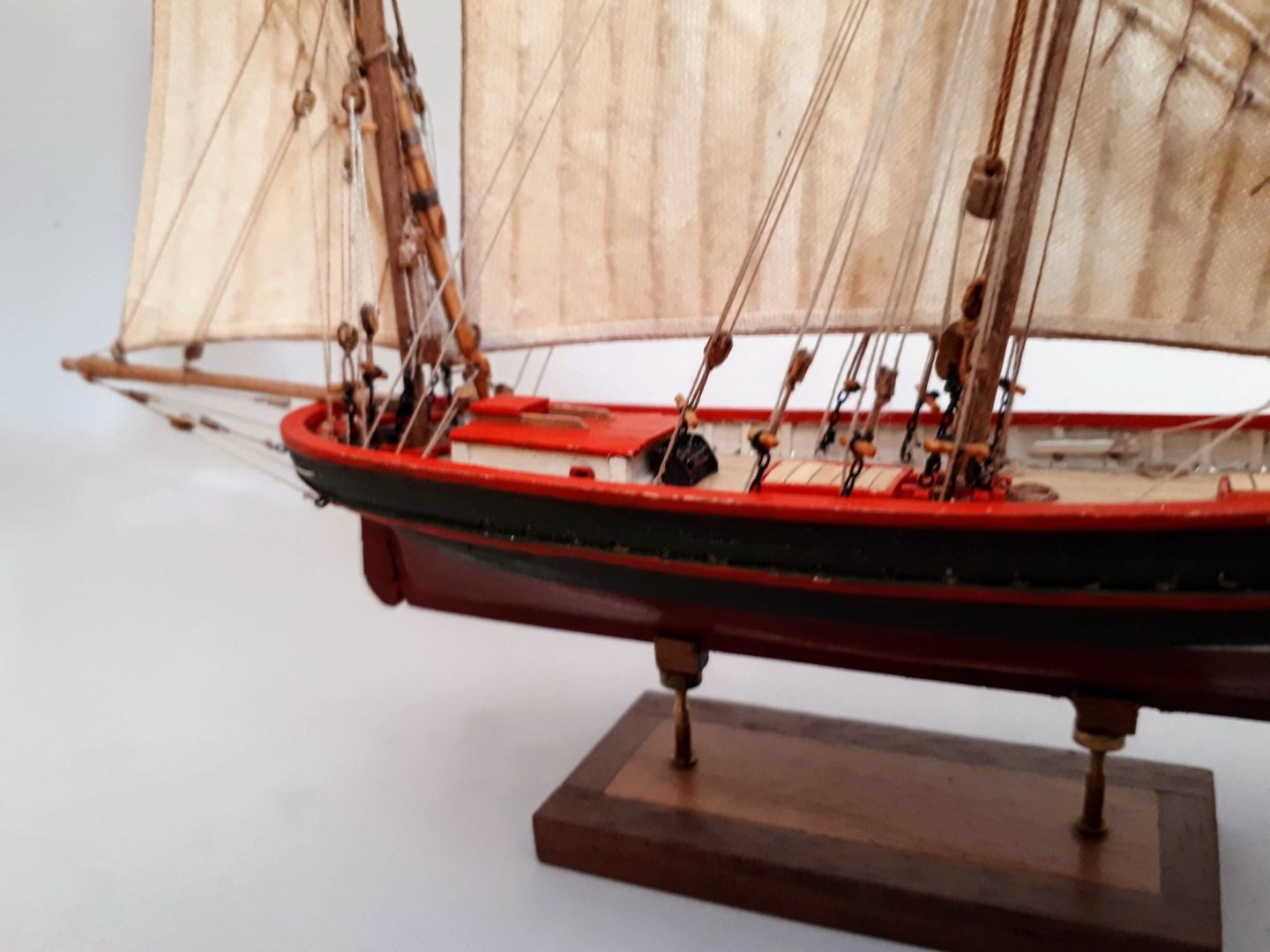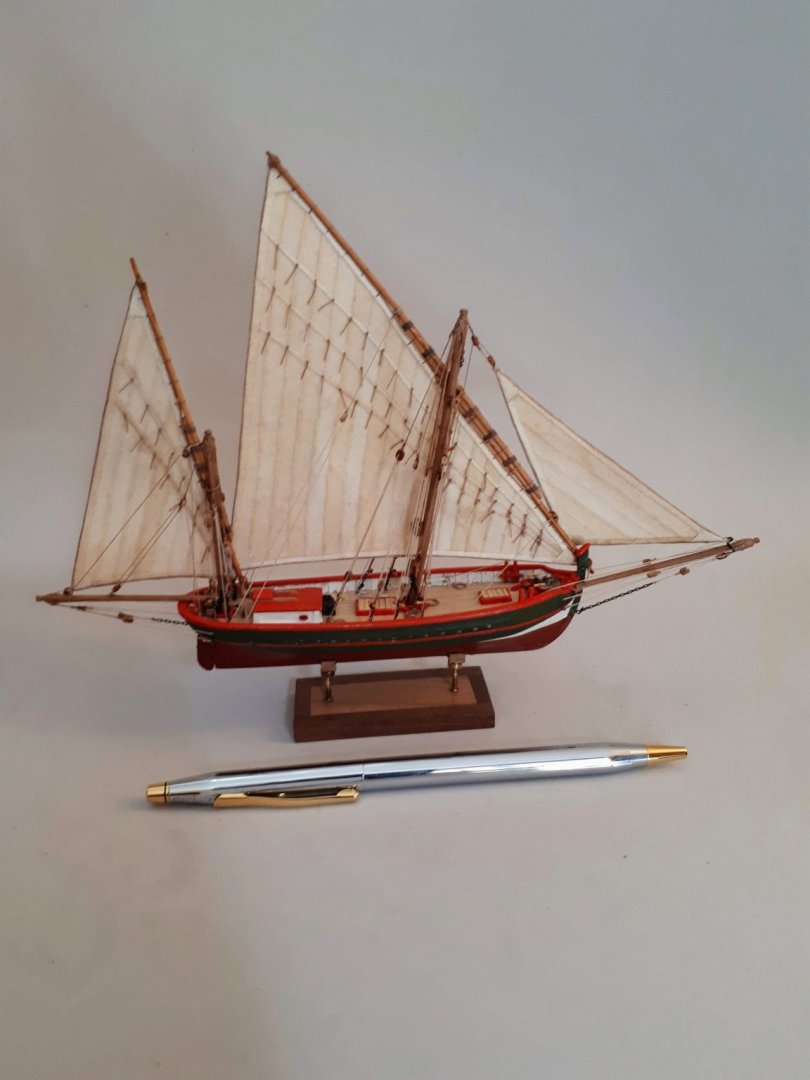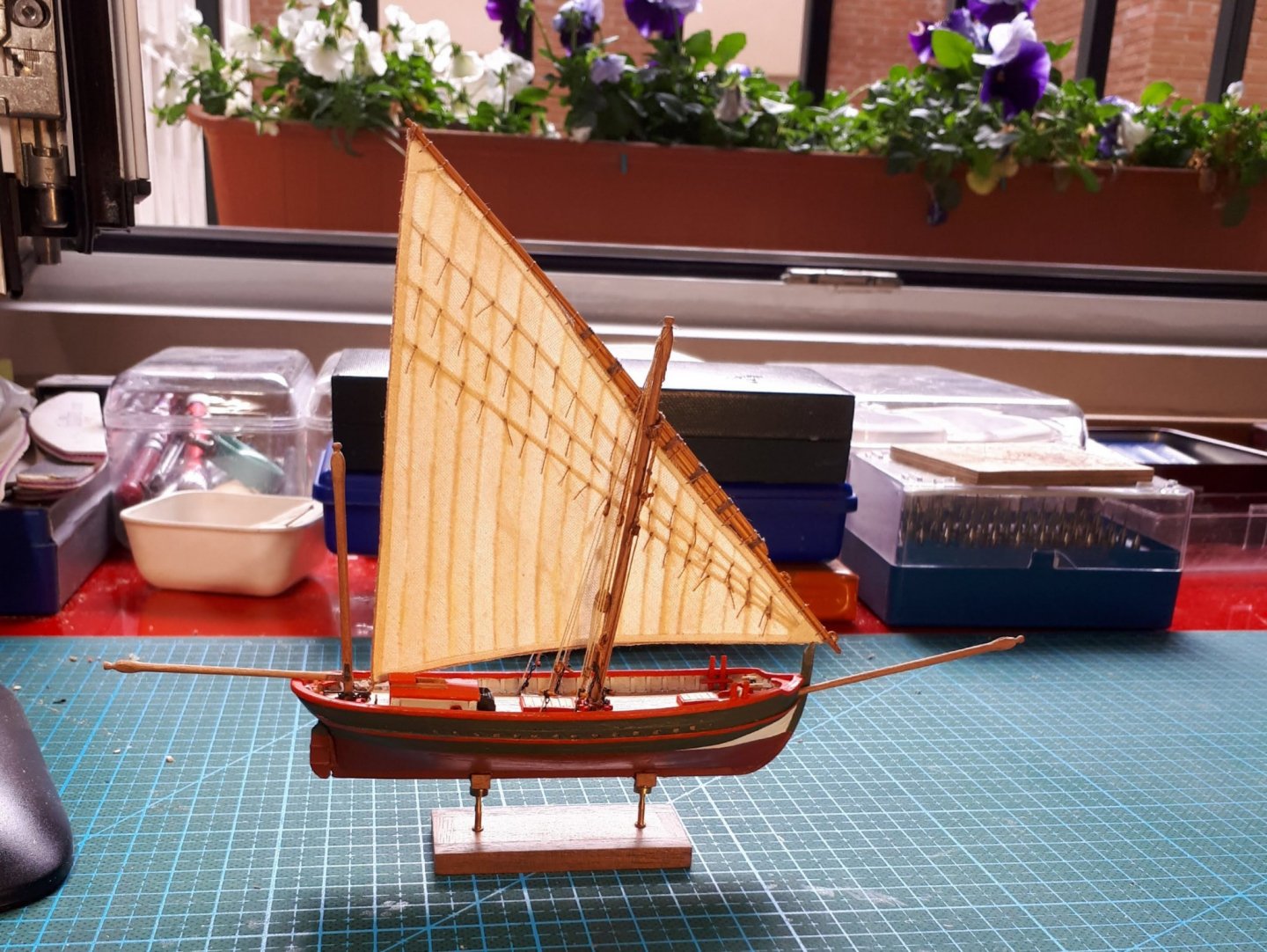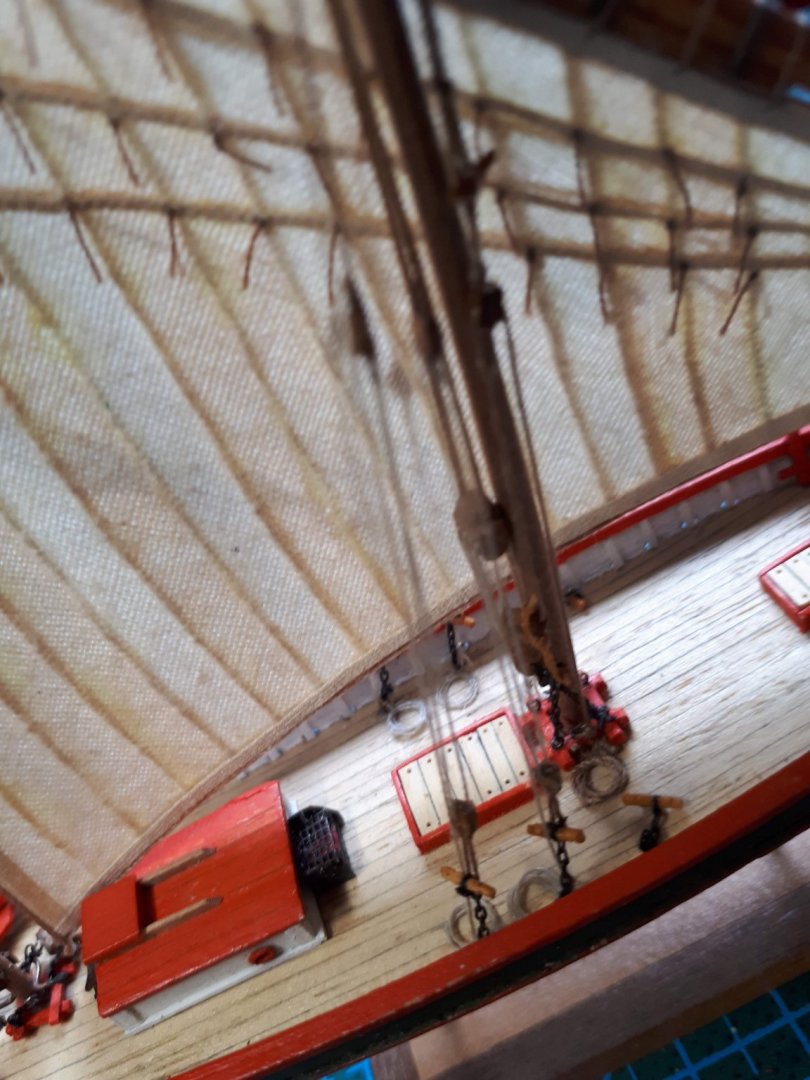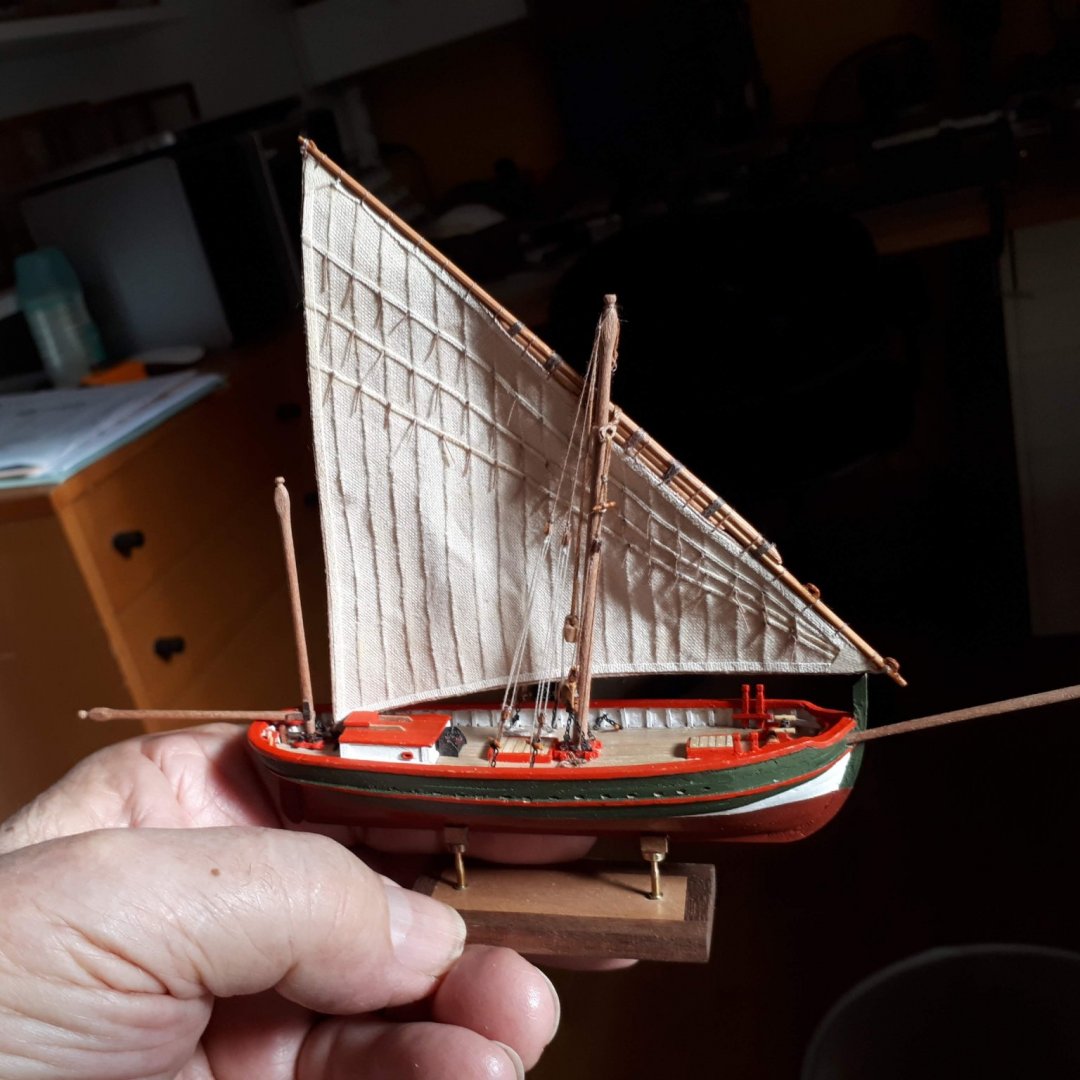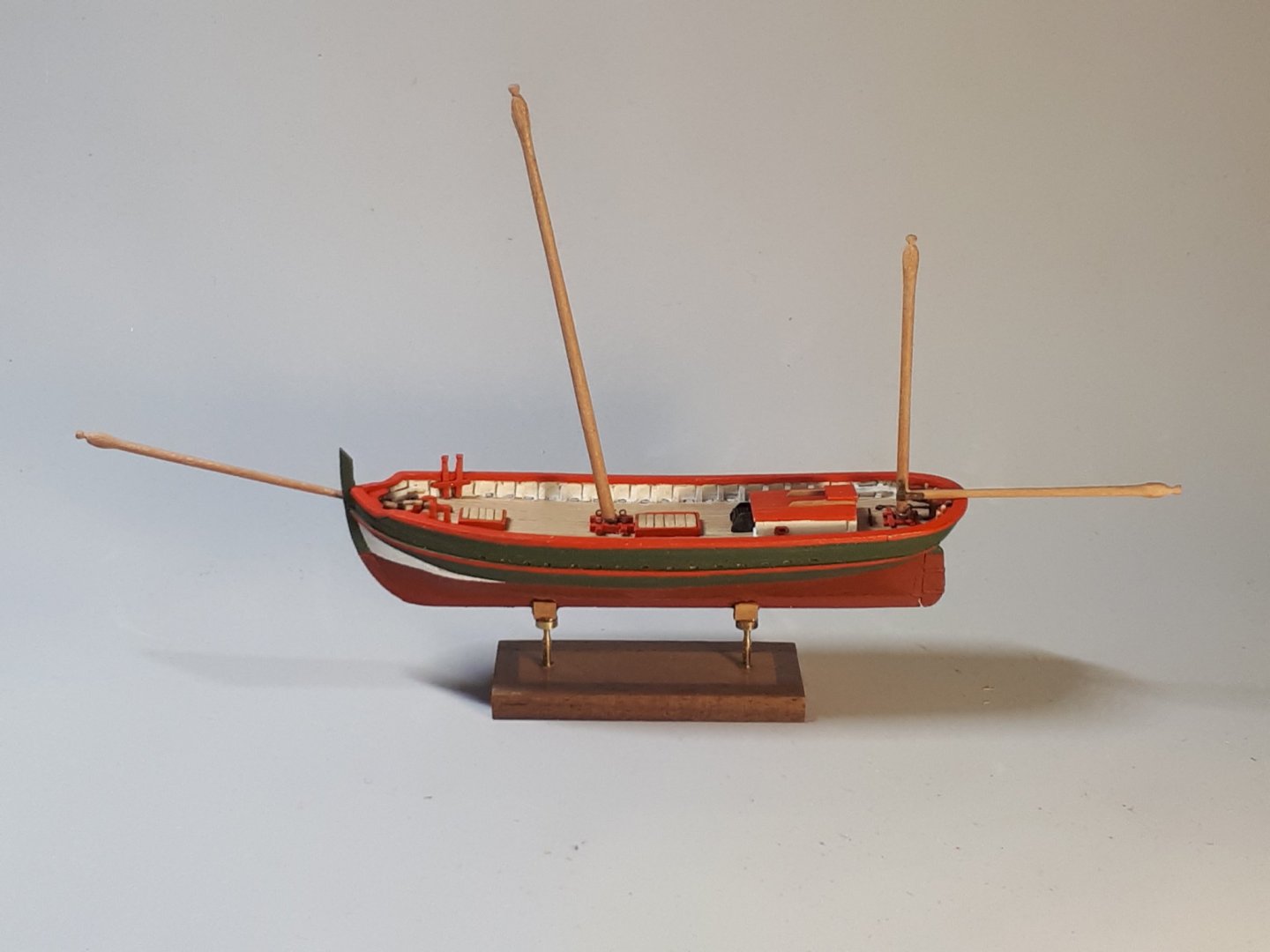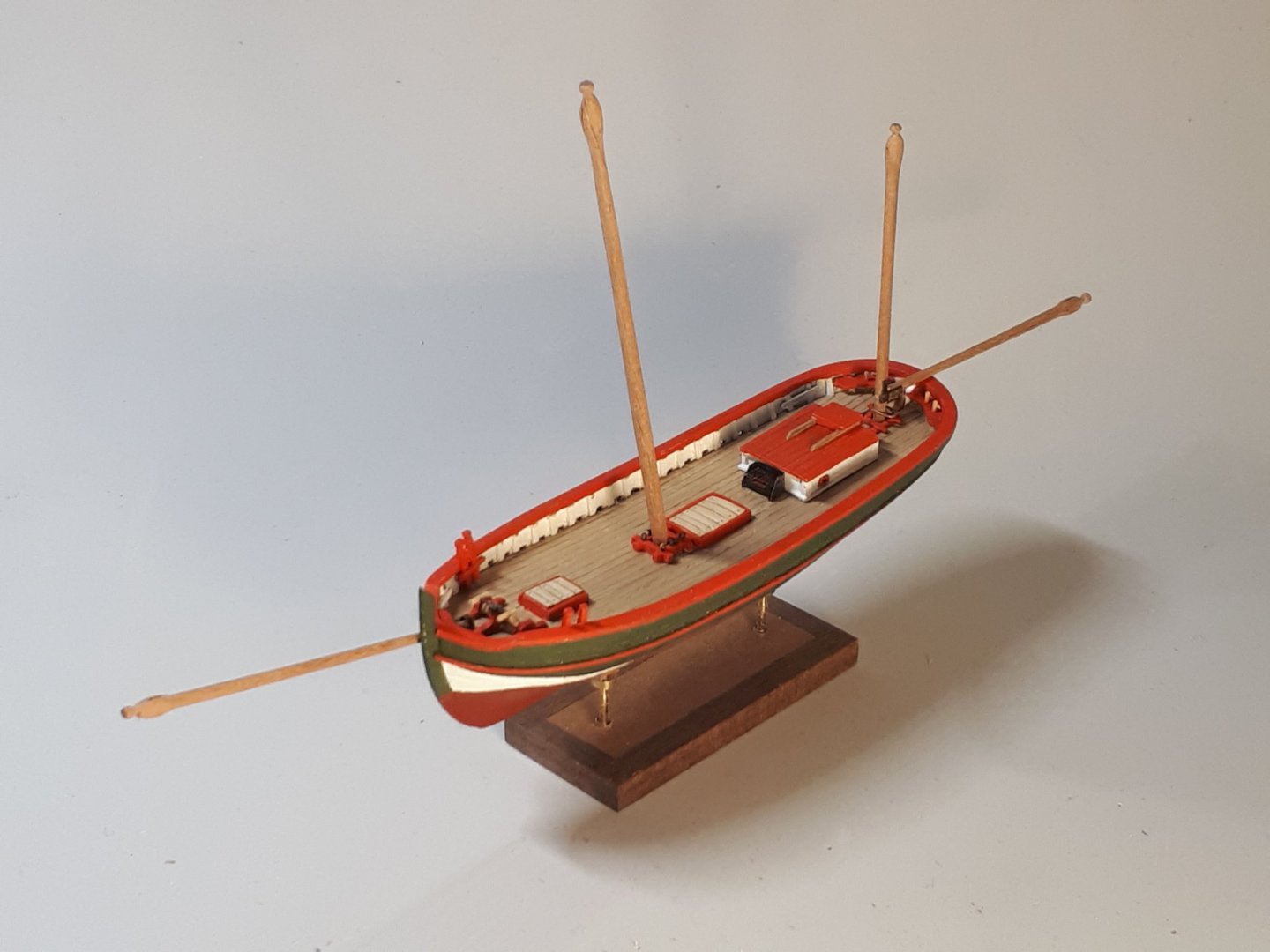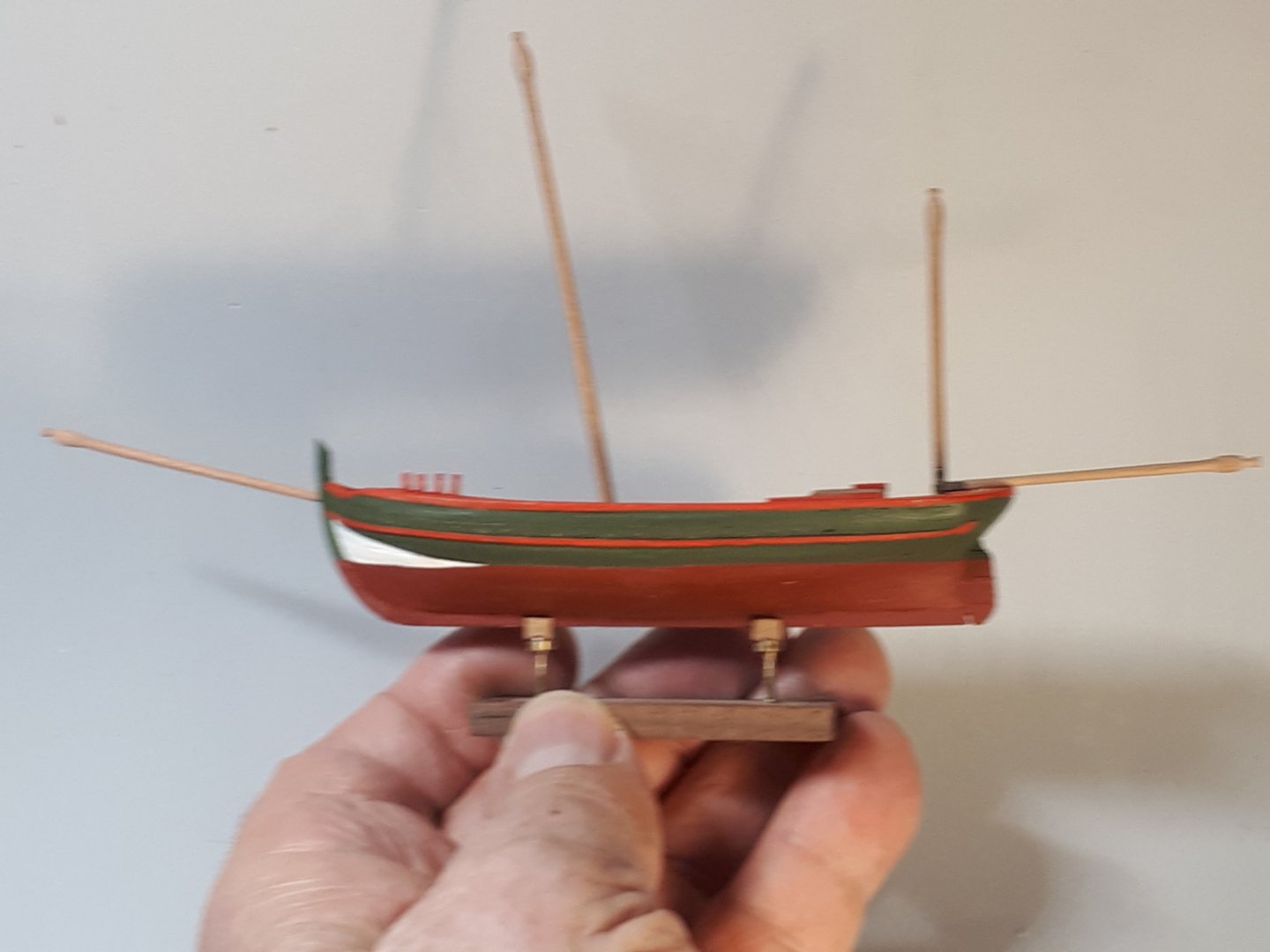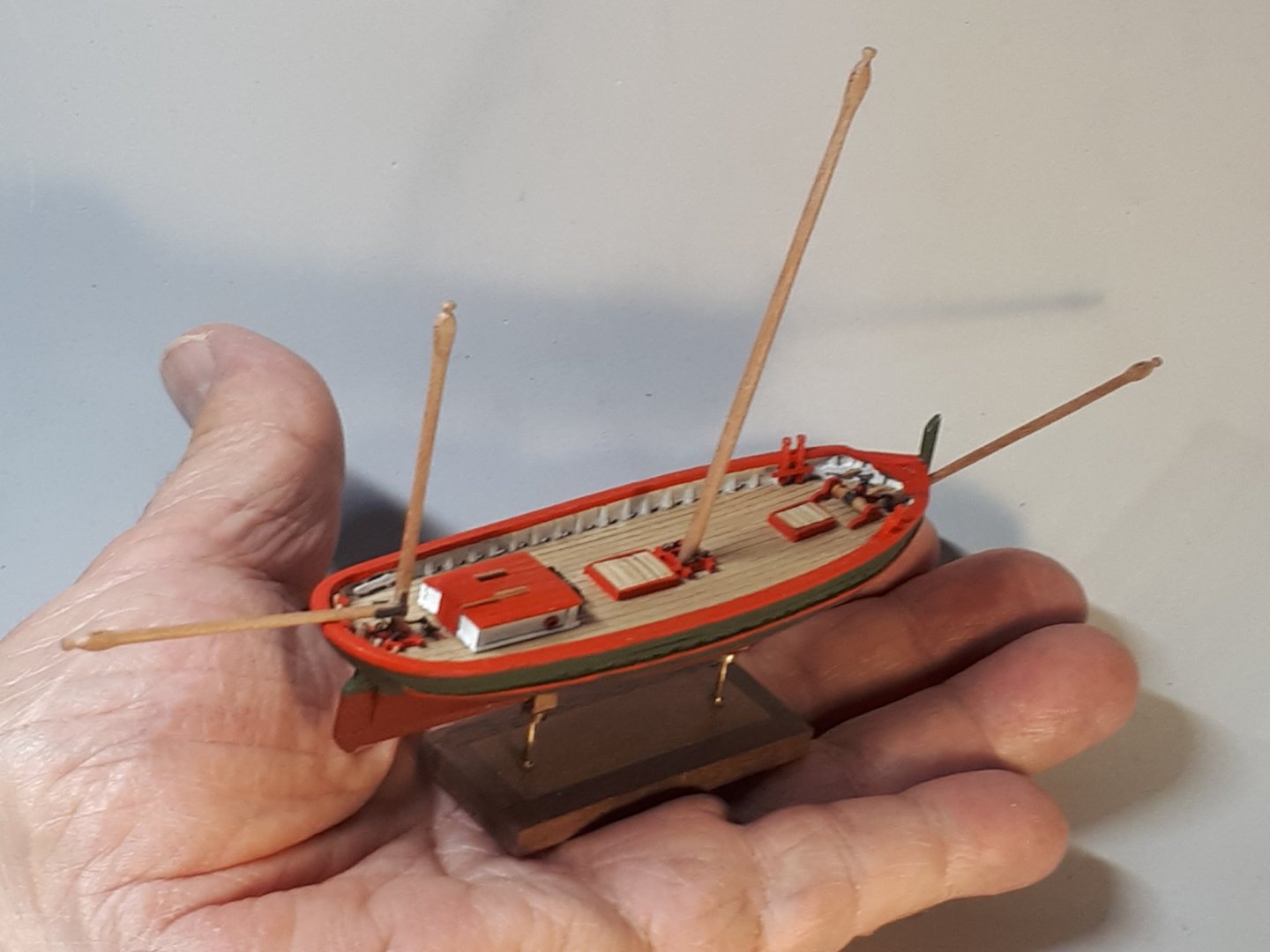-
Posts
744 -
Joined
-
Last visited
About Javier Baron
- Birthday 02/28/1948
Contact Methods
-
Website URL
barcosbaron.wordpress.com
Profile Information
-
Gender
Male
-
Location
Madrid - Spain
Recent Profile Visitors
-
LJxxx started following Javier Baron
-
Tony Hunt started following Javier Baron
-
sof7272 started following Javier Baron
-
Glen McGuire started following Javier Baron
-
PvG Aussie started following Javier Baron
-
wmherbert started following Javier Baron
-
JacquesCousteau started following Javier Baron
-
Niko started following Javier Baron
-
Mark-NS started following Javier Baron
-
Reverend Colonel started following Javier Baron
-
The Zeesenboot, is a central daggerboard boat up to 12 meters long and with good stability for sail fishing. The name derives from the fishing gear used, the "zeese". Built for shallow and relatively sheltered waters it is therefore very suitable for the shallow waters of Bodden. The Zeesenboot's range stretched from Lake Ribnitzer, through the Fischland-Darß-Zingst Bodden chain, past Hiddensee, Rügen, Strelasund and Greifswalder Bodden, to the mouth of the Peene. The centers of the Zeesenboot fishery were the Hanseatic city of Stralsund and the area around the city of Barth. Due to the emigration of Pomeranian fishermen, the Zeesenboot also reached the Salzhaff/Insel Poel/Wismarer Bucht region and southern Denmark, where the Zeesenboote are known as Åledrivkvase. Today the Zeesenboote are mainly used as pleasure sailboats and for tourist purposes. The hull of the Zeesenboot has wide and flat shapes and although it was originally clinker built, from the second half of the 19th century the carvel built was introduced. The lining is mainly made of oak (in Bodden waters), although larch wood was also used in the Wismar area and in Denmark. Initially the Zeesenboot were of open construction, until around 1860 the ships were half covered and a small cabin appeared in the bow. The boat had a low freeboard to facilitate hoisting the net bag on board, an operation carried out by only two fishermen. In many of the converted sports boats that survive today, the hull has subsequently been raised by one or two courses of strakes to raise the freeboard. Instead of a vertically profiled keel, Zeesenboots have a wide keeled sole that features a center daggerboard slot. The sole of the keel protrudes only a few centimeters from the hull, making the shape of the hull reminiscent of a walnut shell. When the daggerboard was stowed, the Zeesenboot could therefore drift into the wind carrying her bottom trawl.
-
- 15 replies
-
- fishing boat
- small boat
-
(and 1 more)
Tagged with:
-
- 15 replies
-
- fishing boat
- small boat
-
(and 1 more)
Tagged with:
-
I present a new model, although it is true that with its already advanced construction process. As I made the hull using my usual technique, which I have shown on the forum several times, there is no photo of this part of the process. It should also be noted that the masts are only presented and are not final, neither because of their length nor because of the inclination with which they appear. And now, by way of introduction, a brief historical overview of this type of boat. Until the end of the 19th century, in the region of Port-Louis, in Brittany, coastal fishing for roe sardines practiced in good weather was supplemented by winter trawling of other larger species. This task was carried out with solid open boats, of about 10 m. in length and 2.80 m. wide, with a draft of 0.70 m. The winter sea conditions are harsh in these waters, which makes it very difficult to work in the open air on these open boats, which is why, in 1882, a boss from Lorient took the initiative to equip his boat with a temporary deck, which is armed against winter and disassembled in good weather. In turn, as coastal fishing became more and more scarce, fishermen went deeper and deeper into the open sea, and soon these removable deck boats began to be used for trawling in rougher waters, for which they did not present the adequate nautical characteristics. For this reason, in a short time the deck boats evolved, with a permanent deck, but they were made with the same shapes as the large open boats, retaining their main U-shaped section, but providing them with a planking above and solidly decked, fitted with a windlass and higher masts, so all the weight was added at the top and had to be balanced with ballast. But the maintenance of the main U-shaped section prevented placing this ballast (essential in a trawler) sufficiently low. In addition, the righting moment of a hull of this U-section has a high initial stability which decreases very quickly with pronounced angles of inclination, which makes these ships very sensitive high waves and sea blows. These decked boats, with an elegant appearance, showed that their nautical qualities were not adequate for the conditions of navigation on the high seas. Between 1891 and 1900, eleven of them were shipwrecked, resulting in the stoppage of their production and their replacement by small dundées, which prove to be much safer.
- 15 replies
-
- fishing boat
- small boat
-
(and 1 more)
Tagged with:
-
This boat was a tartana of fluvial origin that was built in the Rhône region, near Condrieu, Beaucaire, Arlez and Martigues. Thanks to its low draft and its robustness, they became a fundamental element in the development of the region, creating a large fleet that had at the time of its heyday, in 1845, 125 boats, which were used both for transportation construction materials (wood, stone, aggregates) as well as the unloading of ships that could not pass at full load through the bars of the Rhone delta. At times, they also made maritime navigation through the Mediterranean, to Marseilles, Toulon and other towns in Languedoc, Roussillon and Provence. The appearance of the railway as a means of transport led to the disappearance of the "allèges" in the late 19th century.
About us
Modelshipworld - Advancing Ship Modeling through Research
SSL Secured
Your security is important for us so this Website is SSL-Secured
NRG Mailing Address
Nautical Research Guild
237 South Lincoln Street
Westmont IL, 60559-1917
Model Ship World ® and the MSW logo are Registered Trademarks, and belong to the Nautical Research Guild (United States Patent and Trademark Office: No. 6,929,264 & No. 6,929,274, registered Dec. 20, 2022)
Helpful Links
About the NRG
If you enjoy building ship models that are historically accurate as well as beautiful, then The Nautical Research Guild (NRG) is just right for you.
The Guild is a non-profit educational organization whose mission is to “Advance Ship Modeling Through Research”. We provide support to our members in their efforts to raise the quality of their model ships.
The Nautical Research Guild has published our world-renowned quarterly magazine, The Nautical Research Journal, since 1955. The pages of the Journal are full of articles by accomplished ship modelers who show you how they create those exquisite details on their models, and by maritime historians who show you the correct details to build. The Journal is available in both print and digital editions. Go to the NRG web site (www.thenrg.org) to download a complimentary digital copy of the Journal. The NRG also publishes plan sets, books and compilations of back issues of the Journal and the former Ships in Scale and Model Ship Builder magazines.











